



Featured image: UBERMORGEN, CCTV, A Parallel Universe, (2013)
Rachel Falconer’s article is written in response to an interview conducted with lizvlx and Hans Bernhard from Ubermorgen. ‘userunfriendly’ is their first solo exhibition in London and presents a performative study of creeping paranoia. It is on show at Caroll/Fletcher Gallery through October until 16th November 2013.
“You one of those right wing nut outfits?” inquired the diplomatic Metzger. Fallopian twinkled. “They accuse us of being paranoids.” “They?” inquired Metzger, twinkling also. “Us?” asked Oedipa. The Crying of Lot 49 [1]
The Edward Snowden soap opera is far from over as the media and social commentators continue to perform a one-way polylogue with the absconded, muted Snowden. The furore and essentialist reactions directed towards Snowden, the latest in a burgeoning breed of leaky information gatekeepers, has resulted in a pervading sense of neuroses creeping across the digital commons. One of the many media stunts to emerge from this backdrop of encroaching paranoia was Kevin Poulsen’s encrypted open letter to Snowden on the Wired website [2] . With the theatrical opening gambit of: “Don’t read this if you aren’t him”, this mimetic conceptual poke served only to simulate a tunnel vision debate about the authenticity of the encryption, and several bravado attempts to crack the PGP key.
The Snowden case is symptomatic of our current condition of post-panoptic surveillance, whereby practices of data and behavior tracking have led to an extension of Foucault’s panoptic theories beyond the notion of hierarchical surveillance. Recent debates about post-panoptic practices indicate a shift from direct, embodied surveillance, to distributed, mobile surveillance manifested in the likes of PRISM, XKeystore and Tempra. The normalization of the “need to watch and be watched” generated by our information society is ruptured in this instance by Snowden.
The combination of public outcry – exemplified by the recent anti-surveillance march in Washington – and the intensified interest in the phenomenon of mass surveillance on the hype cycle, has resulted in a number of workshops and art exhibitions dedicated to “giving the power back to the people”. Eyebeam recently hosted PRISM Breakup [3], a three-day event programme of workshops and talks which sought to offset the publically perceived imbalance in our mutual surveillance society by making the tools of the anti-surveillance trade accessible to everyone. This strategy of using the ecology of the art institution as an alternative site of knowledge production, and a locus of retreat and pedagogical resistance, is well rehearsed in the history of contemporary art. However, by concentrating on providing the tools of counteraction against the omnipresent, invisible, panoptic enemy of surveillance, perhaps the bigger picture of the phenomena of neurotic binarisms and shifting psychological territories are in danger of being overlooked.
In contrast to these oppositional tactics, the artists and digital actionists, UBERMORGEN, approach phenomena such as Snowden, and other symptoms of perceived hyper-capitalism from a fuzzier, more ambiguous subjectivity. In their quest for knowledge production and social dialogue, the artists present and re-present the conditions of our global socio-political situation as physical and ephemeral catalysts of open-ended investigation. Through their encounter with the digital, they craft physical manifestations of data, acting as a mobile research unit producing knowledge about real life conditions that spike their interest. Their widely questioned claim to neutrality is defended in their Manifesto; they are very specific about their position as actionists as opposed to activists, and place the physicality of the human body and neurological system at the core of their practice: “we are not activists. we are actionists in the communicative and experimental tradition of viennese actionism – performing in the global media, communication and technological networks, our body is the ultimate sensor and the immediate medium”.[4]
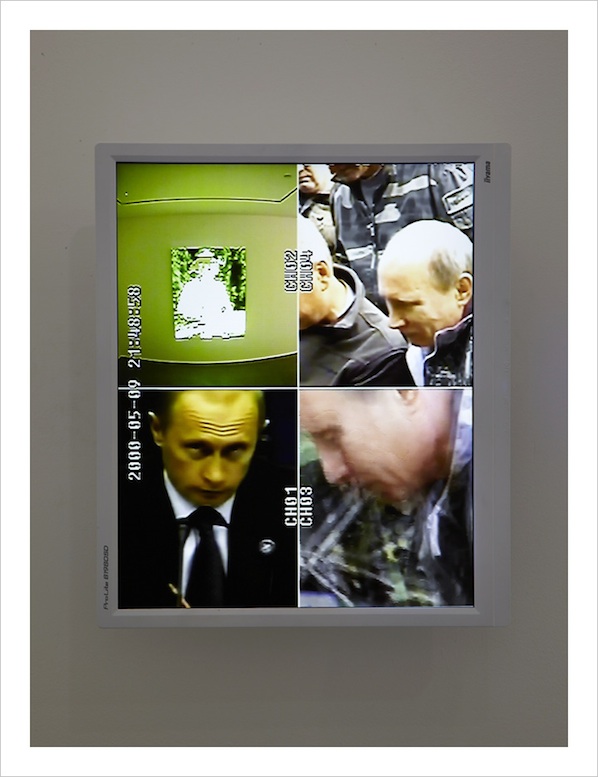
This position of political evasion hinges on a willful abstraction, and distancing from, their chosen subject matter. They activate this abstraction through their instinctive aesthetic strategy, creating a distance from the negative connotations popularly attributed to their subject matter by the media. The work Vladimir (2013) is a clear example of this obfuscating, poetic tactic the duo employ. Here, a CCTV monitor is split into four separate screens and located on the first floor of the gallery space. One screen shows the actual painting of Putin, (located in the lower gallery space). This takes the form of a pixelated painted canvas of Putin onto which an animated GIF is projected. Another screen from the CCTV plays footage of Putin at a press conference. On the remaining screens, there are images displaying alternative subjectivities of how Putin sees himself: heroic of the leader with a naked torso whilst partaking in the popular macho pursuits of fishing and shooting. These images are set up to relate to the animated canvas located and distanced in the lower gallery space. The relational dynamics between the works create a fragmented picture of the subject’s identity, and, as lizvlx suggests, this sense of abstraction and distancing through the aesthetics employed, neutralizes any characteristic of evil popularly associated with the subject himself. The viewer is left to come to an independent conclusion.
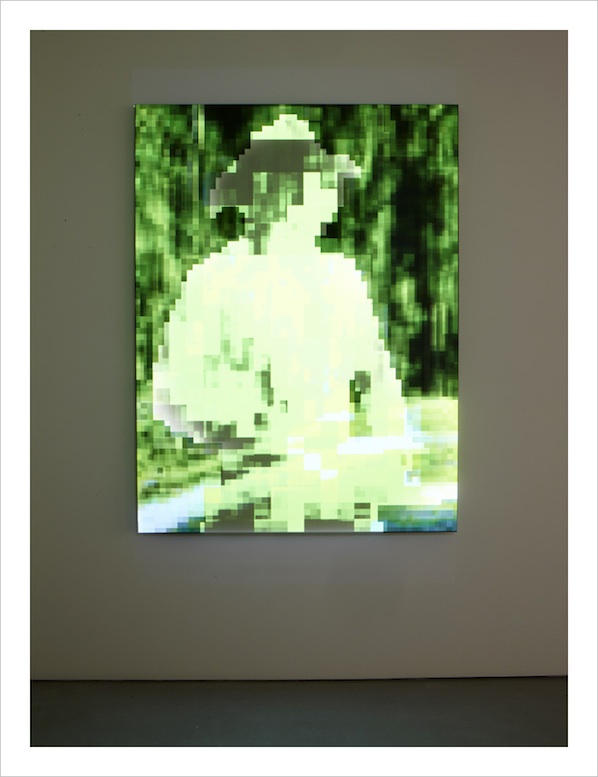
In fact, the entire show is a tightly choreographed relational synthesis. As I experience Hans and lizvlx’s all-encompassing Gesamtkunstwerk , I get the distinct, and unnerving impression that I am being watched. Call me paranoid if you will, but as I navigate through the show, I can’t help but notice that the familiar white cube space is punctuated and peppered by an abundance of CCTV cameras, staged situations of observation, identity –skewing overblown pixels, Crime Watch images and performative interrogation environments, placing the user cum visitor in an uncanny feedback loop of reactionary surveillance.

UBERMORGEN’s collaboration with Aram Bartholl, Net.Art (2013), is the first work I encounter as I enter the gallery. Bartholl’s OFFLINE ART [5] curatorial strategy takes the form of five wall mounted routers locally broadcasting a selection of UBERMORGEN’s net.art pieces disconnected from the Internet. These hermetically-sealed works make the visitor aware that they are being choreographed and controlled from the off – initiating the uninitiated and reminding those familiar with their work that it is never a comfortable ride. Bartholl’s new model of exhibition format is a subtle method of instilling a sense of self-awareness in the viewer. Throughout the show, UBERMORGEN continue to stimulate a gradual awareness, and partially expose, the systems of coercion, control mechanisms and surveillance techniques employed by institutions of public authority. As the tectonically-shifting position between fact and fiction continues to play out throughout the show, UBERMORGEN’s empirical probing of corporate and governmental control mechanisms becomes increasingly apparent.
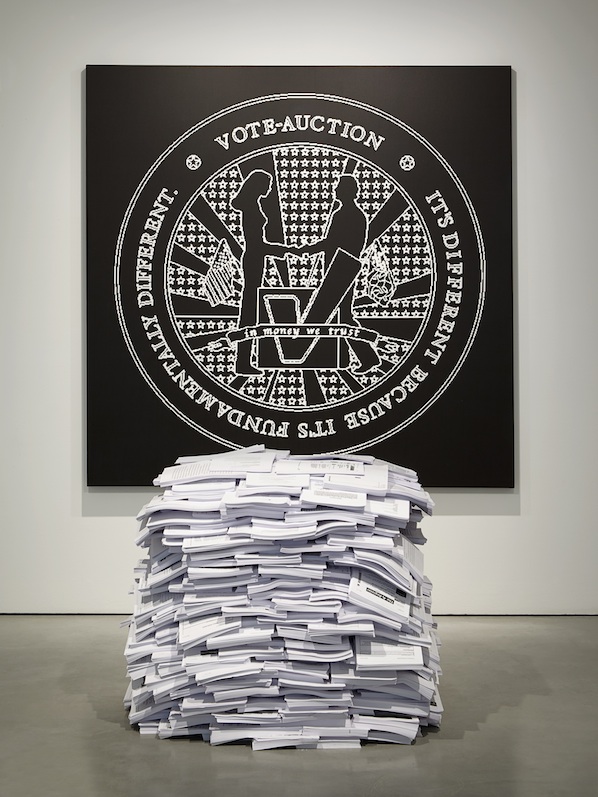
The historic work [V]ote-Auction(2000)- whose virtual subversion resulted in RL FBI intervention- is presented here as an impotent, dormant archive, its stacks of legal documents masquerading as a minimalist sculpture. However, the two new works CCTV(A parallel universe)(2013) and Do You Think That’s Funny? – The Snowden Files (2013) directly implicate the viewer in the act of surveillance. Both pieces are staged situations of observation and temptation. Do You Think That’s Funny is accompanied by a piece of pseudo fan fiction cum interview between UBERMORGEN and Edward Snowden available in the gallery catalogue. The installation itself is a contemplative, yet menacing frieze of control. According to the artists, they are in receipt of an encrypted data package from Snowden. The staged scenario tantalises the viewer/user by offering up Snowden’s dark data on wall-mounted Ethernet cables. A bench is provided for the viewer directly in front of the cables to contemplate the magnitude of their content. This meditative state is rudely interrupted by a looming white CCTV camera fixed to the parallel wall, levelled at the spectator. I am already aware of the presence of this electronic eye having encountered CCTV (A Parallel Universe) (2013), in the previous room. In this piece, the glaringly crisp images on the TV monitor clearly depict the panoptic gaze of the CCTV cameras installed in every part of the gallery, creating an infinite visual feedback loop.
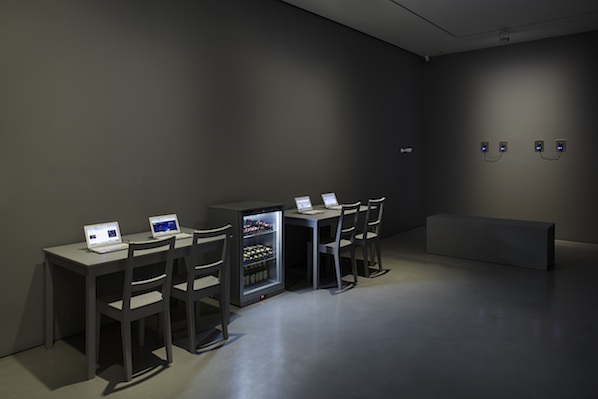
Call me paranoid, but as I navigate the exhibition, I become increasingly self-conscious. White cube galleries usually have the feel of surveyed environments, with their incumbent aura of silent contemplation, lurking invigilators and clearly posed CCTV cameras, but this is a different kind of watching. The fact that the work itself is not the main focus of the all-seeing eye of protection slowly dawns on me, and I feel that I am in fact the star of the show. As I crawl along the tunnel to reach the work Superenhanced (2013), I am aware of the fact that I am enacting a part, and white mice, hamster wheels and men in white coats come to my mind as I glimpse the two chairs and the hand cuffs ahead of me. As I look up and see that my confession can be clearly observed by visitors above me through the upper gallery stairwell, the picture is completed and I take my position in this physical simulation of a video game environment.
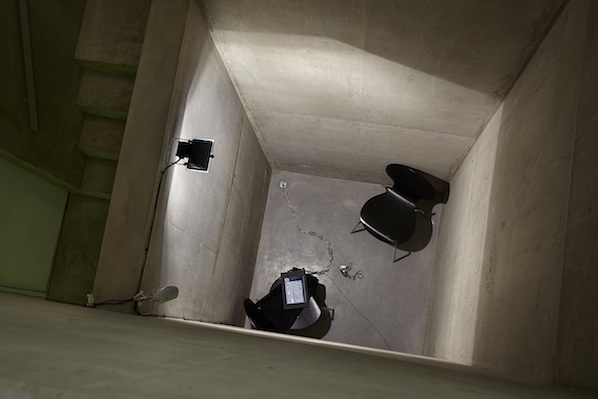
UBERMORGEN’s work implicitly involves and implicates both the visitor and themselves in a complex, and increasingly distorted feedback loop of knowledge production and surveillance. It is not, however, the surveillance of the Weiwei-esque, ever-present CCTV camera that starts to destabilise me, but the internal, cognitive surveillance prompted by the ambiguous narrative of the works. As the camera becomes assimilated and internalised, I am compelled to survey myself.
This week the ReadingClub organised two live reading sessions with us at Furtherfield. The first performance with Aileen Derieg, Cornelia Sollfrank, Dmytri Kleiner and Marc Garrett, was based on a chunk of A Hacker Manifesto by McKenzie Wark [version 4.0]
The second session took as its starting point one of the ARPANET dialogues from 1975 -1976. What we first took as a historical moment, encapsulating the collision of modernist and postmodernist art world figures and the disruptive effects of digital network communications, turned out to be an ongoing research project by Bassam El Baroni, Jeremy Beaudry and Nav Haq.
Alessandro Ludovico, Jennifer Chan, Lanfranco Aceti and Ruth Catlow reenacted the historic collision in a contemporary context. The result – a new text called “Postinternet is net.art’s undefined bastard child”
You can view the recordings of both performances here:
ARPANET dialogues
Hacking, The Hacker Manifesto
Below we reproduce a translation of an interview by Annick Rivoire originally published in French for the publication Poptronics. Read original article here.
One might think (wrongly) that the “Reading Club” is a mixture of a “Fight Club” and a “Bookfighting” (book battles invented by a community from Orleans called Labomedia). Rather, the activity of the “Reading Club” is above all reading – an active, participatory, collaborative and performative reading on the Internet.
Annie Abrahams and Emmanuel Guez wanted this project to be nomadic and shared, so they invited, in addition to IRL institutions like the BPI Centre Pompidou or Le Jeu de Paume in Paris, network partners like Furtherfield, an art and digital resource center in London, and Poptronics. When Annie Abrahams (a challenging net-artist whose work Poptronics likes) told us about the “Reading Club”, it did not take us long to accept the proposition! This “interpretative arena” had a taste for experimentation.
So, in June began the first test (which I attended). Then, during the summer and early September, the device has been refined and made public. An extract from “A Hacker Manifesto” by McKenzie Wark, and snippets of the “Arpanet Dialogues“, these pre-chatrooms conversations from the 1970s attended by Yoko Ono, Marcel Broodthaers, Jane Fonda and a certain Governor Ronald Reagan, have been chosen for the fourth online session with Furtherfield on Monday 21st and Tuesday 22nd of October.
Annie Abrahams and Emmanuel Guez both have a taste for experimentation. The proof? They immediately organised a “Reading Club” session where the two of them answered me a few questions about their project! What you read below is the final version of this session. The writing process is visible on the Reading Club site (by clicking on the arrow at the top right).
Annick Rivoire: “Reading Club” is an “online performative reading experiment.” In this statement, what term do you prefer?
Annie Abrahams & Emmanuel Guez: Experiment, in terms of both the act of reading (and writing) in common and the audience to actively attend these readings through a chat window. Experiment, also in the sense that piloting the project and its various sessions allows us to experiment with different conditions of reading and writing.
Reading is generally considered something a little outdated (see: the complaints by publishers and teachers on the crises of the book and of writing since the advent of the digital). Is it to rehabilitate reading you’ve imagined “Reading Club”?
In the Reading Club, reading is not unthought, not a background. The text can be easily decomposed and recomposed. The radicality of text becomes visible. Words; the text allow what images can only indicate. They are closer to the temporality of thought, bring along a certain slowness, a return to attention. Text gives way to reflection. An image globalizes, leaks everywhere, encompasses but does not travel.
You invite critics, artists, performers to participate collectively, to share the “Reading Club” experience. Why?
Because without participation, the “Reading Club” does not work! It is a device made for people who love to read, who love to write and love to share. These three actions are combined and objectified in a single time and place. But the “Reading Club” is not restricted to the world of art and literature. We would love to propose a “Reading Club” to a wider audience over a longer period, for example in a series of sessions of 10 to 12 consecutive hours.
You explain that the “Reading Club” was inspired by the “Reading Group” of Brad Troemel and the “Department of Reading” by Sönke Hallman. Can you tell us more about these experiences?
Existing texts are at the center of both projects who ask to be payed attention to, to read and then discuss these together. Troemel proposed this on irregular intervals in the rather classical context of a workshop called Reading Group, whose archives unfortunately disappeared from the net. The project by Sönke Hallman, “Department of Reading” (2006), however is much closer to ours. It is an interface, a combination of a chatbot, written in python, and a wiki, developed to slow down and explore the act of reading and writing in a group.
Having participated in the first experiment of the “Reading Club”, I was surprised by the latitude of intervention of the “readers” to the text, which transformed this test session of shared reading into a writing session, or rather a writing “battle”. A very amusing, stimulating and annoying play with simple rules, which resulted in the complete rewriting and inevitably in the emergence of another text on arrival. Did you plan this “killing game” to revisit in color?
Please, take into account that the session in which you participated was a test session during our residency at Zinc (Marseille). We carefully chose which player was going to work on what tesxte (sic), but the interface had many bugs, so, we were forced to do only one tesxte with a group of very heterogeneous readers. It is true that the use of color leads to toying with the visual side of the interface, especially if the text is turned on itself, if it offers a thought biting its tail.
How did you set the cursors and determine, or even change, the rules of the “Reading Club”?
The setting is not fixed. For each session we redraw the reading modalities, the rules of the game. We can act on the identification of the readers (by removing the color, they become anonymous), the duration and length of the text and the number of characters to be used. For example, a short time will not allow a lot of thought. A low upper limit of the number of characters forces the readers to play with the letters rather than with sentences, etc. The choice of the readers in relation to the original text is also important. We know for example that a performer seeks to occupy space, to make the interface “shake”.
In the presentation of the project you mentioned the notion of the “interpretive arena”. One can not help but think of the violence of comments, tweets, the most aggressive sentences thrown as fodder on the Internet by the blogosphere, etc, in short, that other textual arena which is the Web as a whole and, even more, the social networks of Web 2.0. To what extent “Reading Club” is a criticism, a mise en abyme of that arena?
The “Reading Club” does not criticise the aggression you describe. Moreover, the “Reading Club” is not a critical apparatus, but something that makes possible a new form of criticism carried out jointly. What “Reading Club” reveals is that a shared reading and writing passes through emotions, through tensions, through power lines, but also through a certain euphoria. Any act of writing involves a certain symbolic violence. This violence is translated here by the control of the writing space (do not forget that the number of characters is limited). What remains in the end is a text and the whole session which we keep as an archive and which is visible through a timeline. They embody the thoughts, affects, the emotions of the readers at that time.
What is the status of the final text, who is the author, and how is this status questioned in the various experiments (in single or multiple configurations from Zinc to the Bpi Beaubourg)?
We have our specialist Antoine Moreau, one of the founders of the Free Art License, under which we placed all the productions of the Reading Club. We are less interested in the final text of a session than in the process of reading and the accompanying writing strategies. To answer the question, let’s say that the final text is both the product of the device we designed and a process that is the work of the invited readers, without forgetting the author of the original text (in French “texte originel”) – you will notice that we did not use the concept of “original” (in French “original”). We are therefore multiple authors…
The appointment, the performance, the text… All concepts that are being undermined on networks, where fragmented practices, the consultation and mass production of images (video, photo) push in a different direction. Doesn’t your project, which advocates writing (that of an author, those of the readers), promote something “old fashioned”, i.e. the weight of words rather than the shock of the photos?
If the question is “are we old fashion” (sic), we reply that it is cheesy to oppose text to image (it can not be seen but we are laughing). If you look at the timeline, you can see a film of a shared thought in the making.
Is the choice of texts the result of long discussions? The authors are (as far as the first editions of “Reading Club” are concerned) rather engaged personalities (artists or researchers). Are you inventing a form of controversy 2.0?
Not necessarily. The texts are selected jointly with the partner of the session. Sometimes it takes a long time, sometimes we immediately have an intuition that appeals to all partners. We aspire to have the selected texts reflect the concerns of the structure or the institution hosting the session (and ours). We do not seek controversy, it is already there all the time, everywhere. Rather we want to create a situation of confrontation, to ask the reader the question of how to choose his place, his attitude towards others who treat and mistreat the text along with him, to put him in the position to see evolve a thinking in which he participates, but can not control.
“Reading Club” goes international with this new edition with Furtherfield. How do you handle the issue of language? At the BPI, the selected text was signed by Mez, an artist who, as you explained, “wrote her names and texts as names of application and lines of computer code.” A solution to the issue of translation?
The language is that of the original text. Difference exists. Take a look at Mez 3.9.11 _i_dentity_x _or[s]c[h]ism_ (2005-09-29 06:17)
Contact: info@furtherfield.org
Furtherfield Gallery is pleased to host One Minute Volume 7, a new series of shorts curated by filmmaker Kerry Baldry. The screening is accompanied by One Minute Remix, a selection of moving images from One Minute Volumes 1-5.
One Minute Volume 7 is the latest in the edition of One Minute artists’ moving image programmes curated by artist and filmmaker Kerry Baldry, and includes an eclectic mix of artists’ moving image constrained to the time limit of one minute. The One Minute programmes have been screened at numerous galleries, artists spaces and film festivals worldwide.
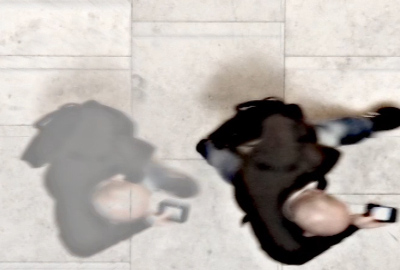
Volume 7 includes work by John Smith, Rose Butler, Tony Hill, Steven Ball, Alexander Costello, Leister/Harris, Kayla Parker and Stuart Moore, Louisa Minkin, Claire Hope, Max Hattler, Guy Sherwin, Steven Woloshen, Lynn Loo, Lumière and Son, Tansy Spinks, Gary Peploe and Peter Nutley, Eva Rudlinger, Michael Szpakowski, Zhel (Zeljko Vukicevic) , Matthias Kispert, Stuart Pound, Sellotape Cinema, Alex Pearl, My Name Is Scot, Kerry Baldry, Esther Johnson, Marty St. James, Nicki Rolls, Katherine Meynell, Chris Paul Daniels, Riccardo Iacono, Edwin Rostron, Martin Pickles, Grant Petrey, Annabel Dover, Kelvin Brown.
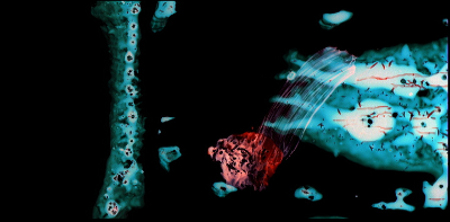
One Minute Remix (a selection from One Minute volumes 1 – 5) was originally compiled by Kerry Baldry for a screening as part of Kayla Parker and Stuart Moore’s moving image event ‘Welcome to The Treasure Dome’ (in a ICCI 360 Arena, which displayed audiovisual/moving image artwork via 5 projectors, with the screens arranged in a ‘seamless’ circle wrapped around the inside of a 21-metre diameter dome, and with surround sound) on behalf of ICCI (Innovation for the Creative and Cultural Industries) with Plymouth University; part of Maritime Mix – London 2012 Cultural Olympiad by the Sea programme, Weymouth (10 and 11 August 2012).

The programme includes work by Martin Pickles, Alex Pearl, Steven Ball, Gordon Dawson, Michael Szpakowski, Virginia Hilyard, Barry Lewis, Nick Jordan, Claire Morales, Nicki Rolls, Kerry Baldry, Riccardo Iacono, Eva Rudlinger, Zhel (Zeljko Vukicevic), Esther Johnson, Sam Renseiw and Philip Sanderson’s Lumière & Son, Katharine Meynell, Stuart Pound, Kayla Parker and Stuart Moore, Ron Diorio, Daniela Butsch, Guy Sherwin, Louisa Minkin, Rose Butler, Dave Griffiths.
+ More information: http://oneminuteartistfilms.blogspot.co.uk/
Produced by Furtherfield.
Kerry BaldryKerry Baldry is an artist/filmmaker who works in a range of media including film and video. She is a Fine Art Graduate from Middlesex University who went on to study film and video at Central St. Martins. Her first commissioned film was to make a film for BBC2’s One Minute Television which was broadcast on The Late Show – a joint collaboration between BBC2 and Arts Council England.
Over the last 6 years, aside from producing her own work, she has been curating, promoting and distributing a self initiated, unfunded project titled One Minute, One Minute Volume 7 being the latest in the edition. One Minute Volumes 1-7 are an eclectic mix of artists moving image constrained to the time limit of one minute and includes over 80 artists at varying stages of their careers.
Furtherfield Gallery
McKenzie Pavilion, Finsbury Park
London N4 2NQ
T: +44 (0)20 8802 2827
E: info@furtherfield.org
Furtherfield Gallery is supported by Haringey Council and Arts Council England.
Contact: info@furtherfield.org
Visiting Information
Imagine visiting Finsbury Park in the not too distant future…
You could explore the sensory and medicinal properties of different plants in the Discovery Meadows; Play Glades offering people of all ages a range of adventurous physical challenges within a variety of wooded areas; visitors could go on a cultural tour of ‘natural rooms’ in the park, accessed through mobile devices; community gardens used for a wide range of events supporting and encouraging local people to come together around pleasurable growing, foraging and cooking events; Memorial Gardens providing an inspiring and elegant space for people of all faiths to take a moment to remember their passed loved ones.
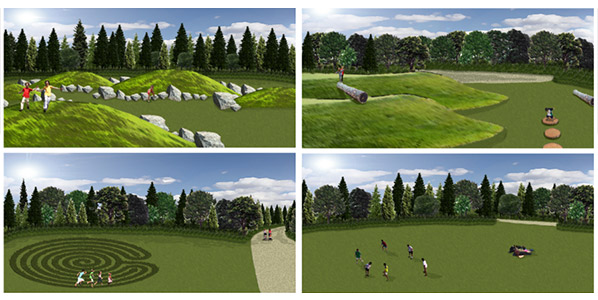
These are just some of the futuristic ideas that students from the Writtle School of Design (WSD) will be exhibiting at Furtherfield that imagine possible futures for Finsbury Park.
In early 2013 WSD students created plans for the whole park, and then a number of individual designs for key spaces within the Park. They were asked to look at ways that Finsbury Park and Furtherfield could both provide more pleasing spaces and encounters for the surrounding communities. The opening of Furtherfield Commons, a new pop-up art, technology, and community space located within the park at the Finsbury Park Station entrance, will also be celebrated. Furtherfield Commons will serve as the venue for presentations from Furtherfield and Writtle School of Design students and staff about their visions for the park alongside an exhibition of the full array of inspirational images and ideas, and video interviews with the designers. Visitors are invited to make comments.
Press view and VIP private view: Friday 22 November, 2-5pm
Open 12-4pm Saturday and Sunday for two weekends. 23, 24, 30 November and 1 December 2013
Local people are encouraged to come along and respond to the designs.
Furtherfield Commons
Finsbury Park
Near Finsbury Gate On Seven Sisters Road
E: info@furtherfield.org
Furtherfield Gallery is supported by Haringey Council and Arts Council England.
Featured image: XRay by Claude Chuzel
“One of the most consequential outcomes of this ubiquitous mode of organization of social life is that we have become so accustomed to relating to space in “either/or” and “here/there” terms that we have become mentally trapped inside this binary border-based model, making it difficult to imagine alternative ways of territorial organization.” Popescu [1a]
Maps inform us where things are situated. The borders depicted in each map propose a different view on the social conditions, attitudes, and interactions with others in the world. The AntiAtlas of borders project shows us different approaches for understanding “the mutations of control systems along land, sea, air and virtual states” and their borders. It has done this through the combined contributions of social and ‘hard’ science researchers and artists, all engaged in creative practices including Internet art, tactical geography, filmmakers, performers and hackers. The project also includes other relevant actors such as people working as professionals for customs agencies, surveillance industries and the military.
This is the first of two interviews with Isabelle Arvers who has collaborated with the IMERA team (the Mediterranean Institute for Advanced Research of Aix-Marseille University), to curate this expansive and dynamic project. The first interview discusses the operational side of the project and the next interview examines selected writings, artworks, projects and ideas featured as part of the project.
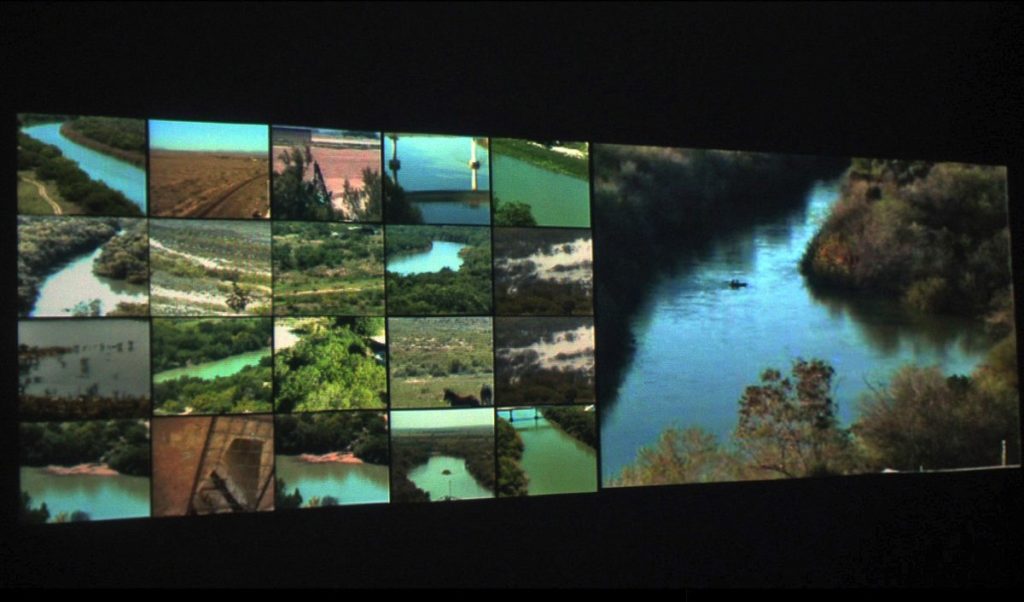
Marc Garrett: Before we begin the interview it would great if you could tell us when and where the exhibitions, events, publications and other parts of the project begin?
Isabelle Arvers: The AntiAtlas programme will run from 30 September 2013 to 1 March 2014 and will be composed of five initiatives: an inaugural international symposium, two exhibitions, a website and the publication of a book. The International Conference will be held from 30 September – 2 October 2013 at the New Conservatory of Aix en Provence. The main aim of this conference is to present the results of the interdisciplinary workshops that took place in the last two years at IMéRA et at the Higher School of Art of Aix-en-Provence.
The AntiAtlas of borders will present two interlinked exhibitions. The first will take place in Aix-en-Provence at the Musée des Tapisseries from 1 October to 3 November 2013. The second will take place in Marseille at La Compagnie creative arts centre from 13 December 2013 to 1 March 2014. The two exhibitions will present works developed in collaboration with social scientists, researchers in the hard sciences and artists. They will offer several levels of reading and forms of participation. Visitors will discover new works, engage with transmedia documentation and participate in experiments. They will interact directly with robots, drones, video games, walls and systems. The aim is to encourage everyone to reflect on how we are directly and personally affected by the transformations of borders in the 21st century.
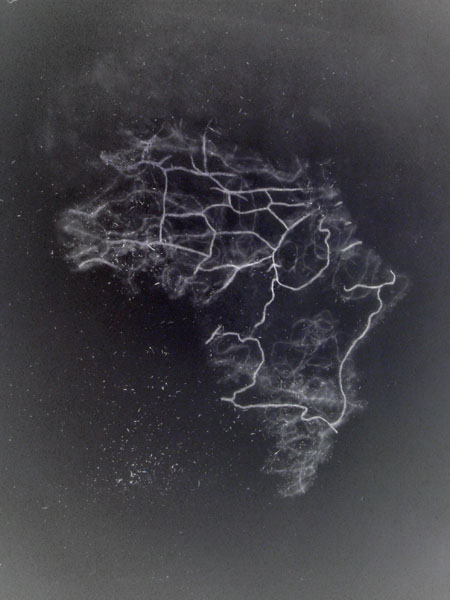
The final version of the website www.antiatlas.net/eng is an online extension of the exhibitions. Most importantly, the website provides access to works of net.art and artistic interventions in the form of an online gallery of works. This website and its documentation will extend the progress and reach achieved by the project. It will act as an archive and documentation site for the general public, artists, researchers and institutions.
In 2014, an AntiAtlas of border publication will be produced, gathering publications of researchers and artists on different and selected themes of the international conference and the two exhibitions.
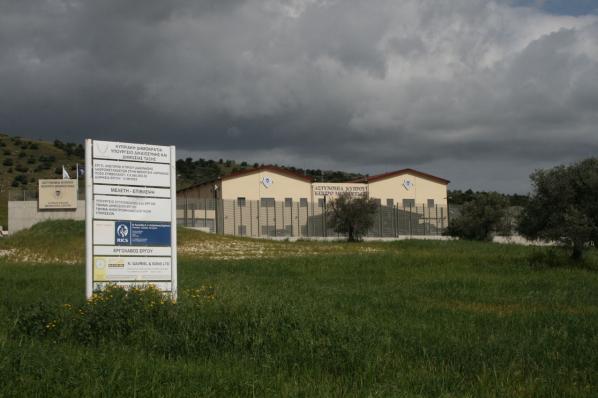

MG: What has been your involvement with AntiAtlas?
IA: When I met the IMERA team (the Mediterranean Institute for Advanced Research of Aix-Marseille University), they were looking for a curator in order to disseminate the outcomes of the past three years of seminars they conducted on borders. I saw this project as a great opportunity as there was a political dimension within it that attracted me. Also, I am deeply interested in tactical media and tactical geography and by new forms of visualisation and new aesthetics related to systems of control like drones, robots, satellites or surveillance cameras.
I wanted to create a participatory event that would allow people to follow our work online and offline. I also wanted to mix different kinds of works from research in the hard and social sciences to artistic installations, websites, games and videos. To do so, we decided to create a website www.antiatlas.net that would gather artworks, research articles and interviews, an online gallery and also all the presentations given during the different seminars conducted by IMERA on borders during the last three years. Thanks to the website, we were able to launch a call for proposals as I wanted to get the testimonies and the voice of migrants about their vision on borders.

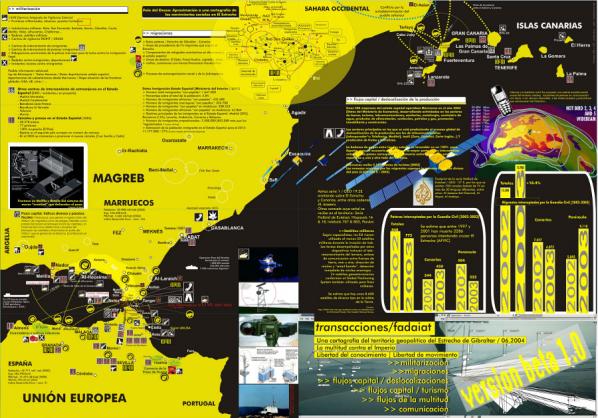
Very quickly we understood that we needed to get more funding and partners, so I offered to seek media, private and institutional partnerships as well as to manage the communication of the entire event. This fundraising was needed to promote a global vision of the antiAtlas of borders and to link all the parts of the event: from the website, to the call for proposal, till the international seminar and the two exhibitions. Because of my multiple engagements in the project, I became one of the 5 co-producers of the programme.
MG: This is a complex project. It is noticeable that there is a diverse and dynamic, cross section of different practices being bridged to make it all happen. Has it been difficult to combine all of these practices so they can relate to each other coherently?
IS: Combining all these different practices was a wonderful and exciting adventure. During one year and a half, we worked very closely with the scientific and artistic committee and tried to exchange as much as possible between different visions and ways of working. I learned a lot from researchers and was amazed by the deep understanding and knowledge they have on the subject of borders. Thanks to their research and to their approaches to this issue, I was able to get a very diverse understanding of this complex subject. From me, they discovered the online communication and the power of the web and social networks to diffuse and share the information. They also got a better understanding of the tactical media field and we learned so much from each other that this experience is already a beautiful success in sharing and learning from passionate human beings. I come from media art world and I tried to respond to a scenario that the committee conceived with artists’ works, which is a very different way for me to work. This time I had a script to follow; the way I did it was to try to find some ludic interactive installations, as well as documentary projects or games, in order to allow the experimentation of the subject by the audience. They trusted me even if it wasn’t a field they knew well.
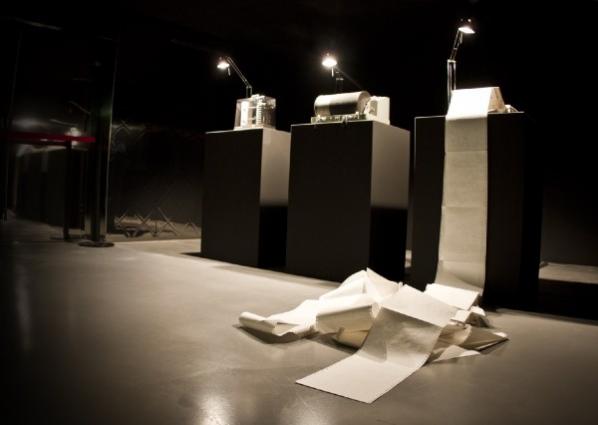
MG: Do you feel that it has de-compartmentalised these varied fields of knowledge successfully?
IS: What was particularly positive in the last seminars on borders we organised was that they allowed plenty of time to discuss and facilitate the exchange between the different perspectives. A specific example is a game project resulting from the collaboration between an anthropologist – Cédric Parizot – and a interactive laboratory from the Superior art School of Aix-en-Provence, which is led by the artist and game designer Douglas Edric Stanley. The idea is to create a “crossing industry game” drawing on the data collected by Cédric Parizot on trafficking. The collaboration addressed the visualisation, contextualisation and re-appropriation of a field of knowledge through game mechanics. I think that this experience really enriched all the team. The anthropologist was able to analyse his data in a different way, while the interactive students got closer to the reality of trafficking as they were experiencing through a game.
There are many other cross-disciplinary projects made in the framework of the AntiAtlas. I would say that what we want is to multiply different experiences and forms of knowledge on borders across and between the separate but intersecting fields of art and science. The exhibition is conceived to mix everything: research through the documentation space, researchers’ interviews, counter cartographies, interactive installations on biometrics and surveillance technologies, applications to divert control systems and documentaries providing a wider point of view on multiple dimensions of borders and their representations. Artists and researchers meet three times per year, some of them collaborate on trans-disciplinary projects, so that the conditions to meet and de-compartmentalise these fields are created. This is only the beginning. The process still needs to be pushed and facilitated as the antiAtlas is an attempt to create a new kind of cross-disciplinary encounter, let’s see how it will evolve!
This first interview with Arvers attended to organisational and operational aspects of the inter-disciplinary border-crossing within AntiAtlas project. The complex task of collating, sharing and collaborating to make it all happen at all could use its own map. The processes and engagements that evolved as the project took shape involved a collaboration of many different fields and practices, individuals, groups, organisations and cross cultural relations. This transdisciplinary approach helps us to unpack the deep levels of the meanings and value of crossing borders, in an organisational sense. Their dedication to transcend the seemingly ‘scripted’ blockages and restraints echoes a strong feeling that we need to re-assess the maps given to us, and what this means.
“What is needed to escape the modern mental “territorial trap” are ways of seeing and drawing that reveal what the geographical abstraction of the borderline obscures. It is only in this way, then, that we will acquire the necessary tools to think through a technologically enabled world of border flows and portals” Popescu.[1b]
Isabelle Arvers is an independent author, critic and exhibition curator. She specializes in the immaterial, bringing together art, video games, Internet and new forms of images by using networks and digital imagery. She has organized a large number of exhibitions in France and overseas (Australia, Canada, Brazil, Norway, Italy, Germany) and collaborates regularly with the Centre Pompidou and French and international festivals. http://www.isabellearvers.com/
Featured image: Drone Shadows by James Bridle
I met the London-based artist, publisher and programmer James Bridle in Oslo back in May 2013, as part of the conference The Digital City. Bridle was in Oslo to speak about drones, algorithmic images, and urban software. His most recent art projects, Dronestagram and Drone Shadows, have caught a great deal of interest by the popular press, with recent features published in the Wall Street Journal, Dazed & Confused and Vanity Fair. Bridle is no stranger to getting the timing right. Addressing issues of drone surveillance and invisible technologies in ‘leaky’ Snowden times, or manage to get a bunch of academics, writers and critics, to talk about the birth of a new movement – based entirely on a Tumblr-blog he called the New Aesthetic – surely qualifies as good timing. In our conversation, Bridle, or the New Aesthetic’s commander-in-chief as Vanity Fair calls him, reveals that he never really meant to talk about aesthetics. It is not the printed pixels on a pillow, so often taken to be emblematic of the New Aesthetics by its critics, that is of interest to Bridle. Rather, Bridle wants to encourage a conversation about the kinds of images and sensibilities that emerge from algorithmic and machinic processes, and the embedded politics of systems that make certain images appear (and disappear).

Taina Bucher: Hi James, would you care to tell us a little bit about your background?
James Bridle: I studied computer science and artificial intelligence at UCL, University of London. By the time I finished, I hated computers so much that I went on to work in traditional book publishing.
It quite quickly became clear through working as an editor and publisher that publishing was heading for crisis, because it is an industry that is full of people who are afraid of technology. So I went on to specialize in e-publishing, looking at what happens to books as they become digital, which gradually grew into an examination of other cultural objects, and what happens to them as they get digital and the nature of technology itself.
T: Do you think that your background in computer science influences the ways in which you think about art and artistic practices?
J: I consider myself as having a background in both, and I actually think that having the literacy in both is incredibly valuable.
T: Interesting, what does this literacy in art mean to you?
J: Being able to speak the language of it and to be able to communicate it. Not just having an understanding of it, but also to be able to talk to people in publishing and the arts about the Internet without scaring them, and also to be able to talk to people in technology. They are still two separate cultures but it is possible to translate between them.
T: Do you consider software or code to be the material of your artistic practices?
J: Sometimes. I do think though that this should be the last concern. There are different ways of describing the world; materials are just a way of expressing it.
T: How then does software influence the kinds of expressions that you create?
J: Not only the material, but also the ideas coming from software are important here. There are plenty of ideas coming from technology that become really valuable as they are applied in the arts, for instance from the tradition of systemic analysis. You know, breaking things down to basic principles, algorithmic type steps, is a really valuable tool of analysis. It is also a dangerous one, as it can give you a systemic engineering view on problems.
T: You’ve said that you’ve been accused of romanticising the robot, or rather, that the New Aesthetic has been accused of this. What do you think the critics mean by that?
J: Well I do understand it in a way, because one way of talking about these things is really to anthropomorphize automated systems. When you do that, you bring a whole bunch of other questions into it, like whether these systems have a separate agency or not, whether they truly see and understand the world in ways that we do not entirely understand, or whether they are purely tools of human imagination. In order to understand these things, I think sometimes it is necessary to take a position, you know, talk about it as if it is true, and then you learn more by finding out where that description breaks down and where it doesn’t apply.
T: What is the New Aesthetic anyways? An aesthetic of the digital, or a digital aesthetic?
J: I never really meant to talk about aesthetics. The New Aesthetic is not about aesthetics. One of the earliest keys to it was looking at some of these images that result from systems, looking at things like computer vision and how the world is seen through machines, but really this is a shorthand of how the world is mediated through technologies in all kinds of ways, not just aesthetically. The aesthetic is a starting point where you can visually notice these things, but I am really interested in what it reveals about underlying things. I am not interested in notions of beauty or the aesthetics of it.
T: We could also understand aesthetics in terms of ways in which something is made to appear in certain ways. To talk about software aesthetics in these terms, would imply the view from technology, as opposed to the view on technology.
J: Not only the ways in which these technologies influence the ways we see things though, but the ways in which we think about them and understand them is important. By using some technology you’re bound by some of its biases and if you don’t understand what some of these biases are, then you’re slightly fooled by them. There is always an underlying politics to these things, and if you’re not aware of it, then you’re a victim of it.
T: Is it the artists’ job to reveal these biases in a certain sense?
J: Don’t know about job, but yes, that’s why I am doing it. The interesting thing to me is to explore deeper levels of these things. Getting a bit closer to the meaning and the underlying biases.
T: How do you work with, or get at the biases of technology?
J: By exploring and getting a technical understanding of it, but also by looking at how technologies actually operate in the world.
T: Do you think that a certain sense of code literacy is needed then?
J: I struggle a bit with that. I think that I do, the way that I work. Having a technical understanding of how things work is really, really important. But I am always struggling to figure out if it’s possible to do that without having the possibility to read the code. It is hard to study a foreign culture without knowing its language. Put differently, great artists mix their own paint. They have a fundamental understanding of the material. I think that if you’re making work with and about technology, and if you don’t understand how that technology works, you’re going to miss out on a huge chunk of what the technology is capable of doing. There is a lot of digital art that is very, very basic, because the people who are making it don’t actually understand how it works.
T: Could we see your work as a kind of software studies?
J: Yes, probably could see it like that. Some parts of software studies definitely informs my work, concepts like code/spaces. My practice is situated between art and technology and the stuff that always interests me, is when domains like software studies meets other domains, for instance where software studies meets architecture. I’m really interested in architecture because it is such a situated practice. It is not like art or high-flown critical theory, which is kind of above the world; it really has to be rooted in the world. The crossovers are what are interesting. People like Eyal Weizman or Keller Easterling, who talk about how architecture shapes not just the physical domain, but also the legal and political spaces.
T: One of your projects that I really like is “A ship adrift”. Besides being a bot, how can we understand this “ship”? How does it work and which data sources does it use?
J: It is part of a larger art project in London called “A room for London”, which was a one-room hotel built on top of another building on the south bank of London in the shape of a ship. It was both a one-room hotel that you could book and stay for the night, and it was used for art things, music projects and other events. I was asked to do something that connected it to the Internet, to some kind of an online component. I didn’t want to do something that was totally separate, but something that was rooted in this idea of the ship, and its actual location. One of the major things is that it is a ship that doesn’t go anywhere. It fails at the first condition of being a ship.

I put a weather station up on the building to monitored wind speed, direction, and a bunch of other stuff, and took all the data from that, to drive an imaginary ship. For example, starting in January, and from the physical location of the ship: If the wind blows 5 miles an hour, my imaginary ship would move five miles east or wherever the wind was blowing. So this thing was driving friction-free. As it’s going, it knows its own location and searching the Internet for stuff nearby. It is looking for information on the web that also has a geographical tag to it. Good sources for that are Wikipedia as there are lots of articles that have a physical location tied to it, so you can look those up and read those in. My favourite source was Grindr, a sex network for Gay men that was geo-tagged. Unfortunately they did upgrade the security there three months into my project, so I no longer had access to that data. I was also feeding it other texts as well. There was for instance a sub-thread running through the whole project around Joseph Conrad who I’m a huge fan of. So I gathered all these texts and running really, really basic language generation text programs on it, the same kinds of programs that generate spam emails. So it is not intelligent in any meaningful way. It is really about how we read broken texts. I just quite love that, because it is really part of the vernacular of the web. It’s what language sounds like when it is broken through machines. It is also quite empathetic, and it makes us examine our own feelings towards technology.
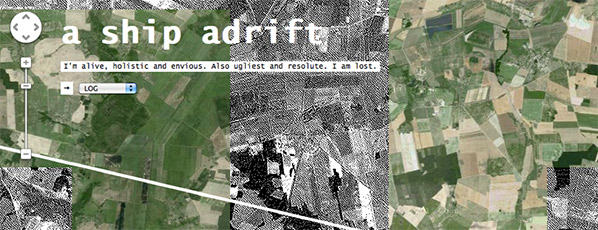
A Ship Adrift by James Bridle
T: Let me just quote you: “Forget controlling the machine; impersonate it. Fake it till you make it, like horse_ebooks, like A Ship Adrift” (Impersonating the Machine). How far would you take your own aphorism? Did your bot actually make it?
J: You can pick your criteria of success. My criterion of success is to produce an emotional response in me and in other people as well. And in this case, other people were really following along, particularly on Twitter. It had it’s own voice, although it was still generated by a semi-autonomous software system. It is not a bot really, it is not intelligent, it does not have agency, but it is generating a feeling about machines, which I think is important.
T: How did people respond to the ship?
J: Someone called it a ‘Robot Polari’. Polari is a European argot, which is almost gone now. Polari was a secret language that originated in circuses, travellers and theatre companies in the 19th century and became the secret language of gay men. It was a kind of coded language they used to communicate. Argots like that served multiple purposes. On the one hand concealing communication from the outside world that may be hostile to it, but also within the group, in terms of creating a bond between its members. So for me, the ship adrift felt kind of like an argot to the machines; machines kind of identifying themselves to each other, semi-protecting themselves.
T: There is a tendency to treat bots as ‘fakes’, as somehow inauthentic beings, which is really being framed as an increasing problem online. Why are we so obsessed with this notion of the inauthentic of that which is not entirely human?
J: That is a really good question. This problem of authenticity and technology extends much further. The whole New Aesthetic project springs in some extent from trying to understand what people consider being authentic digital experiences. I think we have this quite big problem, which is that we are so unsure with how technology operates that we have a deep distrust of it.
I think Instagram is a really good example of that. The entire mechanism of Instagram is predicated on applying the filters of analogue cameras to digital photographs, which for me is a process of authenticating. We are aware on some level that these photos are apparently less stable and less persistent than the photographs you keep in a shoebox, some server going down could delete them any moment. There is a precarity to them. We’re all the time trying to authenticate stuff, and all of this is tied to our fear and confusion around digital things.
T: It seems that questions of the invisible, or making what is seemingly kept from view visible, is a core element of your artistic practice. What is it about the invisibly visible and visibly invisible that intrigues you so much?
J: Take the drone programme. It is a political programme. It’s a natural extension of our international relations and we’ve developed a set of technologies to address these relations. The drone is perhaps the most emblematic and also a largely invisible one. It’s really been going on for the past decade, but it has only very recently become a very political issue. This is due to the fact that drones are largely physically invisible. They are secret technologies that no one ever really sees. In all kinds of ways: You don’t see them in newspapers, until very recently, and you don’t see them in movies. The invisibility is conferred by them being seen as technological objects. Because they are technologies, they are not criticized in a way that a policy, or a person, or human actions can be. Even though they are all about policies and human politics. Because humans in general, are not technologically literate, they just back off from that. For most people, it is just the way it is.

T: Would you say that it is the technology itself that is actually invisible, or the institutions and the kind of political work going on in the background of these drones?
J: Both of those things. This is where it gets interesting, because a lot of this technology materializes that political will. Stuff that would have been entirely secret previously, now exists as objects in the world. There is this incredible paradox, technologies both reify and materialize power and human desires, but are made invisible in a way that makes them beyond comprehension.
T: How have people reacted to your drone work?
J: Well, people have had discussions about drones they would not have had otherwise. But I hope that my work also raises questions about technology and the media on a deeper level, not just in terms of the drone programme.
T: Now that even our police forces are starting to talk about smart policing and using drones for surveillance purposes, what do you think would be an appropriate response?
J: I am not sure how the situation looks like in Norway. But London is the most heavily surveilled city on earth. Yet, we don’t talk about it much. For the most part everyone seems to be ok with that. It is a matter of technology, and thus easy for most people to ignore. If drones raise greater fears about surveillance, then maybe that will push back on all forms of surveillance. I’m not particularly more worried about drone surveillance than I am with cameras on a building. They are all functions of the same thing, but if it actually makes people think more about surveillance and control mechanisms then that is a fairly interesting way for it to go.
T: Maybe we’ll just end up in an overly visible state, where the amount of visibility goes counter to what it is supposed to do. If everyone is highly visible all the time, then the questions becomes one of analytics. How are we to make sense of this visibility?
J: The best I can hope for is a kind of democratization. We should all have access to them and be able to see through them as well.
T: What is up for you next?
J: I think I will have to take a lot of the momentum of this drones work and try and push it back up a layer to the political and legal space. I’ve never been interested in just the drones. I’ve always been interested in the wider implications of the technologies that they embody. So the drones are just the start, but there is a much larger conversation we should be having. So the question is how we can expand this conversation to those other areas and not just make it about weird sexy planes.
T: How does your work connect with social media? Do you use social media as a useful platform, or a point of critique itself? Does social media in any way change the possibilities of your artistic practice?
J: Yes, totally. I represent myself, and I have my own audience. It amplifies the things that I do, but I don’t theorize too much about it. That would be a whole rabbit hole to go down to. And I’m very well aware that I’m living inside, so it would be difficult to have such a critical eye on, because I’m so involved in it. I think that I will at some point though. One of the key tenets of my practice is not to perform manifestos, I don’t want to draw or come to any conclusions because I think we are at such an early stage with these social networks and social media, and the Internet in general that we don’t even have the critical frameworks to talk about it seriously, let alone come to any serious conclusions about it, yet.
“None but those who have experienced them can conceive of the enticements of science.” Mary Shelley, Frankenstein.
Rachel Falconer writes about the cyberfeminist art collective subRosa, a group using science, technology, and social activism to explore and critique the political traction of information and bio technologies on women’s bodies, lives and work.
Following a recent interview with the founding members of the collective, Hyla Willis and Faith Wilding, this article presents subRosa’s trans-disciplinary, performative practice and questions what it means to claim a feminist position in the mutating economies of biotechnology and techno-science.

The technological redesigning and reconfiguration of bodies and environments, enacted through the economies of the biotech industry, is an emerging feature of contemporary life. As these new ‘bits of life’ enter the biotech network, there is a slippage in our mental model of what constitutes the body, and more specifically, ‘life’ itself. As radically new biological entities are generated through the processes of molecular genetic engineering, stem cell cultivation, cloning, and transgenics, bio-artists and bio-hackers co-opt the laboratory as a site of critical cultural practice and knowledge exchange. Human embryos, trans-species and plants are constructed, commodified, and distributed across the biotech industry, forming the raw materials for bio-art, DIY biologists and open science culture.[1] These corporeal products and practices exist within new and alien categories, transgressing the physical and cognitive boundaries set by biopunk science fiction and edging towards the possibility of a destiny driven by genetics and life sciences. With the eternal rhetoric of a high-tech humanity, and the threat of Michel Foucault’s[2] biopolitics constantly on the horizon, today Harraway’s[3] myth of the cyborg exists in the form of corporeal commodities travelling through the global biotech industry. Scientific research centres stock, farm, and redistribute biological resources, (often harvested from the female scientists themselves). Cells, seeds, sperm, eggs, organs and tissues float on the biotech market like pork belly and gold. Seeds are patented, and other agro-industrial elements are remediated and distributed as bits of operational data across the biotech network. We/cyborgs[4], are manifested as a set of technologies and scientific protocols, and, as a result, the female body in particular, is reconfigured into a global mash-up of cultural, political and ethical codes.
The increasingly pragmatic realisation of the biotech revolution has provoked a ‘cultural turn’ in science and technology studies in general, and feminist science studies in particular. Carolyn Christov-Bakargiev’s dOCUMENTA (13) proposed an interdisciplinary approach to the role of science for ‘culture at large’. Certainly, by foregrounding the heavy hitters in the field such as Donna Haraway and Vandana Shiva, dOCUMENTA (13) laid claim to addressing the global conflicts of biotechnology. However, the feminist agenda was not specifically addressed, and the key issues of the impact of biotechnologies on feminist subjectivities were only paid minimal lip service. With the exception of Shiva[5], the tone of dOCUMENTA (13) hinted at a positivist, emancipatory take on biotechnology and technoscience without assuming a critical position. There was very little public debate or critical analysis engaging the philosophical, ethical, and political issues of feminism and female subjectivities within the realm of biotechnology.
Notably absent from last year’s dOCUMENTA (13), the activist feminist collective subRosa’s performative, interdisciplinary projects are channelled towards embodying feminist content, practices, and agency, and laying bare the impact of new technologies on women’s sexuality and subjectivities – with a particular emphasis on the conditions of production and reproduction. Through their research-led practice and pedagogical mission, the collective analyse the implications and conditions of the constantly surveyed female body, whilst mapping new possibilities for feminist praxis. subRosa interrogate the conditions of surveillance, private property rights, and other control mechanisms the female body is subjected to by ART(Assisted Reproductive Technologies). The collective’s hybrid, interdisciplinary practice navigates the multiple identities the female body has taken on through techno-scientific development, including: the distributed body, the socially networked body, the cyborg body, the medical body, the citizen body, the soldier body and the gestating body. In contrast to the overarching and pervasive illustration of the technoscientific cultural landscape painted by dOCUMENTA(13), the current members and founders of the collective, Hyla Willis and Faith Wilding, are very clear in their critical intent. The collective choreograph and place themselves within globalized bio-scenarios in order to question the potential for resistance and activism within these constructs.
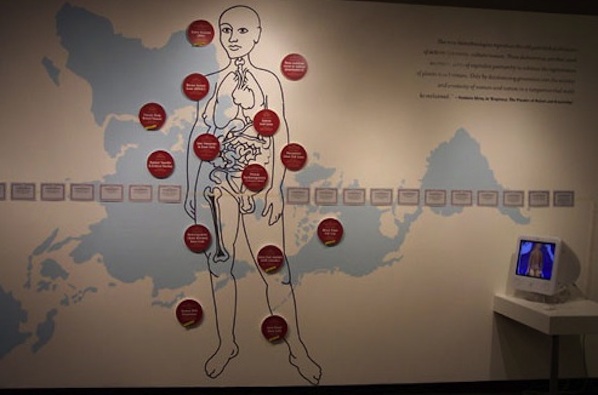
subRosa’s overarching vision to create discursive frameworks where feminist interdisciplinary conversations and experiments can take place, is research-led and takes its cue from the canon of radical feminist art practices. Cell Track: Mapping the Appropriation of Life Materials has featured in a number of exhibitions, most recently in Soft Power. Art and Technologies in the Biopolitical Age, Vitoria-Gasteiz, Spain. This project consists of an installation and website examining the privatization and patenting of human, animal and plant genomes in the context of the history of eugenics. Cell Track highlights the disparity between the bodies that produce stem cells and the corporations that control the products generated from them. Bringing together scientists, cultural practitioners and wider publics in the construct of the gallery space, subRosa generate discourse around the patenting and licensing of DNA sequences, engineered genes, stem cell lines and transgenic organisms. The project’s participatory aim is to set up an activist, feminist embryonic stem cell research lab in order to produce non-patented stem cell lines for distribution to citizen scientists, artists and independent biotechnologists. This environment of shared knowledge production and speculative, alternative, research activity is at the heart of subRosa’s social practice.

Due to the pedagogical nature of subRosa’s activities, the collective’s critical stance towards IVF and ART has proven to be particularly provocative, and their scepticism towards the emancipatory language of ‘choice’ co-opted by ART, has been met with some resistance by other feminist practitioners. However, it is in this very agonism[6] that subRosa wish to become more visible, and they welcome criticism and debate in the public discursive spaces that they create. In a recent interview, Faith Wilding and Hyla Willis both expressed their desire to generate an expanded, and deeper discussion about the wider issues involved in ART in particular and biotechnology’s effect on female identity in general. subRosa’s potential to reach wider publics and audiences is partially determined by the socio-political context of the communities in which they operate. Perhaps in reaction to this, subRosa’s focus is now shifting towards embracing the aforementioned ‘cultural turn’ in science as they address the position of feminist scientists themselves.
The imperative to reclaim feminist discourses and narratives in science is of growing concern to subRosa, as they believe that feminist agency lies in the practice of science itself. By relocating lab-work from the dominant scientific institutions to the public environment of the gallery, subRosa provide the critical space in which new feminist scientific praxis can operate,[7] and new dialogues and discourses can be created. Their conviction that political and critical traction lies in practice as discourse, and the potential of face to face encounters, is demonstrated in their recent project for the Pittsburgh Bienal: Feminist Matter(s): Propositions and Undoings (2011). In this installation, SubRosa take Virginia Woolf’s[8] assertion that ‘tea-table thinking’ provides an effective antidote to the male-driven ‘war-mentality brewed in boardrooms and command centers’ as their main conceit. Redeploying Woolf’s idea toward the rethinking of the traditionally male-dominated discipline of science, Wilding and Willis’ installation brings traces of the science laboratory to the intimacy and hospitality of the kitchen table, and in turn, also situates what is normally a private, feminized space in a more public domain.
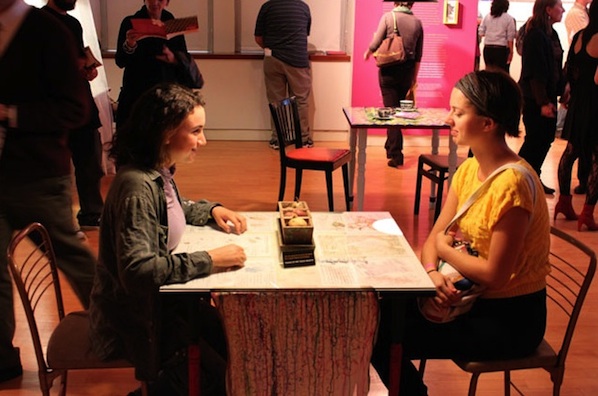
These tables stage a dialogue between one or two visitors in response to the presentation of female figures in science, both the popularly acknowledged and the underexposed. subRosa foreground women scientists past and present and reimagine an alternative, feminized history of science and technology. The installation explores feminism and participatory practices as modes of scientific research, with the aim of generating dialogue and discourse around the questioning of the dominant historical narrative of science. Specially tailored installations reside on each table, evoking lab work while celebrating the history of the women protagonists they play host to – from anarchist painter Remedios Varo to geneticist Barbara McClintock.

subRosa’s pedagogical imperative is at once inclusive and provocative, and their role as facilitators of a discursive space outside the traditional institutions and control structures of science, is where their radical aspirations lie. Pedagogical art practices often teeter on the brink of propaganda, and subRosa are quite comfortable with the propagandistic label. Considering the economic and cultural climate in the USA with regard to the politics of reproduction, their work has been particularly well received in the context of European cultural institutions, whereas in the USA there is greater interest for the work in academic institutional settings. Perhaps this could be symptomatic of the general privileging of discourses around intersex, transgender and queer subjectivities. The dominant bias of the gatekeepers of the artworld to showcase queer practices is evident in the promotion of artists such as Ryan Trecartin and Carlos Motta on the international circuit. Curators have tended to position artists addressing the gendered ‘Other’ within a contemporary queer framework, whilst keeping feminist art practices on the peripheries of 1960s/1970s retrospective nostalgia. This tendency presents a muddying of the waters for contemporary feminist art practices such as subRosa.
This may also be part of a more general tendency to demonize and move away from feminist identities and discourses in wider society. The academic shape shifting from ‘women’s studies’ to ‘gender studies’ to ‘queer studies’ has diminished the feminist conversation and, therefore, the impact and receivership of feminist art practices. This has rendered the popular conception of ‘Queer’ as acceptable and non-aggressive. Furthermore, the term ‘Queer’ and the subsequent morphing into the verb ‘queering’, has been co-opted by transdisciplinary academic discourse, and is now an expansive, all embracing cultural term – a phenomenon that has met with a certain amount of scepticism from the queer community.
This privileging of the expansive ‘othering’ of queer rhetoric has often resulted in feminism being rejected as a radical and out-dated political identity by art practitioners themselves. This ambivalent attitude is perhaps also indicative of the wider feminist debate, in which post-feminism has splintered into fragmented, diluted groups, each policing their own identity politics with little sense of a bigger struggle. However, the collaborative, interdisciplinary environments orchestrated by subRosa signal a return to the indisputably material actuality of the female body. Through their insistence on the possibilities of feminist bench-side practices, and the forensic unpicking of the power/control structures inherent in biotechnology, subRosa expands the feminist lexicon through the empirically re-appropriated organic materiality of the body.
Old Words Made New.
Ethical knowledge, sacred spaces, forgotten histories and challenging predispositions.
Furtherfield is pleased to present the excellent cross cultural project DISCLOSURE: Old Words Made New. We have collaborated with Medieval Studies Graduate Students from King’s College London, and artist Erica Scourti to reversion a contemporary representation on the subject of medieval social lives, based on the theme of ‘ethical knowledge’ through Old English. With a combination of works in the Finsbury Park surroundings, sound installations, collaborative writing, and performance.
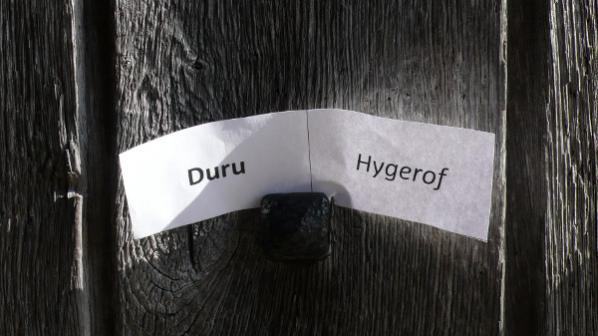
The project is part of Colm Cille’s Spiral project, a collaboration between Difference Exchange, King’s College London and Furtherfield, and takes place alongside a commission by artist Erica Scourti. It relates to a series of contemporary art and literature commissions and dialogues rethinking the legacy of 6th Century Irish monk Colm Cille, or St Columba, that unfolds across Ireland and the UK, starting and ending in Derry-Londonderry for City of Culture 2013.
Come and add an Old English phrase to the Wordhoard painted onto the walls of Furtherfield Gallery!
Help us create a visual hoard of words, received from scholars all over the world, which will show the extent of the current study of Old English. Explore the memories of our site-specific work at Bradwell-on-Sea, a church built in 654 by St Cedd, by watching our recording of the event. Walk through Finsbury Park listening to the sounds of Old English poetry and meditating on trees that bleed.
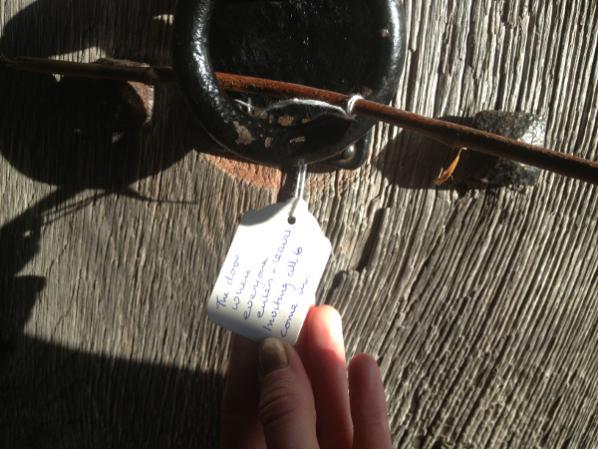
For the event, Erica Scourti will present another iteration of her video postcard project, currently existing as a series of empty, annotated videos on her Instagram profile. As a one-off, the full set of over 100 videos emailed out to friends, family and online contacts over the summer period will be screened, the only time they will be shown publicly. Also, the metadata the recipients provided for each video will form the basis of a sound piece that will play throughout the afternoon.

The project has explored new ways to understand and interpret the language and social contexts of a time where Christianity was at its early phase of using its people through networks around the UK, whilst pagan culture was still thriving.
The question posed to the King’s College students was “If we existed in a contemporary society where the Internet could no longer be trusted because of systems of networked surveillance, what would be the different ways in which we could communicate?”
In July 2013 they showcased their findings at a live public event at the historic Bradwell-on-Sea Church, which is now being held at Furtherfield.

A warm thanks to Kings College lecturers Professor Clare Lees, Dr Joshua Davies, Dr James Paz for collaborating.
Other Colm Cille’s Spiral projects have taken place across the UK and Ireland as part of Derry-Londonderry City of Culture and can be explored at www.colmcillespiral.net
Furtherfield Gallery
McKenzie Pavilion, Finsbury Park
London N4 2NQ
T: +44 (0)20 8802 2827
E: info@furtherfield.org
Furtherfield Gallery is supported by Haringey Council and Arts Council England.
Featured image: PAH graphic resources
Over the last few years there has been a keen interest in discussing the notion of public space; demonstrations, camps, collaborative projects, artistic interventions, community projects, social activism are just a few names that exemplify the different forms of engagement that deal with the complexities of it. Despite their different aims and impact most of these actions have given evidence of the need to re-appropriate the public space; through collective and networked practices individuals, groups and organizations ‘challenge the conventional notion of public and the making of space’[1]. Although the liveness and even virality of these events, projects or actions hinder any prediction about its midterm effects or endurance, the fact is that there is an emerging legacy that is already dismantling certain assumed thoughts about ‘the public’.
The retiree Hüseyin Çetinel’s initiative of painting a public stairway with rainbow hues in his neighbourhood in Istanbul has been the last case involving cultural transformation, virality and social activism. After he painted the local stairs to ‘make people smile’ and ‘not as a form of activism’ the municipal cleaning service painted over the stairs in dull grey provoking a chain reaction that mobilized citizens to paint stairways throughout the city. Local communities and social movements appropriated this beautiful participatory action as a form of protest after Çetinel’s stairway became viral in the social media. This example shows the intricacies of the public space and its expanded performativity. As Gus Hosein Executive Director of Privacy International argues ‘there is a confusion as to what is public space is and how it relates to our personal and private space’ in a social context where the emergence of the use of social media and surveillance as well as the appropriations of the space by private corporations and social movements and individuals are constantly questioning its boundaries[2].
From my point of view, some of these actions that play in-between the social, political and artistic might be considered re-enactments of the public space as they aim to reconstruct the term itself by applying alternative procedures and by generating at the same time transductive pedagogies. However, in order to give a comprehensive understanding of the implications of the public space and its controversies it is essential to rethink the notion of the private space. Traditionally, home has been recognized as the physical private space; home is the main representative of the private sphere that encompasses the domestic and intimate. According to Joanne Hollows, ‘the distinction between the public and the private has been a key means of organizing both space and time’[3] and consequently to promote a clear functional division.
This traditional perspective has been questioned and altered due to some current issues and events that are noticeably interconnected with those of the public space; an increasing number of evictions and homeless peoples, housing policies, escraches[4] in front of the houses of politicians, the appearance of ghost neighbourhoods due to real estate speculation, home as an alternative space for performance practice and community development, among others. Thus, home might be conceived as a container of individuals and actions, as a social product or instrument, as topographical placement or as a relational structure. Home entangles interesting layers of analysis that might serve to establish new relational and yet responsive parameters to understand both the private and public space. Some of the following examples that perform between art, activism and affections corroborate the significance of home; as Blunt and Dowling state ‘home is not separated from public, political worlds but it constituted through them: the domestic is created through the extra-domestic and viceversa’[5].
In Barcelona, the city where I live there have been noticeable factors that have stressed the importance of home as a topic of interest. Probably the most significant case is the increasing number of evictions―over 350.000 in the last four years―as many families cannot afford their rent or mortgage after losing their jobs (the unemployment rate is 26.3%). Beyond the personal implications and devastating effects that evictions have on families, they also indicate that home is not anymore our secure space or refuge; on the contrary, if the individual does not respond to the production and consumption requirements is physically displaced to the streets. Consequently, many citizens are trying to find shelter back again in the public space.
If the 70s Richard Sennett announced the decay of the public space by the emergence of an ‘unbalanced personal life and empty public life’[6], the related problems with housing have provoked the reactivation of the public space at many levels. At the same time, there is an increasing culture of the debt that ties together individuals and financial institutions in long-term relationships. As Hardt and Negri explain ‘Being in debt is becoming today the general condition of social life. It is nearly impossible to live without incurring debts—a student loan for school, a mortgage for the house, a loan for the car, another for doctor bills, and so on. The social safety net has passed from a system of welfare to one of debtfare, as loans become the primary’ means to meet social needs’[7].
These ideas can be exemplified by the actions of PAH (The Platform of People Affected by Mortgage Debt), an activist group of citizens that stops evictions through demonstrations and guerrilla media actions in the streets and that also helps struggling borrowers to negotiate with banks and promotes social housing[8]. This organized group of citizens has been awarded this year the Citizen Award by the European Union for denouncing abusive clauses in the Spanish mortgage law and battling social exclusion. PAH has received the support of the collective Enmedio that generates actions in the midst of art, social activism and media. For example, their photographic campaign ‘We are not numbers’ consisted in the design of a collection of postcards each one containing a portrait of a person that was affected by the mortgage debt by a local bank entity. The postcards were delivered in front of the bank’s main building for people to write a message. The written postcards were then stuck in the front door main door turning numbers into a collage of human struggle. PAH and Enmedio actions become highly effective thanks to their media impact and their virality in the social media. Invisible individuals isolated in their struggle, find alternatives through an assemblage of support that connects the public and private space and that is also mediated by informative and constitutive tools that the virtual space offers. As Paolo Gerbaudo claims ‘social media have been chiefly responsible for the construction of a choreography of assembly as a process of symbolic construction of public space which facilitates and guides the physical assembling of highly dispersed and individualized constituency’[9].
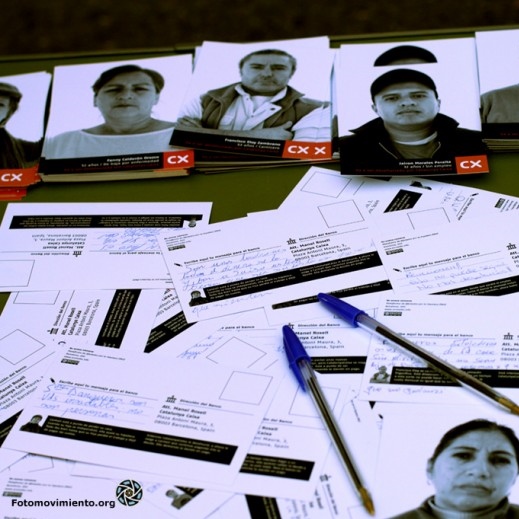
Processes of speculation, gentrification and eviction can be found in many western cities as well as different kinds of collectives and groups working for human rights advocacy. This is also the case of the Brooklyn based collective Not an Alternative has also carried out different guerrilla actions concerned with the problem of housing and eviction such as their series of workshops and media actions of ‘Occupy Real State’ or ‘Occupy Sandy’.
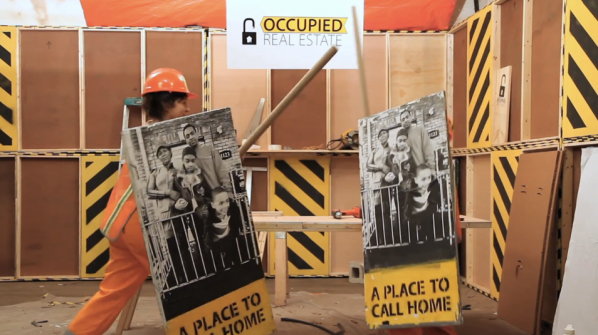
Many of the actions that these collectives promote might be understood as DIY activism as they are based on the empowerment and the development of skills. In this regard, it is interesting to observe how DIY that traditionally has been related to activities in the domestic space serves as a strategy to protect it and to trigger new forms of protest in the public space while enhancing the creation of an expanded family (or at least a sense of togetherness) through the social media.
Despite these actions, the public space is still home for many individuals. In the UK, different associations are concerned about the impact that the implementation of the bedroom tax might have, especially in London where the number of rough sleepers rises every year with an increase of the 62% since 2010-2011. The scenario is not different in many other European cities where beyond these worrying numbers there is also an increasing number of regulations and policies that difficult the life in the public space. As Suzannah Young stresses, ‘homeless people often need to use public space to survive, but are regularly driven off those spaces to satisfy commercial or even state interests’. Public space is often only open to ‘those who engage in permitted behaviour, frequently associated with consumption’[10]. The increasing number of quasi-public spaces―’spaces that are legally private but are a part of the public domain, such as shopping malls, campuses, sports grounds’ and so forth― questions again the boundaries of the private and public space, especially when ‘some EU cities use the criminal justice system to punish people living on the streets for doing things they do in order to survive, such as sleeping, eating and begging’[11]. All these policies have clear implications in the use of space and it is potential possibilities. The fact that the public space becomes home involves the reconsideration of the uses of the public space and the understanding of it through the eyes of the people that fully inhabit it. The London collective The SockMob run the Unseen Tours, alternative city tours guided by a group of homeless. Their embodied knowledge appears as a key aspect to develop these DIY versions of the city while promoting relationships between the homeless and the tour participants.
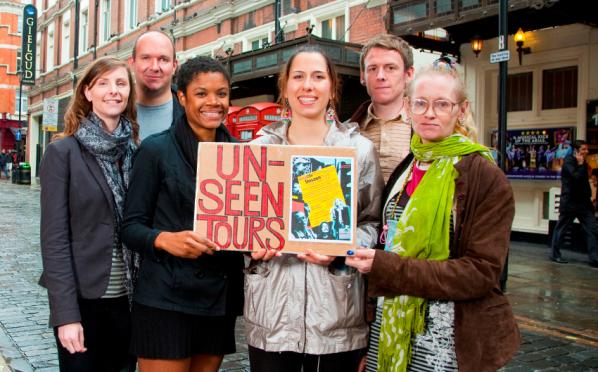
Where is home? In which ways access to spaces gives us opportunities and rights as individuals? In which ways all these site-specific initiatives that often have a transnational reach re-construct the notions of private and public space? How these DIY and media actions are generating new forms of visual arts activism? Despite the fact that these queries might need further analysis, I believe that the qualities of space becomes visible and tangible through these interactive and responsive actions with the spaces. Recently, an international group of activists, visual artists and scholars have published a handbook in which their consider these forms of activism militant research. According to them, ‘militant research involves participation by conviction, where researchers play a role in the actions and share the goals, strategies, and experience of their comrades because of their own committed beliefs and not simply because this conduct is an expedient way to get their data. The outcomes of the research are shaped in a way that can serve as a useful tool for the activist group, either to reflect on structure and process, or to assess the success of particular tactics’[12]. Hence, the idea of some hands-on, the acquisition of skills and the performance of theory appear as key aspects to disentangle and analyse the qualities of the space.
From an artistic perspective home has been crucial in many historical periods of dictatorship to construct an underground scene of the arts; in many of these cases, the evidence of artistic practice appears through testimonials and documentation (photographs, fanzines, recordings, etc.). Again different forms of media help to make the clandestine public, crossing the sphere of the private into the public realm. Thus, the importance of documentation enhances different temporalities of reception and impact in the public realm. In this regard, a differed presentation of the artistic works triggers a reconsideration of the attributes of the spaces too. Currently, homes serve as a basic space for artists to present their work; in the case of music, this is a widely known practice in the US that is becoming more and more common in other countries and other art forms. Homes serve as a personal curatorial space for fine arts artists through the open studio festivals too; artists make their private space open for others as a strategy to show their work publicly. At the same time, in some artistic disciplines self-curation through digital portfolios is becoming increasingly used to showcase artworks. One way or another, home remains often the main space for creativity, production and curation through and expanded DIY conception of their profession.
Home becomes even more crucial in a context marked by the arts cuts and the economic crisis. In this regard, there are initiatives that see an opportunity in the relationship between the public and private space not only to exhibit or perform art but also to trigger a counter-performative form of showing works. This is the case of the domestic festivals that try to challenge the concepts of cultural enterprise and institution by proposing home as a legitimate space of the artistic experience. Friends, neighbours and acquaintances offer a room or a space in their house for artists to perform there (examples can be found in different cities such as Santiago de Chile, Madrid, Berlin, Barcelona, etc.). At the same time, the format wishes to transform the spatial and affective relationships that citizens have with the space, by inverting the spatial dichotomy between the public and the private. Hence, the idea goes beyond to a practical solution to have a space to perform as it also aims to give visibility to performing practices that have not been yet legitimized by the public sphere and they are in danger to remain in a sort of clandestinity (as they are not part of the current cultural market). In this regard, there is also a sense of evicted or homeless art that is trying to produce a social context of experience and articulation beyond the immediate effects of the power that governs at many level the public sphere. These kinds of initiatives generate ‘an activity that undermines the exclusion by letting occur, at the very boundary which separates the public from the “secret”’, an articulation which challenges the prevailing framework of representation and legitimation’[14].
The intersection between art, activism and affections help to explain the multiple and complex questions that configure the notion of home. With these examples I just wanted to stress the importance of home in the discourses that address the concepts of public space/public sphere/publicly. Thus homes ‘are thereby metaphorical gateways to geopolitical contestation that may simultaneously signify the nation, the neighbourhood or just one’s streets’[15]. From a transnational perspective, home seems to pose the crucial questions that connect us with what is happening inside, outside and in-between the spaces and gives us a different perspective to analyse current artistic and social practices that engage with our mode of action, production and identity.
I guess this is all from my home.
Public Screening and Discussion at Furtherfield
Contact: info@furtherfield.org
Visiting Information
THE EVENT HAS LIMITED AVAILABILITY.
PLEASE RSVP TO BOOK YOUR PLACE TO ALESSANDRA
Cornelia Sollfrank will present her latest film Giving What You Don’t Have. It features interviews with individuals Kenneth Goldsmith, Marcell Mars, Sean Dockray, Dmitry Kleiner, discussing with Sollfrank their projects and ideas on peer-to-peer production and distribution as art practice. It includes the projects ubu.com or aaaaarg.org, which combine social, technical and aesthetic innovation; they promote open access to information and knowledge and make creative contributions to the advancement and the reinvention of the idea of the commons.
The post-screening discussion will be led by Cornelia Sollfrank, Joss Hands & Rachel Baker.
On the basis of the interviews of Giving What You Don’t Have, we would like to discuss some of the issues they represent such as new forms of collaborative production, the shift of production from artefacts to the provision of open tools and infrastructures, the development of formats for self-organisation in education and knowledge transfer, (the potential and the limits of) open content licensing as well as the creation of independent ways of distributing cultural goods. An implicit part of Giving What You Don’t Have is a suggested reconceptualization of art under networked conditions.
Cornelia Sollfrank is a postmedia conceptual artist and interdisciplinary researcher and writer. She studied painting at the Academy of Fine Arts in Munich and fine art at the University of Fine Arts of Hamburg (1987-1994). Since 1998 she has taught at various universities and written on issues in the nexus between media, art and politics. In 2011 Sollfrank completed her practice-led interdisciplinary research at Dundee University (UK) and published her PhD thesis with the title Performing the Paradoxes of Intellectual Property. In addition to her work in the artistic and academic fields, Sollfrank gathered experience in the private sector by working as product manager for Philips Media for two years (1995-1996).
Joss Hands‘ research engages the relationship between media, culture and politics. His recent work has explored the role of digital media in direct action, protest and activism, culminating in his book @ is For Activism: Dissent Resistance and Rebellion in a Digital Culture, published by Pluto Press in 2011. His previous research has explored the role of new media in formal democracy and governance as well as its cultural, economic and social impact. He has published in a number of journals such as Information, Communication and Society, Philosophy and Social Criticism and First Monday as well as writing commentary for publications such as Open Democracy, IPPR Journal, The New Left Project, and others.
Rachel Baker is a network artist who collaborated on the influential irational.org. Her art practice explores techniques used in contemporary marketing to gather and distribute data for the purposes of manipulation and propaganda. Networks of all kinds are “sites” for Baker’s public and private distributed art practice, including radio combined with Internet (Net.radio), mobile phones and SMS messaging, and rail networks. She has presented and exhibited work internationally at various new media and electronic art festivals.
Giving What You Don’t Have is an artistic research project commissioned by the Post-Media Lab, Leuphana University.
Furtherfield Gallery
McKenzie Pavilion, Finsbury Park
London N4 2NQ
T: +44 (0)20 8802 2827
E: info@furtherfield.org
Furtherfield Gallery is supported by Haringey Council and Arts Council England.
Post Digital Print
The Mutation of Publishing Since 1894
Alessandro Ludovico, 2012
Onamatopee 77
The sticky fingerprints on the black-and-pink 1970s photomechanical typography-style lettered cover of “Post Digital Print” speak volumes about the nature of physical print after the event of digital typography. It is this sense, of print in a state of technical and historical play after the full event of the digital rather than its end or irrelevance, that Alessandro Ludovico is considering history of print publishing here. But why 1894?
Ludovico dates the first announcement of “the death of print” to that year. More than a century later independent bookshops, large bookshop chains, newspapers and magazines are having to compete with Internet-based publishing or be wiped out. It’s not clear whether physical print publishing believes it can survive this encounter with the digital. Ludovico explains how it can and why it is important that it should.
There are three main threads to “Post Digital Print”. The first is a wide-ranging technical history of print, including technologies that were imagined or proposed but never became widespread. The second is a history of radical political and avant-garde historical use, misuse and critique of those technologies. And the third is an analysis of the social and technological networks that distributed the products of the first two. These threads tie together finally in a consideration of the current situation and future prospects of physical print publishing.
The mainstream history of printing goes from movable type through hot metal to photomechanical and finally PostScript-based publishing. This is how books and newspapers have reached millions of people. But not every print production technology has lasted or gained mass adoption. I was surprised to read that Ezra Pound once wrote a poem specifically for Bob Brown’s “Readies” (an imagined 1930s motorized-paper-strip book replacement), and in the first half of the twentieth century newspapers were transmitted by telegraph, telephone and radio ready to be listened to or remotely printed.
The technical failings of dead media become aesthetic affordances in their afterlives. Letterpress embosses the paper it is printed on, lithography suffers misregistration and other artifacts, and newsprint smears and creases. These are now the very qualities people seek from those media. This is different from mere nostalgia, in that it is used to create a contemporary aesthetic, but what of the “Readies” and other book replacements that never were? They are the subconscious or the dreams of print technology, forgotten futures that help to understand the paths that were taken.
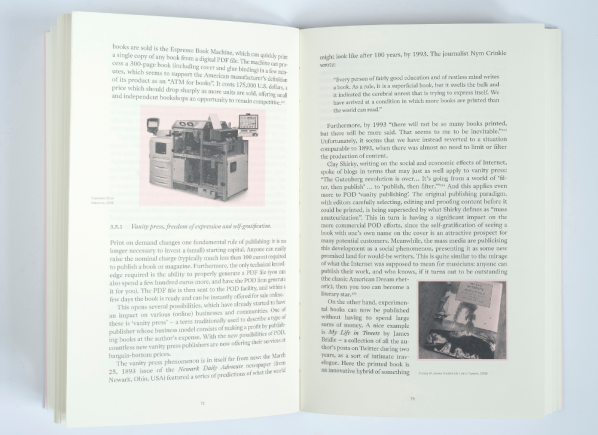
Not every print technology was designed to print millions of copies. Spirit duplicators, photocopiers and print-on-demand publishing all allowed democratic access to print for smaller print runs of projects with less mass appeal. Ludovico tracks this thread of print history from mid-twentieth-century science fiction fanzines through the alternative press to the contemporary fanzine scene.
Artists and political groups pushed the technology and aesthetics of each new print technology with pamphlets, unlicensed newspapers, the alternative press, fanzines, and books and journals. Ludovico uses avant-garde and culture jamming artistic publications, from the Dadaists and Futurists to the Yes Men and Decapitator to demonstrate how artists have pushed the form and content of print publications.
Once you have printed a publication you must distribute it. For publications outside of mainstream or official culture, this is a task that has varied in difficulty from inconvenient to deadly. British newspapers had to be licensed (and thereby censored) by the state in the early nineteenth century. Alternative political views were printed in unlicensed newspapers printed by sympathetic printers. These newspapers outsold the official press, and were subject to repression by the state, leading to funds being set up to support the families of arrested printers.
In the Soviet union, Samizdat copies of books were produced with stolen or smuggled paper and borrowed presses. Less dramatically but still outside the mainstream or official culture, the alternative press and fanzine scenes have survived through mail-order print and online catalogues and through conventions. And the Fluxus scene distributed its print products through an international network of distributors.
The “gesture” of publishing, as Ludovico calls it, is an editorial one and without this editorial control the Internet of blogs and social media presents a problem of filtering rather than access. Writing from the web can be taken into print cheaply through print-on-demand, led by the example of James Bridle’s “My Life In Tweets”, 2009. Where an artist led, business followed and there are now many services that will print your social media as books for you.
(What of eBooks? Ludovico considers their technology and its history in depth, but is not hopeful for them. They simulate print ever more closely, confirming Ludovico’s argument that print is the better interface. They have an environmental impact that makes books look more appealing, and suffer all the problems of censorship and technological obsolescence that print now does not.)
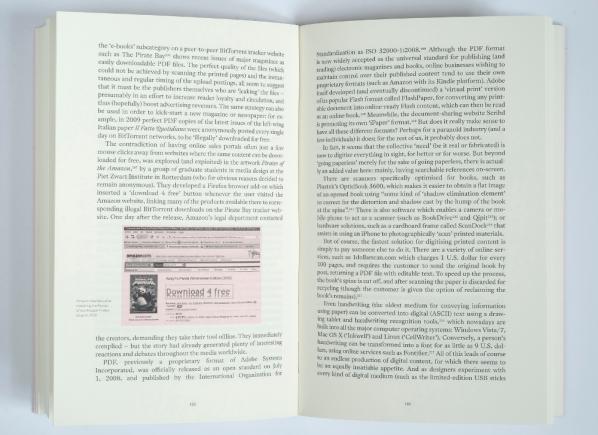
In the final chapter (“The Network”) the author enters the story that he is telling. Since the early 1990s Ludovico has produced the magazine “Neural” (I’m a subscriber and I cannot recommend it highly enough), and has been involved in other art projects, events and interventions that have placed him in the thick of the action of the changes in publishing and textual media that have occurred over this period. Rather than affect a false objectivity, Ludovico lets you know where he is coming from and shares the particularities of his broad experience. This lends his conclusions a context and authority that mere theory might lack.
The history and experience that Ludovico lays out leads to the present crisis of print and answers it with the terms that he has established. How can we continue to print physical books? With the kinds of networks that have always propagated and paid for art and for the alternative press. Why should we continue to make them? Because they are better interfaces, archives, and art objects than purely digital objects.
Post-digital print is print with its production and in some ways its very meaning transformed. Print must adopt digital-inspired models of production and distribution to survive. As Ludovico argues it must adopt the digital strategy of the network, in a free and open way. If it does not, we lose a vital part of our collective cultural voice and memory.
“Paper is flesh, screen is metal. … Flesh and metal will thus merge as in a cyberpunk film, hopefully spawning useful new models for carrying and spreading unprecedented amounts of information and culture.” (Post-Digital Print, p117)
The text of this review is licenced under the Creative Commons BY-SA 3.0 Licence.
(Thank you to Freek Lomme of Onomatopee for providing the book interior images.)
LIVE LINK HERE
In collaboration with Annie Abrahams and Emmanuel Guez, Furtherfield presents two new ReadingClub sessions based on excerpts from McKenzie Wark’s A Hacker Manifesto [version 4.0] and the ARPANET dialogues.
ReadingClub proposes a text and an interpretive arena to 4 readers. These readers write together their reading of a text inside the text itself. The audience sees an evolving, cinematographic picture of thoughts and collaborative writing in the making.
Join the performance online at readingclub.fr and use the chat window to exchange, discuss and comment on the performance.
Monday 21 October 2013, 8pm London Time – A Hacker Manifesto [version 4.0]
Online performance session based on an excerpt from A Hacker Manifesto [version 4.0] by McKenzie Wark – with Aileen Derieg, Cornelia Sollfrank, Dmytri Kleiner and Marc Garrett.
Drawing in equal measure on Guy Debord and Gilles Deleuze, A Hacker Manifesto offers a systematic restatement of Marxist thought for the age of cyberspace and globalization. In the widespread revolt against commodified information, McKenzie Wark sees a utopian promise, beyond the property form, and a new progressive class, the hacker class, who voice a shared interest in a new information commons.
Tuesday 22 October 2013, 8pm London Time – The ARPANET dialogues
Online performance session based on an excerpt of the ARPANET dialogues from 1975-1976 – with Alessandro Ludovico, Jennifer Chan, Lanfranco Aceti and Ruth Catlow.
The ARPANET dialogues is an archive of rare conversations within the contemporary social, political and cultural milieu convened between 1975 and 1979 that were conducted via an instant messaging application networked by computers plugged into ARPANET, the United States Department of Defense’s experimental computer network. All participants in the conversation were given special access to terminals connected to ARPANET, many of them located in US military installations or DOD-sponsored research institutions around the world.
What was originally thought to be a historic moment, when figures from within and without the established art canon first encountered the disruptive effects of digital network communications, turned out to be an ongoing research project by Bassam El Baroni, Jeremy Beaudry and Nav Haq.
Further reading:
“This pre-Internet chatroom conversation between Jim Henson, Ayn Rand, Yoko Ono and Sidney Nolan is fake. But it’s amazing” – Robert Gonzalez in io9, December 2012.
“Ronald Reagan has joined the chatroom” – Interview by Richard Fischer, CultureLab with Jeremy Beaudry, one of the artists behind the project, April 2011.
The ReadingClub is a project by Annie Abrahams and Emmanuel Guez, inspired by Brad Troemel’s Reading Group and the Department of Reading by Sönke Hallman.
The project is supported by Dicréam.
+ More information about ReadingClub
Featured image: America by Felix Gonzalez-Torres, exhibition at the 2007 Venice Biennale
“There is no outside anymore.”1 – Olafur Eliasson
On May 16 2007, the Guggenheim issued a press release stating that Felix Gonzalez-Torres would represent the United States at the Venice Biennale2. The Cuban-born artist, whose relationship to his adopted country was critical and complicated, had become a poster child for it. His body of work was edited to exclude explicit homosexual references: “gone are the doubled clocks and almost all the doubled circles, all the pieces with “Loverboy” in the title … and all specific references to Ross”3. The exception to this was a major new work, a doubled marble pool, which was presented not as a “figure of queer coupling”4, but rather described in vague, sublime terms: a “sign of infinity … a beacon of hope”5. This frictionless ideological integration of the artist into the State Department programme was a notable example of cultural co-option, a de-queered oeuvre appropriated for “conservative ends”6. But it also symbolized a sophisticated hegemony in that the artist’s work engendered an ‘interpassivity’, performing a counter or anti-stance for the public and thereby enabling a critical catharsis to unfold in a benign fashion7. While Gonzalez-Torres himself was acutely aware of the potential for his work to be caricatured or co-opted8, this posthumous assimilation is indicative of a cultural terrain which has become increasingly precarious, a kind of critical claustrophobia where free territory is quickly swallowed up and every potential step has already been predicted.
If this is the hazardous space of the outsider, then many contemporary artists can be characterized by their willingness to work from within: employing the logic, language and conventions of their chosen systems in preemptive co-option or collaboration.
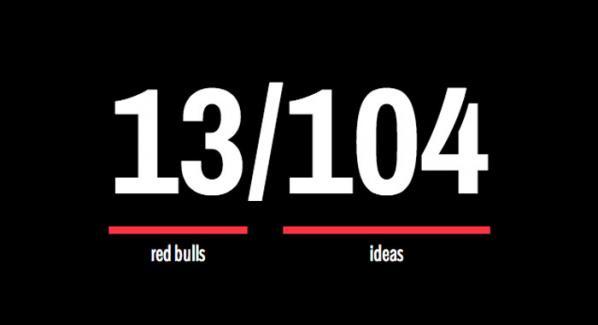
In Ryder Ripp’s “HyperCurrentLiving”, the artist collaborates with Red Bull in a month-long ‘performance’ where Ripps generates ideas and consumes the company’s energy drinks, updating these daily totals on a website. A live webcam allows the public to monitor his output: the artist sitting in front of a laptop in a self-designed karate suit emblazoned with both the Ripps and Red Bull graphic identities. The artist exemplifies the artist as cultural worker and in turn, the cultural worker as late capitalism agent par excellence.
A one-man advertising agency, Ripps engages in the type of ‘blue sky thinking’ prevalent across the communication sector, producing dematerialized commodities distributed virally via his Twitter feed. One concept (“a single serving site that tells you if you are being exploited at your internship”) cascades quickly after another (“an app that tells you if your gif is derivative or not”)9. Binge energy-drinking fuels this surge of productivity, shrugging off exhaustion and nutrition as inconvenient bodily constraints which drag down the bottom line.
On the face of it, this co-branding exercise between the artist and Red Bull, who spend 30-40% of their earnings on marketing10, seems like a productive synergy, a perfect collaboration. But Ryder is simply too much: by living out the brand (and wider contemporary) ideals to such an extent, an unspoken malaise is also laid bare. Aspirational traits lose their gleam: “connection” slides into technological incarceration, “busy” blurs into workaholic. While Ripps online persona remains vigilant through the night, his tweets static and steady, his disintegrating, hopped-up body quietly problematizes the ideal of the supercharged creative. By literally incarnating brand values, Ripps offers himself up as a sacrifice on the altar of hyper capitalism – a body incessantly creating and indefinitely deferring collapsing.

Julius von Bismarck operates within the logic of a different system: media and image production. People’s “great trust in their photographic reproductions of reality”11 motivated the development of the Image Fulgurator, an optically triggered projector which beams an image the instant it detects a camera flash. Essentially the device “lies in wait”12 for a member of the press to take a photo, infecting their snapshot with a text or image motif at the same moment it’s taken. If media is the “continuation of politics by other means”13, then the gun-like Fulgurator is part of the “new weaponry of information and communication technologies”14.
In one of von Bismarck’s best known works, he attended a speech by Barack Obama, projecting a white cross onto the podium and highlighting the “cult of personality” centred around the presidential candidate. Unlike post-editing techniques such as Photoshop, von Bismarck’s interventions insert themselves into the physical fabric of situations where power is performed and aura is staged: “NO” hovering above the Pope, an “O2” logo momentarily pinned on Berlin mayor Klaus Wowereit or a Magritte dove overlaying Mao Zedong’s portrait in Tiananmen Square.
The artist follows PR logic to it’s inevitable conclusion, where the immediate public becomes merely a prop in a mediated reality staged primarily for the press: sight lines and backdrops defined for a camera’s CCD chip. By operating within this temporary media space where the eye is largely superfluous, von Bismarck’s sub-second intervention is able to avoid detection while simultaneously rupturing an otherwise contiguous reality.
In many respects the so-called democratisation of news media has served the established providers – citizen journalists supplementing bare-bones media units and eyewitness smartphone footage winning back viewers for clicks and advertising revenue. Von Bismarck’s media interventions, however, take this phenomenon at face value, his images asserting their equal rights with any others. Decoupled from the copyright assertions of major media networks and distributed via Google spiders or social interactions, this “errant idea”15 becomes itinerant, taking its place alongside other “legitimate” imagery in search results and image banks.

Screenshot from Ed Fornieles’ “Dorm Daze”
Ed Fornieles’ “Dorm Daze” project stages its intervention in the social media sphere. The London-based artist invited his friends to participate in a 3 month “semi-scripted”16 performance on a self-contained network on Facebook. The participants scalped profiles from real American college students and enacted a series of fictional narratives centred around this formative period: a girl cheating on her first crush, a fraternity hazing gone wrong, the suicide of a good friend. The increased sophistication of social networks coupled with fluency in internet tools and tropes allowed the participants to employ a range of methodologies to advance the narrative: maps to establish location, comments on an upcoming event, live chats for personal encounters, or friends tagged in photos.
Like von Bismarck, Fornieles harnesses the goal of a system, extrapolating it to an extreme.
Here the identity tweaking carried out by every Facebook member – snapshots retouched and likes carefully distributed – is transformed into wholesale identity construction, preening becoming performance.
Participation is the currency of social networks, modeled by Facebook CEO Mark Zuckerberg himself, who had no qualms about setting most of his content to open and “didn’t see a need to limit visibility of pics with my friends, family”17. But while Fornieles downplays any subverting potential in the project, stating that it brought “committed users”18, these aren’t the users that the Facebook management, its new investors, or its advertisers are looking for. Fornieles has jettisoned the last shred of “authenticity” from the social media sphere, producing a group of profiles who can’t be monetized or monitored because of the simple fact that they don’t exist. Neither bots nor bodies, these ghost profiles LOLing their way through Facebook mock a billion dollar infrastructure, mining every connectivity tool in a purposeless play with a null result.
While this self contained durational performance was merely a speculative fiction, the feedback loop it initiates in the participant’s everyday existence is more persistent. Fornieles elaborates that the skills learnt “during this hypothetical three month exodus would be reapplied in conventional reality”19. For a generation brought up with avatars and profile pics, this practiced performativity sets the stage for a more permanent and personal “enhanced narrative”20, engendering an intervention IRL (in real life) which further blurs the “real/fictional binary”21.
On the face of it, Ripps, von Bismarck and Fornieles belong to an era of artists that may “no longer dream of an outside”22, their work utilizing the logic of branding and media to stage interventions that appear more collaborative than combative, preemptively disarming attempts at appropriation. But the lock-step engendered by this emulation inevitably fails. Accelerated by technology, betrayed by a body or liberated by the lack of one, this faltering may not disrupt the march of the inevitable so much as expose its inherent untenability.
“a symbol of indeterminate meaning, floating/rotating into the empty white WAG room with no viewers” Bill Miller
Widget Art Gallery. July 17th – August 17th 2013.
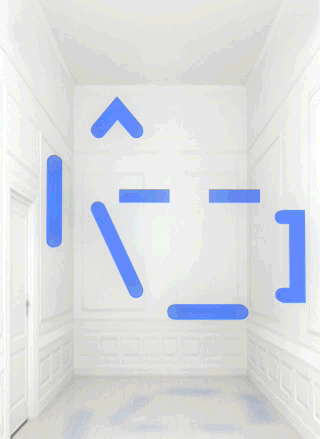
Chiara Passa’s Widget Art Gallery (WAG) has been serving art online since 2009. Named for the ability to install the contents of its web pages as a Mac OS X “dashboard widget” or iOS icon, it presents virtual art objects against a standard backdrop or in a standard virtual environment that looks like a white-painted townhouse room repurposed as a small gallery space in an exclusive part of town.
The instructions for using the WAG are Apple hardware-centric, and as I don’t have an Apple device I had to cheat and view it on my GNU/Linux desktop. Digital art’s medium specificity consists in part of its reliance on the facilities of particular hardware and operating systems. This can be exclusive, not everyone owns Apple hardware, but it can also be realistic, Apple’s hardware currently defines computing in the popular imagination.
The image of the gallery in the widget, like the image of a leather desk organizer or a wire mesh microphone in an mobile app, or the very idea of “the desktop” in a desktop GUI, it is a skeuomorph. It is a non-functioning symbolic form that cues the viewer in to the affordances that the experience of the software offers. Like the white cube of a real art gallery, it frames the experience of looking at the artwork and emphasises its seriousness, value, and singularity.
From July to August 2013 the work inhabiting this virtual space is Bill Miller’s “A Symbol“. The titular icon is a composition of soft light blue graphic elements that look like ASCII art that are not aligned to a teletype grid. Or like a misaligned LED matrix. It evokes the art of early military computer games, or the more complex emoticons, or maybe a lamp or a teapot. It rotates, blurs, flickers and stops, glitching and returning.
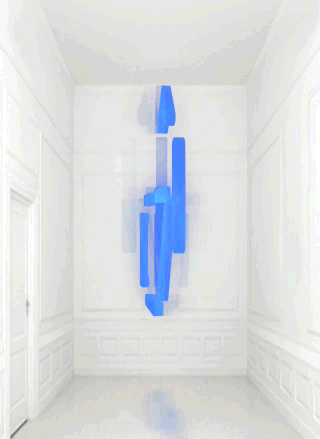
Widget Art Gallery installations are presented as animated GIFs, but they are different from the usual hilarious recuperations of Compuserve’s low-bandwidth image format in their lack of all-overness and of mass media appropriation. Animated GIFs are often glitched, but with “A Symbol” it is the object depicted in the animated image that is glitching, not the image itself.
The rotating symbol used to be a staple of broadcast television identities. The flickering or glitching symbol signifies signal hacking, technical difficulties, or coming into or out of being by teleportation or rezzing. Popular culture reactions to technology emphasize its flaws and failures to make its smooth surfaces tractable to the imagination. But this symbol remains opaque and self-assured, always returning to its original state.
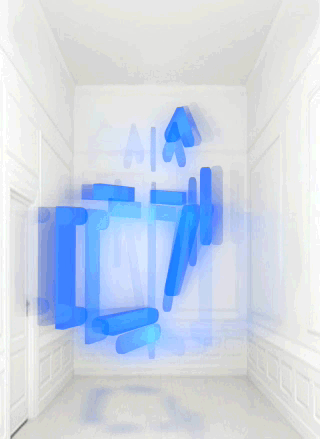
The symbol’s reflection on the floor pushes it into and anchors it in the imaginary space of the gallery. Like drop shadows in graphic design or the handling of shadows and highlights in paintings it is a visual spatial strategy to make its subject seem more real and in the same space as the viewer. The rhythm and pauses in its rotation, especially the pauses, make it seem intentional and sculptural, they give it a solidity in time as well as space.
The accessibility and framing of the Widget Art Gallery mean that “A Symbol” can travel with and be accessed by its audience over time in a variety of settings, making it even more a reflection of their lives. “A Symbol” is retro digital but with a contemporary electroluminescent aesthetic glow like a Tron Legacy costume or an Android startup screen, militaristic but emotive, hard-edged but glitching, opaque yet evocative. It is a sign of the times.
Rick Prelinger, an expert on ephemeral cinema, was once asked to estimate how many educational and industrial films were made between 1930 and 1980, just in Canada, the UK and the USA. He gave a long answer but his ballpark figure was around 500,000. The true number may never be known, but it is safe to say that no single archive or university film library has collected them all. And in fact the trend in the last twenty years has been for institutions to get rid of their 16MM collections, given that the cost of storing and digitizing the material is so great. Many works have become “orphans,” having fallen through the cracks of official and commercial preservation programs, and having been abandoned by their copyright holders. Some such films suffer from having been poorly conceived and produced in the first place. Some have lost their educational value due to containing outdated information or out-of-fashion attitudes and imagery. But many are still worth watching (for various reasons) and nearly all can tell us something about an “other” history of cinema, and about the world and ideologies of the 20th Century.
Some 20 years ago, Skip Elsheimer stumbled upon a lot of 500 old films which he managed to purchase for a mere $50. And thus A/V Geeks, his Raleigh-based archiving club, was born. By now the A/V Geeks 16MM stash is among the most impressive collections in America–containing about as many titles as the George Eastman House (though not as many as Stephen Parr’s Oddball Films in San Francisco). Elsheimer now provides digitization services to clients such as Duke University and North Carolina State University, and has traveled around the country sharing gems (and stinkers) from his stacks. Earlier this month Elsheimer corresponded with Montgomery Cantsin (a fledgling archivist currently wanting to digitize 20,000 feet of 16MM) to discuss his experiences and knowledge in this area.
MONTGOMERY CANTSIN: So, you guys have 22,000 films?
SKIP ELSHEIMER: More than 24,000 now. I just got 400 films a couple of weeks ago and I’ve not updated the count.
MC: Which means what you have is among the largest collections of 16MM orphans in the U.S.A?
SE: Yes at some point, though, it’s less about how many you have and more about what you are doing with them.
MC: How long would it take a person to watch all of these films?
SE: I recently tried to figure that out–very unscientifically. I estimated that each film averaged roughly 15 minutes. It’s about 6000 hours. So 250 days of watching films straight through. If you devoted 40 hours a week to it, it would take you 2 years to watch them all.
MC: How many of these films do you watch in an average week?
SE: I watch maybe five or six new films. Unfortunately, I’m getting, on average, two new films a day.
MC: Did you study A/V preservation?
SE: Nope. They weren’t really teaching this stuff when I was in college in the mid to late 1980s.
MC: Have you found yourself to be eligible for grants to do what you do?
SE: I’ve not really pursued any but I think some are out there. I’m lousy at filling out paperwork.
MC: Any advice for emerging amateur 16MM archivists like myself?
SE: Well, my biggest recommendation is: don’t take on too much. It’s better to have a small well-curated collection than a giant collection where you’ve not seen most of the films. This is what I’m coping with. I basically bought a boarding house to house the collection and have to work to support it–this means that I don’t have time to watch those very films. It’s a little counterproductive.
MC: You raised almost $20,000 on Indiegogo. What makes for a successful crowdfunding campaign in your experience?
SE: Yes. Essentially, the crowdfunding project was a way to bring in money so we could block off time to watch and digitize the films in the collection that we hadn’t seen. It was very successful among the friends, family and fans of A/V Geeks but we really didn’t get word out as well as we could have.
MC: Alongside the well-established discourse surrounding “orphan” films, you seem to have initiated a study of the “bastard film.” Can you talk a bit about this?
SE: Well, I had always wanted to host a little symposium. Something were folks could show films and then talk about them afterwards. The first Orphans Symposium was like this and I learned so much then. So, as a joke, I said to some friends that we should have a Bastard film symposium–not really thinking about it as a genre. But after we announced the symposium, a genre started to appear.
MC: Was anything extraordinary unearthed at your recent conference?
SE: There was some amazing stuff. The schedule is still online. I liked the fact that we gave a loose definition of “bastard film” and folks ran with it. Everybody had a film that they’ve always wanted to show an audience but not their average audience–they wanted to be able to show the film to an audience of seasoned film archivists (collectors and academics who would get why the film was a bastard). Also, we made the seminar very screening-centric. We limited introductions to only five minutes (and had an official egg timer to time it) and encouraged discussion at the end.
MC: Was it you that curated the collection called Cartoon Propaganda? What can you tell me about that?
SE: Yes, it was one of my first compilation shows. I’ve since revised it–calling it Anxious Animated Agendas.
MC: Do you know of any evidence demonstrating that CIA fronts produced educational films during the cold war era?
SE: Well, there were a lot of conservative organizations that were making educational films in the United States–because there was a big conservative swing after WW2 and anti-communist slant. The United States Information Agency–our propaganda wing–made lots of films that were distributed around the world.
MC: Yes, since the CIA covertly funded much of that anti-communist “cultural” and intellectual activity, [as outlined by Frances Stonor Saunders in her book Cultural Cold War], I would think they would have had front companies devoted to film production.
SE: It’s possible but really probably wasn’t necessary! The status quo was so conservative and anti-Communist after WW2.
MC: How well-versed are you in copyright law and fair use? How much does it matter that you be well-versed in the laws to do the work that you do?
SE: I’m pretty well-versed–although I’m always learning something. To exploit the films for stock footage use, I have to know something. Also, it’s useful when YouTube issues a take-down of a clip. I have at times been successful in getting things put back up.
MC: Can you talk about one or more of these take-down cases? Did you cite Fair Use? Have they ever wrongly taken something down that was Public Domain?
SE: Yes, they have. The most recent one was where I posted a Sid Davis film called “The Bottle and the Throttle.” It was taken down within 24 hours because it supposedly had content from a Neil Young video in it. I looked at the Neil Young video and realized that it was a bunch of edited Public Domain films–and it even stated so in the video’s description. I appealed to YouTube and it took them about a month to respond. In the meantime, the video was down and I wasn’t allowed to upload anything over 10 minutes–as a punishment. Anyway, in this case, I didn’t have to cite Fair Use. The material in question was in the public domain.
MC: Isn’t your main purpose educational? Isn’t any educational re-use, even of copyrighted material, protected by Fair Use?
SE: There are a number of considerations before you can claim Fair Use. This includes the “purpose and character of the use;” the “nature of the copyrighted work;” the “amount and substantiality of the portion used;” and the “effect of the use upon the potential market for, or value of, the copyrighted work.” Posting educational films in their entirety on the internet knocks out three of the considerations. I’ve been very careful (I’m on my 4th YouTube account) to only post Public Domain stuff.
MC: Do you make ad money on Youtube?
SE: I make a little bit. Like, pennies per a video per a month.
MC: Have you been to Europe to show films?
SE: I’ve not. It would be a challenge to me as a lot of my programming deals with American culture and irony.
MC: Have you met any producers or directors of old educational films? I know Katharine and Bruce Cornwell just passed away recently here in Brooklyn. (I’ve been showing their 1979 film “Dragonfold” to audiences lately.) I know AFANA in San Jose, CA has profiled various makers on their website, such as the Cornwells and Bert Van Bork.
SE: Yes I’ve talked with a couple of producers and lots of people who appeared in the films. That’s one of the benefits of putting these films online–the filmmakers and crew come out of the woodwork and rediscover their work.
MC: Can you describe some special films of yours that are near to your heart?
SE: Depends on the day, but, right now, my most special is the A & B roll from my favorite music video of all time, Renaldo and the Loaf’s “Songs for Swinging Larvae.” Also, I like “Pride on Parade”–an Oscar Meyer film about high school marching bands and making lunchmeat. And, “Tire Rigging Demo”–a promotional piece to show off a new camera rigging that films automobile tires on the road.
MC: Take us through the mental process of determining what films go on to your digitization priority list.
SE: That also depends. With last year’s digitizing campaign, I let those that donated pick from a list of 2000 films. Then I would sometimes pick other films that fit with their lists. Now, its based on projects. If I am working on a project that requires digitizing some film, I’ll upload all the films that are in public domain. Also, sometime there’s a holiday or current event that will have me dig in the collection and try and find appropriate Public Domain films.
MC: Thanks for your time.
SE: Good luck!
Learning with the Lights Off: Educational Film in the United States by Dan Streible.
The Public Domain by Stephen Fishman
Richard Stallman[1] the outspoken promoter for the Free Software movement, hates Facebook with a passion. He proposes that we should all leave Facebook and either find or build our own alternatives. The evidence offered by Stallman’s and the Electronic Frontier Foundation’s (EFF), who have been fighting for Internet freedoms since the 90s [2] shows how necessary it is that we understand and are more pro-active in managing the personal data that we give away through our online activities.
When we subscribe to Web 2.0 platforms such as Facebook we are at the mercy of the data brokers. These companies trade in people’s personal data; information which is aggregated by monitoring user actions and interactions across social media. This information can include “names, addresses, phone numbers, details of shopping habits, and personal data such as whether someone owns cats or is divorced.”[3] Fast moving developments in social media, make it difficult to keep up with the effects and consequences of these platforms. This is why the work of groups such as Commodify Inc. is so valuable. They bring imaginative and critical attention to the situation, sharing their knowledge of these daily networked complexities and correcting what they see as its negative effects.
Commodify Inc. is an artist-run Internet startup producing projects to help individuals capitalize on their online monetary potential. Their intention is to correct the imbalance of power in markets where users have no control over the transactions made with their personal data. They have completed various artistic projects and interventions on social media like, Fame Game, Give Me My Data, and Web 2.0 Suicide Machine. The co-founders are Birgit Bachler, Walter Langelaar, Owen Mundy, Tim Schwartz, with additional contributors Joelle Dietrick and Steven Alvarado.
Their new project Commodify.Us, was initiated when Owen Mundy and Tim Schwartz were invited by moddr_ to a residency in their lab in the summer of 2012 – when they were still a part of the WORM collective in Rotterdam. They worked on an initial idea that would succeed previous experiences of their already well-known and respected projects.
Commodify.Us is currently in beta phase. It promises to provide a platform for people to regain control over the commercial exploitation of their own personal data.
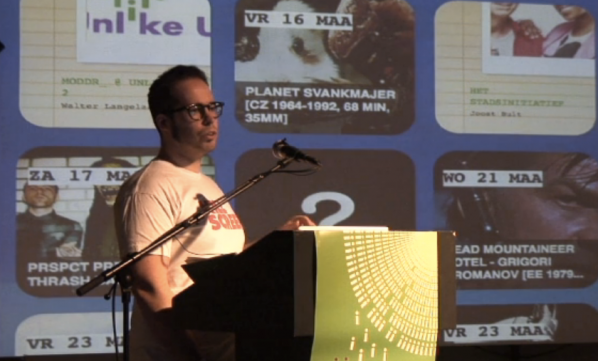
Intrigued by this project I contacted one of the co-founders, Walter Langelaar via email and asked him a few questions about this new platform.
Marc Garrett: Commodify.Us is for people to have greater control over their data. And it works when users export their data from social media websites and upload it to your platform. How will these users gain more control over their data and why is this important?
Walter Langelaar: Commodify.Us provides a platform for you to regain control over the commercial exploitation of your personal data. After exporting your profile data from social media websites and uploading the data to Commodify.Us, you can directly get in contact with interested buyers. On the importance for users I would say that it’s part raising awareness surrounding the monetization of profile data, and part creating a platform where people might work out and discuss how to do this themselves.
MG: It proposes to re-imagine the potential of relational data, creating a casting agency for virtual personas. I’m wondering what this may look like?
WL: We were too. In an early stage of the project we played with the idea that peoples’ various profiles could function like that within an agency; a client would ask for a specific set of qualities and/or characteristics within a set of profiles, and we could provide for this based on the uploads and their licensing options as set by the user. In the end we abandoned this idea for clarity.
MG: Commodify.Us offers people the opportunity to be part of an economy where interested buyers will pay to use the data supplied, unlike existing social media websites. How does this work?
WL: We are gearing up for a launch where the main goal will be to get a critical mass of around, a 1000 profiles. We anticipate that only with this kind of mass or volume will our initiative take hold with the potential buyers we have in mind, and the same goes for the more creative projects that could use the (open) data. Regarding the open profile data and otherwise licensed profiles that allow for reuse, we are researching the idea of ‘Fair Data’ (as in Fair Trade) and how to implement this as a profitable protocol for the end-user.

“Net activists construct tools whose intervention potential can be initiated by users under net conditions. These tools enable activists to develop new strategies in the data space of the Internet because they offer new means: New means afford new ends.”[4] (Dreher)
In his publication Networks Without a Cause: A Critique of Social Media, Geert Lovink lays down the gauntlet and asks us to “collectively unleash our critical capacities to influence technology design and workspaces, otherwise we will disappear into the cloud.” Anna Munster opens her excellent survey, Data Undermining: The Work of Networked Art in an Age of Imperceptibility, by saying “The more data multiplies both quantitatively and qualitatively, the more it requires something more than just visualisation. It also needs to be managed, regulated and interpreted into patterns that are comprehensible to humans.”[5] Commodify.Us goes one step further by allowing users to manage, regulate, repattern and reappropriate their own data using tools that share an essential functionality (if not purpose) with the power tools of Web 2.0.
Those previously seen as rebellious hacktivists are moving into new territories that deal with concepts of service. There has been a significant rise of artists exploring technology to influence mass Internet activity, against the domination of corporations who are data mining and tracking our on-line activities. Another example is TrackMeNot developed by Daniel Howe and Helen Nissenbaum. This is an extension created for the Firefox browser. “It hides users’ actual search trails in a cloud of ‘ghost’ queries, significantly increasing the difficulty of aggregating such data into accurate or identifying user profiles.”[6]
Howe and Nissenbaum mention they are aware their venture is not an immediate solution. However, the more we hear of and join these imaginative strategies “whereby individuals resist surveillance by taking advantage of blind spots inherent in large-scale systems” [7], and the more we adapt our behaviours to adopt these new ‘activist’ services, the more we demonstrate the demand for these new alternatives. And by so doing, we argue for the value of services that we can trust not to steal or manipulate our social contexts for financial and political gain.

A significant value offered by the Commodify.Us platform is the power to manage our own data. The simple act of downloading our own data from Facebook, and then uploading it to Commodify.Us supports us to rethink what all this information is. What once was just abstract data suddenly becomes material that we can manipulate. Alongside this realization arrives the understanding that this material was made by our interactions with all these platforms, and that other people are spying on us and making money out of it all. Once this data material is uploaded onto the Commodify.Us platform, it asks if we want this stuff to be a product under our own terms, or if we wish to make art out of it using their tools.
This is a cultural shift that demonstrates how contemporary Hacktivists are developing software that promises to offer realistic service infrastrucutures. When I interviewed Charlie Gere in 2012[8] he said that these artists “are not part of the restricted economy of exchange, profit, and return that is at the heart of capitalism, and to which everything else ends up being subordinated and subsumed. Thus they find an enclave away from total subsumption not outside of the market, but at its technical core.” For me, this kind of work is of central importance to the contemporary era, and it only occurs where artists cross over into territories where their knowledge of networks directly contributes to the building of alternative structures of social independence.
#Carnivast (Windows and Android apps, 2012) Mez Breeze and Andy Campbell.
Behind the rollercoaster hype cycle of Virtual Reality (VR) over the last quarter of a century, artists have kept working with VR as an increasingly mature medium. Realtime interactive 3D computer graphics is the most visually immersive medium for illusion in art, and text is the most imaginatively immersive. Both have been used to create virtual reality, with 3D virtual worlds in the case of the former and text-based worlds such as MUDs, MUCKs and MOOs in the case of the latter. They might appear to clash but there is a long history of 3D VR that incorporates text into or as its spatial environment.

I reviewed Mez Breeze’s book “Human Readable Messages”, which collects Mez’s “Mezangelle” micro net.text artworks, for Furtherfield here and wrote:
Mezangelle surfaces and integrates the hidden aesthetics of computer mediated human activity, setting computing and human language in tension and synthesizing them. It expands the expressive possibilities of text and is a form of realism about the conditions in which human reading is currently flourishing. “Human Readable Messages” provides an ideal opportunity to familiarize ourselves with Mezangelle in the depth that it deserves and rewards.
Collected in book form, the ephemerally distributed but thoughtfully crafted code-like text of Mezangelle becomes a book of days. Placing the avowedly low-bandwidth textuality of Mezangelle into virtual space might seem perverse, but that is what the App “#Carnivast”, produced with Andy Campbell, does very successfully.
Launching #Carnivast displays a virtual world looking like the insides of a nebula rendered in cheesecloth, accompanied by a glitchy, breathy, echoey, wavey, phaser-y, stringy soundscape. Superimposed over this in white formal capital san-serif type is the hashtag title “#CARNIVAST”. To the top left of the screen are some small button controls. Warm autumnal evening motes of colour flicker slowly across the view as the virtual world rotates slowly giving a combined impression of immensity, solidity, weight, and atmosphere. The textures on the surfaces of the world (or that are the surfaces of the world) slide slowly over each other creating interference patterns.

It’s a sensuous world, although not entirely a comfortable one, and one that invites exploration of its depths, or at least a closer look at its surfaces. The motes and the breathing are reminiscent of Char Davis’ ambitious “Osmose” (1995), the aqualung-controlled immersive virtual forest environment.
Selecting a world from the buttons and exploring it by swiping and pinching shows that the texture of the surfaces of the virtual world is Mezangelle, undulating over and through the world in a way reminiscent of some of the scenes from Laurie Anderson’s interactive CD-ROM “Puppet Motel” (also 1995) or of Michael Takeo Magruder’s VRML visualizations. The finesse of the text and the undulating environment contrast with Jeffrey Shaw’s “Legible City” (1989), a virtual environment of larger-scale text, Barbara Kruger’s Futura gallery installations, or the jagged phosphor green glow of Neo’s view of the underlying code of reality in the Matrix.
#Carnivast is very much its own experience, a series of distinctive spaces to float in. The first and third world are curvilinear and warmly coloured, the first feels like the interior of a nebula or a tokamak, the third feels like the inside of a cell or an atom. The second world is rectilinear and more acidicly coloured, closest to traditional imaginings of cyberspace. They are all meditative spaces, somewhere to spend time outside of the everyday world and to reflect. Mezangelle is an unlikely construction material for such a space, it demands too much attention to be decorative and contains rough ASCII symbols that contrast with the smooth curves or rectilinear forms of each space. It exists in tension with the surfaces of the virtual worlds, and it is this that gives #Carnivast its conceptual energy.

If you’re unfamiliar with Mezangelle, the [] button switches the screen to a rotating carousel of panels of coloured Mezangelle text that you can swipe through. Mezangelle is personal expression in an impersonal style with a social context. The geometry of the virtual spaces of #Carnivast is a substitute for the latter, and it creates an unlikely but compelling allegorical visualization of the flow of Mezangelle through mailing lists and blogs. It is a model of the social and conversational Internet rather than its technological infrastructure.
#Carnivast is finely tuned to make a space that you can lose all sense of time and self in as you explore it. As well as running on Windows PCs it works well on different sizes of portable device (I tried it on a phone, on a small tablet and a 9 inch tablet), and would work well large-scale in a gallery. How I would love to see it is modified to work with the Oculus Rift, the new consumer stereo vision head-mounted display (HMD). A Rift-enabled #Carnivast would afford a less constant opportunity of escape than the mobile version, but would be even more immersive. It’s a shame that the software is proprietary (closed source), as otherwise the community could add that feature.

#Carnivast is a mature VR artwork that represents an immersive extension of the strategies of Mezangelle into an exploration of virtual and network space. Explore it in evenings at the desktop, or keep it on your phone and get away from commuter noise and crush whenever you need to. It is a meditative experience deepened through restraint in its choices of navigation and materials and through fine tuning of its aesthetics and experience.
The text of this review is licenced under the Creative Commons BY-SA 3.0 Licence.
In conjunction with Shu Lea Cheang and Mark Amerika exhibition, Furtherfield is pleased to host Shu Lea Cheang’s Seeds Underground Party.
In certain parts of the world, the vast farmlands have been colonised by genetically modified crops for our staple foods (i.e. wheat, soybeans, corns). Introduced 30 years ago, the transgenic biotechnology has since been commercialised by the patent-protected corporate sectors. Taking over the wholesale markets, the Herbicide-tolerant and pest-resistant seeds promise higher yields and profits without much ecological concerns. This year, the European Union is about to adopt a new seed policy, which favours the seed industry corporations by making all seeds subject to strict regulation. It is feared that this will hurt organic varieties and prevent seed exchange by seed farmers and savers.

Join us for a seed exchange party where packets of seeds change hands and go underground in the fields around Finsbury Park and beyond.
Bring your self-harvested homegrown seeds of sorts! Sign on to trade seeds, to adopt and germinate, to broadcast and track their distribution. Share some food, drinks and seeds stories while we celebrate the harvest season together in the relaxing setting of Finsbury Park.
+ To join Seeds Underground Party, and trade and track your seeds, please register on http://seedsunderground.net
Click on TRADE and select Furtherfield, London from the “join a seeds underground party” pull down menu.
Seeds Underground holds seed exchange parties where packets of seeds change hands and go underground in the fields across nation borders.
+ More information:
now@seedsunderground.net
www.seedsunderground.net
Furtherfield Gallery
McKenzie Pavilion, Finsbury Park
London N4 2NQ
T: +44 (0)20 8802 2827
E: info@furtherfield.org
Furtherfield Gallery is supported by Haringey Council and Arts Council England
Featured image: Outsider Art
The 55th Venice Biennale has arrived, and with it brings a new state of trends which are pontificated around, with a chuckle, a sense of forced opportunity and the shrugged sigh of ‘well, everyone’s doing this now apparently.’
The trend in question consists in a renewed attention towards Outsider Art (as famously termed by Roger Cardinal), or perhaps more famously the return of Jean Dubuffet’s ‘Art Brut’, under the modern moniker of ‘Folk Art’; the famous definition given to artworks, constructed outside of the critical art world system or outside the world of aesthetic critique. Specifically, Outsider Art denotes a straightforwardness of practice, which deliberately rejects, or remains unaffected by artistic techniques and instead embellishes a bold directness or authentic personal vision. This, we are told, is a renewed return to the interests of authentic practitioners, giving spectators the chance of ‘trying to see more’ in the broadest sense. These are artists who exist without official global branding, nor the ease of stylistic marketing, nor the calculated requirements of visitor numbers.
Outsider artworks (echoing Dubuffet) are aesthetically valuable, precisely insofar as they haven’t been created for the sole purpose of critique, nor for being deliberately market-friendly (the last point is quite contentious). They are what they are. Or at least, ‘what they are’ is grouped around a deviation from the mainstream ‘norm’.
Massimiliano Gioni, the latest curator of the world’s oldest contemporary art exhibition, titled its flagship show “The Encyclopedic Palace” after the self-taught artist Marino Aurtit (1891 – 1980), and his elaborate proposal to build a house of knowledge in Washington D.C. Gioni warned that the Biennale would not trace the familiar ‘who’s who’ of previous festivals (despite having its usual art stars), but will, in part, follow the aesthetic footsteps of the ‘illustrious nobody’ and ‘dilettante’, like Aurtit. Gioni even joked that this biennale, may be exposed as a “thrift-store biennial’ – yet his entire intention is to “break away from this pressure of the new“. True to his word, you wouldn’t exactly find an entire room dedicated to Carl Jung’s Red Book manuscript, or Rudoph Steiner’s blackboard drawings, at major art fairs.
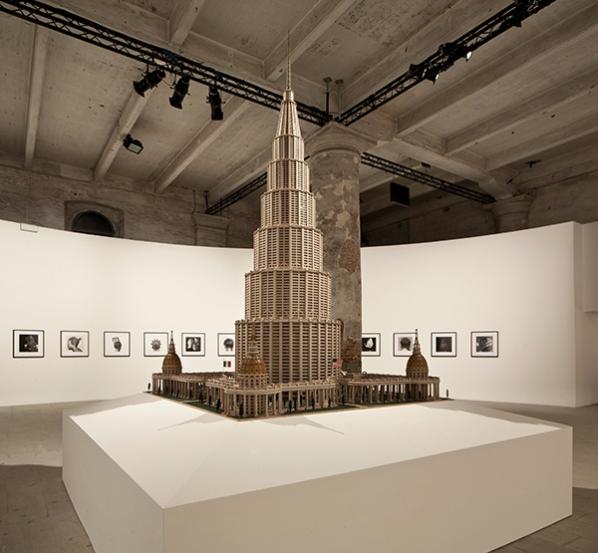
Just last week, the Hayward Gallery has been one of the first public-funded galleries in Europe to host a major event which focuses entirely on Outsider art: “An Alternative Guide to the Universe“. Unlike Gioni’s effort, the entire Hayward gallery is filled with self-taught, yet highly skilled obsession-led projects from the private wing of the aesthetic fringe: the intricate math puzzles of George Widener or the technical drawings of Karl Hans Janke, a schizophrenic inventor who envisioned rockets running on clean energy. There is, like most major art shows these days – lots of ‘stuff’ here – all of it inherently odd and some, self-knowingly disturbing – like the Bostonian bachelor Morton Bartlett, who created his own peculiar family of female dolls, or Eugene von Bruenchenhein’s awkward images of his wife acting in unsettling roles, like a non-deliberate Cindy Sherman series. Speaking of Sherman-seque photographs, Lee Godie’s 20’s style, self-portraits (also showing at the Hayward) are a firm favourite with private collections. Godie, who died penniless in 1994, and lived homeless on the streets of Chicago, sold her photographs on the streets for roughly $30, yet they can now expect to fetch $15,000.
Linking the two exhibitions is the remarkable charity The Museum of Everything, showing the work of Nek Chand at the Hayward and having their own pavilion at the Venice, of the back of previous shows in Moscow and Paris this year. Elsewhere in London, the Wellcome Collection showed off the successful show Souzou, exhibiting Outsider Art from Japan.
But over and above, these recent shows, why have the mainstream become so interested in Outsider Art? Or have they always been interested? Why are curators so fascinated with the darker side of the outsider, the other? Why are Bartlett’s unintentionally disturbing contemporary prints worthy of a 2007 solo show at the Julie Saul Gallery, in New York? The trend could be looked at as a self-realised view of the art world turning in on itself. It has finally realised how insular it has become, and needs to do something more cultural than a retrospective of a modern master here, or a lucrative solo show of some flavour of the month there. It has decided to become more ‘open’. The self-taught, yet sincere visions of mental patients, spiritual mediums, eccentric historians and utopian visionaries have once again reignited the art market’s purview. Certain works, never deliberately constructed for the whims of curators and spectators are now, insatiably lucrative.
The irony of this is… well, beyond irony. There is a deep sense of self-cannibalism at the heart of reclaiming the autobiographical eccentricities of others. As the lucrative self-direction of the art market now casts it’s eye over the purchase of collectable outsider art, and all its naive aesthetic principles, they cannot but be aware of the paradox within the trend itself. The recession-proof art market, self-knowingly creates inequality with one hand, whilst branching out of its self-constructed insular network with the other. Whilst it gobbles up, callow drawings from psychiatric patients and innocent pieces from batchelors for a tidy sum, the market simultaneously disgorges itself with folk, liberal, self-esteem. Clearly this is not an unprecedented trend, but the scale with which outsider art is being collected, exhibited and purchased in the last few months, as well as its public funded backing, certainly brings with it a large dose of incredulous cynicism.
The turn to Outsider Art is, unexpectedly not new and the mainstream art world has a habit of doing this every decade or so. Such aesthetic interest on the ‘darker’ element of outsider art, can be traced back to 1922, when psychiatrist Hans Prinzhorn published ‘Artistry of the Mentally Ill‘, a collection which included ten self taught artists battling with schizophrenia. In 1929, MoMA’s first director Alfred Barr, identified self-taught art as one of the three major movements in modern art, alongside Surrealism and Abstraction. MoMa even organised the show “American Folk Art: The Art of The Common Man in America 1750 – 1900” in 1932. Even the Hayward appears to be repeating itself, as it organised (with Roger Cardinal no less) the show “Outsiders: Artists without Precedent or Tradition” in 1979.
As Jane Kallir wrote 10 years ago, in the article “Outsider Art at a Crosswords” for Raw Vision magazine, the history of Outsider Art is draped in a dialectical contradiction that even Hegel couldn’t have made up. For our purposes, she sums it up perfectly.
“Outsider art is not a game that the artists themselves are allowed to play. An artist is anointed an “outsider” by members of the mainstream who have determined that he or she, for whatever reasons of mental incapacity or biographical circumstance, is incapable of fully comprehending or adhering to mainstream traditions.”
Outsider art suffers from a necessary, yet expected paradox. Once the mainstream embraces its status, it can only become suffocated, and, quoting Kallir again, “[o]nly when the mainstream’s attention is engaged elsewhere can any sort of truly isolate art flourish.” This is why, she argues, previous historical booms of Outsider art, between the two World Wars, eventually petered out. The “insiders” seek to hoover up the “outsiders”, negating the latter, and extending the former – making such dichotomies either useless or pointless. But it’s not as if the mainstream exists without distinctions, it’s just that these distinctions are inanely hypocritical. You know things are bad when even Will Gompertz notices.
Moreover, the historical return to Outsider art does little to characterise what it actually is, rather than characterise what the mainstream wants it to be: and this return is no different. In a hyper-connected epoch, it gets even worse. Who decides when an artist is an outsider? Legitmately, all artists may consider themselves to be outsiders (and especially the fringe of exceptional ‘media arts’ – although we’ve been here before).
As Rosie Jackson writes (no relation), outsider art becomes a ‘convenient cipher’ for everything the mainstream wishes it could ever be: “uncensored, meaningful, compulsive activities hammered out in blood, sweat and tears.” Every historical return to Outsider art retains a basic notion of ‘openness’ and ‘difference’ along some lines, yet such terms also fail to help understand the work ‘as’ work, and instead only understands it as ‘other’, through an insular structure that filters membership on its own terms. This recent interest the posthumous fringe, takes on the basis of carrying a cultural conscience in the art market.
In my eyes, the commercial art market seems to be integrating itself with the broad appeal of cultural capitalism (or capitalism with a conscience). The famous and sweaty pop stalinist, Slavoj Žižek, has previously articulated the logic of cultural capitalism quite well. Even the most unaware consumers in the Western world are acquainted with this modest shift in capitalist values. Corporations embrace the problems of poverty, and so market their products with ‘built in’ commitments for helping out the poorest in the world – the ones who fell over at the start of the ‘global-race’. One would call it capitalism with a human face, but we have gorged out on irony, for too long.
Žižek calls on two particular noteworthy examples; Starbucks Coffee and TOMS Shoes. Go round the corner to a local Starbucks and they will go to great lengths about how you, the consumer are not just ‘buying a coffee’ – instead they are buying coffee with a built-in disclaimer: that a portion of the customer’s money will help the workers who cultivate the coffee-beans and distribute that portion onwards. Similarly the incredibly successful TOMS Shoes, goes one step further with their ‘one for one‘ commitment: when you purchase a relatively cheap pair of TOMS Shoes, a portion of the profits accumulated, help manufacture another pair of shoes which are given to a child in poverty. We get the product, they get the profit, a child without shoes gets some shoes – what’s not to like?

Žižek tentatively retorts that charitable capitalism is, clearly better than the ‘business as usual’ practices of speculation and exploitation, in quasi-abstract way. But, he avers, one cannot fail to see the paradox of this gesture. The consumer is buying, not just the product, but the cultural impact of the company’s ethics. As a result, there is what Žižek calls, a ‘semantic overinvestment or burden‘ in being a consumer here. You don’t just simply buy a product and consume it, your consumerist ethical redemption is included in the price. In a typical Žižekian rejoinder, he borrows from Oscar Wilde’s lucid declaration in ‘The Soul of Man Under Socialism‘ that;
“Just as the worst slave-owners were those who were kind to their slaves, and so prevented the horror of the system being realised by those who suffered from it, and understood by those who contemplated it, so, in the present state of things in England, the people who do most harm are the people who try to do most good.”
Even though the slaves were momentarily protected from brutal oppression, the kind acts of conscience from their masters, masked the reasons behind their inequality, failing to change the inherent systems that determined their slavery in the first place. Rather uncompromisingly, Žižek argues that commodifiable charitable exchange that grounds cultural capitalism, degenerates the unequal situation even further. Capitalism partially modifies its operations to address inequality by marketing products that appeal to consumer conscience, whilst marginally improving the conditions for poor communities: communities which the market has indirectly caused, through profit accumulation in the first place. Instead the only proper ethical act, should be to modify state regulation to such an extent that inequality and descent into poverty become impossible: not a consumerist disclaimer designed to partially help the poorest through a system which self-inflicts the very reasons for poverty (i.e. if Starbucks really wanted to reconfigure its ethical marketing, it should start by paying its expected levels of corporate tax).
This recent focus on outsider art is largely (but not exactly) based on a similar turn of hypocrisy, but instead of appealing to consumerist cultural value, it appeals to the elite’s bloated levels of aesthetic cultural value, not the works or the artists themselves. Instead of modifying and reconstructing the market to regulate and protect the careers of living artists working today and help artists who are marginalised through no fault of their own, the art world twists itself into valuing outsider artworks which keep the attendee’s conscience happy, yet mask its inherently peculiar logic. ‘You are not just appreciating an artwork, you are appreciating a different, alternative way of life.’
If you think I’m joking about how literal this comparison is, you only have to look at the 2011 exhibition, Mindful: which brought together the choice cut of the YBA market, in order to raise funds and awareness about the stigma of mental health. Although the show was not ‘Outsider Art’ as such, it dipped its toe in from both angles; mainsteam artists grappling with issues on mental health and the pragmatic benefit of making art for those who suffer from it. Again, this is not to say that the results of the show, or the work of artists, (outsider or otherwise) are without merit – this is about the latent hypocrisy of providing audiences with cultural and ethical overinvestment, the terms upon which are already decided by mainstream principles. The fact that one of the sponsors was Starbucks, tells you everything you need know.
The conclusion to draw from this, is that the art market’s endorsement of Outsider Art contributes to it’s insularity rather than genuinely addressing the actual structure which contributes to the problems that outsider artists face. Outsider art only remains interesting, or opens up a productive discussion so long as the mainstream finds it lucrative enough to include such a discussion on its own terms. The mainstream artworld finds itself in a curious place then: for whilst it knocks down with its right hand, what it builds with the left, it curiously remains as it is, as it was, and ever present. To paraphrase Wilde, “It is much more easy to have sympathy with outsider artists than it is to have sympathy with thought.”
————————
If you would like to donate money directly to charities who specialise in the exhibition of marginalised artists, you can do so at the following links.
Outside In: an arts agency which provides a platform for artists who find it difficult to access the artworld.
And of course, Furtherfield.
Featured image: Thomson and Craighead, Here (2013)
Visiting Jon Thomson and Alison Craighead’s survey exhibition, Never Odd Or Even, currently on show at Carroll / Fletcher Gallery, I found myself confronted with an enigma. How to assemble a single vision of a body of work, impelled only by the dislocated narratives it offers me? ‘Archaeology’ is derived from the Greek word, arche, meaning ‘beginning’ or ‘origin’. The principle that makes a thing possible, but which in itself may remain elusive, unquantifiable, or utterly impervious to analysis. And so it is we search art for an origin, for an arising revelation, knowing full well that meaning is not something we can pin down. Believing, that the arche of a great work is always just about to take place.
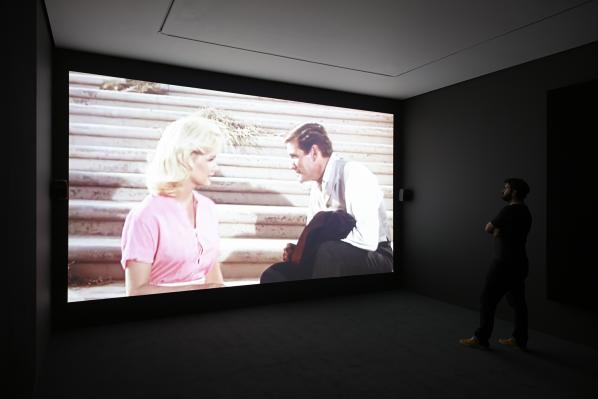
In an essay written especially for the exhibition, David Auerbach foregrounds Thomson and Craighead’s work in the overlap between “the quotidian and the global” characteristic of our hyperconnected contemporary culture. Hinged on “the tantalising impossibility of seeing the entire world at once clearly and distinctly” [1] Never Odd Or Even is an exhibition whose origins are explicitly here and everywhere, both now and anywhen. The Time Machine in Alphabetical Order (2010), a video work projected at the heart of the show, offers a compelling example of this. Transposing the 1960 film (directed by George Pal) into the alphabetical order of each word spoken, narrative time is circumvented, allowing the viewer to revel instead in the logic of the database. The dramatic arcs of individual scenes are replaced by alphabetic frames. Short staccato repetitions of the word ‘a’ or ‘you’ drive the film onwards, and with each new word comes a chance for the database to rewind. Words with greater significance such as ‘laws’, ‘life’, ‘man’ or ‘Morlocks’ cause new clusters of meaning to blossom. Scenes taut with tension and activity under a ‘normal’ viewing feel quiet, slow and tedious next to the repetitive progressions of single words propelled through alphabetic time. In the alphabetic version of the film it is scenes with a heavier focus on dialogue that stand out as pure activity, recurring again and again as the 96 minute 55 second long algorithm has its way with the audience. Regular sites of meaning become backdrop structures, thrusting forward a logic inherent in language which has no apparent bearing on narrative content. The work is reminiscent of Christian Marclay’s The Clock, also produced in 2010. A 24 hour long collage of scenes from cinema in which ‘real time’ is represented or alluded to simultaneously on screen. But whereas The Clock’s emphasis on cinema as a formal history grounds the work in narrative sequence, Thomson and Craighead’s work insists that the ground is infinitely malleable and should be called into question.
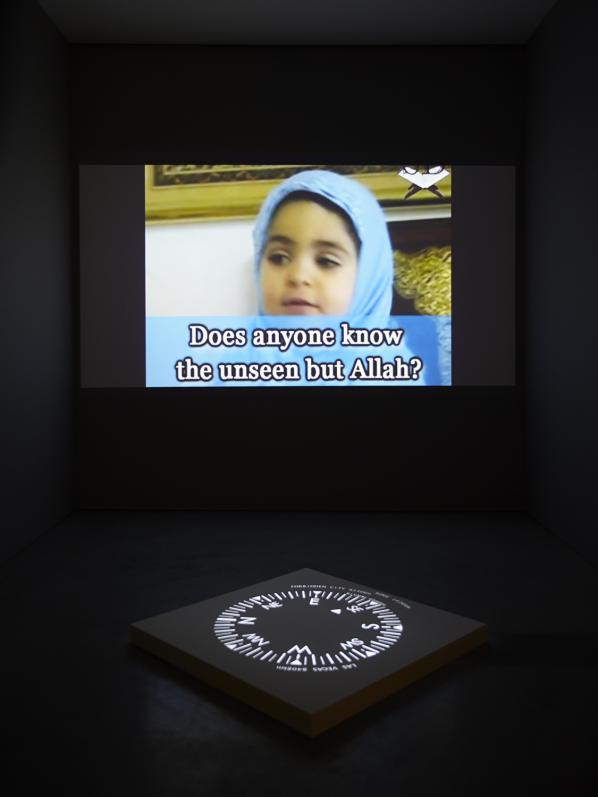
Another work, Belief (2012), depicts the human race as a vast interlinked, self-reflexive system. Its out-stretched nodes ending at webcams pointing to religious mediators, spiritual soliloquists and adamant materialists, all of them searching to define what it means to be in existence. Projected on the floor of the gallery alongside the video a compass points to the location each monologue and interview was filmed, spiralling wildly each time the footage dissolves. Each clip zooms out of a specific house, a town, a city and a continent to a blue Google Earth™ marble haloed by an opaque interface. Far from suggesting a utopian collectivity spawned by the Google machine, Belief once again highlights the mutable structures each of us formalise ourselves through. As David Auerbach suggests, the work intimates the possibility of seeing all human kind at once; a world where all beliefs are represented by the increasingly clever patterns wrought through information technology. Instead, culture, language and information technology are exposed as negligible variables in the human algorithm: the thing we share is that we all believe in something.

Never Odd Or Even features a series of works that play more explicitly with the internet, including London Wall W1W (2013), a regularly updated wall of tweets sent from within a mile of the gallery. This vision of the “quotidian” out of the “global” suffers once you realise that twitter monikers have been replaced with each tweeter’s real name. Far from rooting the ethereal tweets to ‘real’ people and their geographic vicinity the work paradoxically distances Thomson and Craighead from the very thing twitter already has in abundance: personality. In a most appropriate coincidence I found myself confronted with my own tweet, sent some weeks earlier from a nearby library. My moment of procrastination was now a heavily stylised, neutralised interjection into Carroll / Fletcher gallery. Set against a sea of thoughts about the death of Margaret Thatcher, how brilliant cannabis is, or what someone deserved for lunch I felt the opposite of integration in a work. In past instances of London Wall, including one at Furtherfield gallery, tweeters have been contacted directly, allowing them to visit their tweet in its new context. A gesture which as well as bringing to light the personal reality of twitter and tweeters no doubt created a further flux of geotagged internet traffic. Another work, shown in tandem with London Wall W1W, is More Songs of Innocence and of Experience (2012). Here the kitsch backdrop of karaoke is offered as a way to poetically engage with SPAM emails. But rather than invite me in the work felt sculptural, cold and imposing. Blowing carefully on the attached microphone evoked no response.
The perception and technical malleability of time is a central theme of the show. Both, Flipped Clock (2009), a digital wall clock reprogrammed to display alternate configurations of a liquid crystal display, and Trooper (1998), a single channel news report of a violent arrest, looped with increasing rapidity, uproot the viewer from a state of temporal nonchalance. A switch between time and synchronicity, between actual meaning and the human impetus for meaning, plays out in a multi-channel video work Several Interruptions (2009). A series of disparate videos, no doubt gleaned from YouTube, show people holding their breath underwater. Facial expressions blossom from calm to palpable terror as each series of underwater portraits are held in synchrony. As the divers all finally pull up for breath the sequence switches.
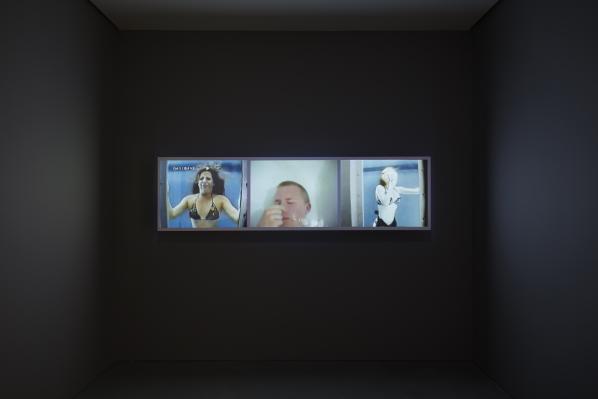
According to David Auerbach, and with echoes from Thomson and Craighead themselves, Never Odd Or Even offers a series of Oulipo inspired experiments, realised with constrained technical, rather than literary, techniques. For my own reading I was drawn to the figure of The Time Traveller, caused so splendidly to judder through time over and over again, whilst never having to repeat the self-same word twice. Mid-way through H.G.Wells’ original novel the protagonist stumbles into a crumbling museum. Sweeping the dust off abandoned relics he ponders his machine’s ability to hasten their decay. It is at this point that the Time Traveller has a revelation. The museum entombs the history of his own future: an ocean of artefacts whose potential to speak died with the civilisation that created them. [2] In Thomson and Craighead’s work the present moment we take for granted becomes malleable in the networks their artworks play with. That moment of arising, that archaeological instant is called into question, because like the Time Traveller, the narratives we tell ourselves are worth nothing if the past and the present arising from it are capable of swapping places. Thomson and Craighead’s work, like the digital present it converses with, begins now, and then again now, and then again now. The arche of our networked society erupting as the simulation of a present that has always already slipped into the past. Of course, as my meditation on The Time Traveller and archaeology suggests, this state of constant renewal is something that art as a form of communication has always been intimately intertwined with. What I was fascinated to read in the works of Never Odd Or Even was a suggestion that the kind of world we are invested in right now is one which, perhaps for the first time, begs us to simulate it anew.
On second day of summer, Maja Kalogera & Med-i-kids from AKC Medika in Zagreb, will gather in Finsbury Park in front of Furtherfiled Gallery. They will present Classical Sitting Squatters. They are quite a joyful bunch, they recite, chirp, sing, blink, sit still, just name it. You are invited to join them/us for a drink and meet them in ‘person’, on Saturday 22 June 2013, between 11am and 5pm.
Classical Sitting Squatters (CSS) is an installation made of a dozen full-sized figures or ‘sitting’ sculptures. They are reciting poetry of Gertrude Stein, Dylan Thomas and Emily Dickinson, on the input of the passers-by.

Med-i-kids is an open group of street artists which connected in Medika, Zagreb. Their mission is to make public artworks to raise awareness and question the many dogmas present in Croatian society, the very same society positoned in third place as one the most courrupted countries positioned.
Maja Kalogera is an artist, curator and catalyst who consistently places herself at the convergence of art and technology. Born in Zagreb, she holds B.F.A. from School of Applied and Visual arts, Zagreb and M.Arch. from Architecture University, Zagreb. From 1999 she is member of the online collective wowm.org. Her creative work over the past 15 years has included a wide range of mediums: digital and interactive media, photography, painting, video and film. In 2005, she founded Center for synergy of digital and visual arts, a Zagreb based NGO, that provides her unique approach focused on synergy between traditional art media with new, digital media. In her own artwork she is interested in ways how people participate in physical and virtual spaces. Lately she started to collaborate with med-i-kids on socially engaged projects.
Unmanned mobile devices, better known as drones, are one of the most significant ‘dark technologies’ of the 2010’s, and proceeds to reconfigure sociopolitical relations through the gesture of the remote gaze. Note that I say ‘mobile’, as opposed to ‘aerial’, as drones encompass unmanned land and water-based craft as well, but for our purposes, the flying eye has been the most visible technology in Baudrillard’s mediascape in terms of its use by the CIA in the Afghanistan/Pakistan and African theatres of operation.
To compound matters, the 2012 FAA Reauthorization Act has created a milieu in which estimates are that there could be 10,000 domestic drones in use by 2020 (Bennett & Rubin). Drones are going to be one of the US’s major technology growth markets, with the devices being used in geographic, aerospace, and environmental research as well as military and law enforcement uses.
From this, a strange series of cultural disconnects are emerging as drone images become Tumblr fodder as part of the ‘New Aesthetic’ art movement via James Bridle’s Dronestagram site (Bridle), and drones proliferate through sites like DIYDrones.com and even retailer Costco. What emerges is a complex cultural landscape where a burgeoning remote air force polices the globe in the name of American power, while the images generated by them elicit a perverse visual fascination amongst certain subcultures. Furthermore, only slightly domesticated versions of these technologies are now being flown by techno-enthusiasts and children. What is developing is a complex set of relations that is abstracting power, interaction, and representation.

In March of 2012, a panel of five artists, writers, and designers presented a panel at the media festival South by Southwest entitled, “The New Aesthetic: Seeing Like Digital Devices” (Bridle, et al). In this panel, they stated that the aesthetics of digital vision and representation, created through algorithmically-driven imaging and devices, including generative art, Kinects, and drones, are creating a machine aesthetic signaling a distinct step in the creation of the digital image since its emergence in the 1960’s. The panel expounded upon the aesthetics of new re-presentation technologies like 3D printing as well. Keep in mind that this panel drew with a very broad brush, including everything from algorism to computer glitch media, but what has intersected with current events are robot eyes like those of drones and their cyborg sighting mechanisms that team pattern recognition with human remote operators. This panel may have faded into obscurity if it were not for Bruce Sterling’s endnote talk foregrounding the concept (Sterling).
Bridle’s creation of the Dronestagram Tumblr foregrounds the drone’s eye view or the ‘shadow’ of the drone on the landscape, as depicted by Bridle’s Drone Shadow 002 (Bridle), which was a 1:1 scale outline of a drone’s shadow in Istanbul for the 1st Istanbul Design Biennial. Other projects that highlight the gaze from and the gazing of military drones are Trevor Paglen’s Drone Vision and Omar Fast’s film, Five Thousand Feet is the Best, which tells a fictionalized encounter of a Nevada-based drone operator with an interaction between a Middle Eastern family and a group of men planting an IED. Fast makes an interesting observation in the narrative, “Seeing the world from above doesn’t just flatten things, it sharpens them. It makes relationships clearer.” (Fast) Conversely, Trevor Paglen remarks on the nature of drone vision:
“What is particularly interesting to me are the ways in which ‘seeing like a drone’ is and is not like seeing through a standard bombsight: the techno-optical regime through which conventional bombing has been conducted differs from the high-resolution full-motion video feeds that inform (and misinform) the networked bombing of late modern war. Those feeds significantly compress the imaginative distance between the air and the ground, but they do so in a highly selective fashion.” (Paglen, from Gregory)
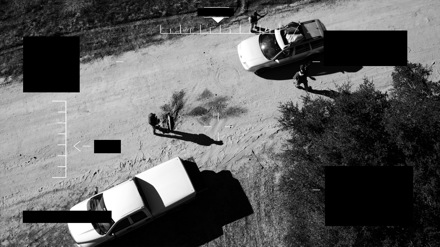
How I see the gaze of the drone is not through relief, technological regimes, or even traditional paradigms of Mulvey’s acquisitiveness of the male gaze (Mulvey), but of a Latourian network of objects (actors) in a network (Latour) that reconfigures the definition of the viewed object that the line of flight that the drone-gaze confers. In my model, the operator-node views the ‘sighted’ object through a framing of the drone camera, part of which is controlled by pattern-acquisition algorithms. What results is an augmented ‘cyborg’ sight in which the mise en scene is given the illusion of being sharpened by the technological regime of the drone’s technological systems. It is a line of flight that travels along of three nodes in a network of gaze; the operations site, the programmatic framing node of the drone-object which then redirects the gaze to the objective, transforming it from a house, person, or loved one to a target or objective. This is the problem of the cyborg gaze of the drone.
Another read of the drone gaze can be found in James Cameron’s movie, Avatar(ibid.) In it, disabled soldier Jake Sully operates a bioengineered clone of one of the native species, the Na’vi, to infiltrate their culture. While many have likened Avatar to a criticism of the Iraq and Afghanistan engagements, I posit that Jake’s avatar, is in fact a drone in biomorphic form. The difference here is not merely the optic (and haptic) immediacy of the avatar and its less destructive mission, but the avatar’s mission to win the “hearts and minds” of the native population, similar to that of the Afghanistan conflict. The drone-dream of Avatar is experience and agency without presence, although Jake does end up ‘going native’ when his human body is killed and his soul transfers into his Na’vi body. This echoes many films in which the colonizing body becomes part of the colonized demographic after spending time with them, like Dances with Wolves. It’s safe to say that a drone pilot might not want to ‘go native’ until such a biomorphic agent is invented, but Avatar problematizes the notion of remote engagement in terms of Fast’s affective gaze of the drone and its context to human relationships in addition to Cameron’s romanticization of the avatar-drone.

The second aspect of remote engagement that Avatar brings into focus is the lack of distinction between the technologically enabled person of disability versus the able-bodied person placed into a state of paralysis by being tied to the workstation or network-connected device. In The Third Interval, (Virilio) Paul Virilio posits this liminal (dis)abled state as an effect of the technological collapse of space through networked technology, but as Raunig states, a Deleuzian line of flight and invention appropriated by the state apparatus as a tool for the institution of war. Jake becomes freed by his cyborg existence, only to be trapped by the war machine of the corporate state until he is freed by the elimination of his techno-duality. It appears that true freedom can only come from the severance from remote control and cognitive integration with the drone itself. To experience the ontology of a drone, you must become one, not merely control it. (Bogost)
“There are eyes everywhere. No blind spot left. What shall we dream of when everything becomes visible? We’ll dream of being blind.” – Paul Virilio
Setting aside the idea of becoming drones, I want to share a cognitive dissonance that I experienced at the end of 2012. While reading descriptions of the dark spectacle of “The Light of God” (what the laser homing beam used for the Hellfire missile has been called) in the Middle East, over Christmas 2013 I was horrified to see stacks of drones for sale at the local Costco (a regional US wholesale big-box chain) in a picture posted on Facebook by scholar Richard Grusin. I had been working with devices like the ARDrone for a couple years, but to see stacks of them for holiday sale was a grim fantasy made real. It is not that, as Paul Virilio said, there are just more eyes in the panoptic First World (in addition to police cameras, phones, ATM machines and the like), but these particular eyes that are being used as extensions of state power are being sold as infantilized versions at holiday retailers. The ARDrone was the early techno-adopter’s fetish of the 2012 shopping season, military technology commodified as completely as any iPad (which it uses as a controller, by the way). As Laurie Anderson said in the film, McLuhan’s Wake, “if you want to get the job done, you‘re gonna want the latest thing…”(McLaughlin, et al), and in this case, the thing is the ARDrone. Or it could be any of the products promoted by Chris Anderson’s new project, DIYDrones.com, a start-up he left WIRED Magazine in part to create.
The connecting conversation between the military Predator and our “pet” predator (i.e. the videodrone; and there is an irony that many of our pets are predators, such as dogs, cats, and ferrets) is that I was communicating with artist Art Jones in Karachi, Pakistan who was doing an art project with the US State Department. He called it The Pakistani Playlist(), where US artists would send media and links to him in Karachi as a form of intercultural dialogue. I sent links to devices like the ARDrone and videos of children playing with these infantilized versions of military technologies that were zipping around the outer tribal lands. My aim, and Jones understood this, was that technoculture and the military-industrial complex sells a dark dichotomy between remote hunter-killers abroad and sexy flying eyes at home that one woman even asked me to use to see if her landlord had successfully removed the bird nest from her rafters. How can something so fun and useful, because it’s little more than a radio-controlled plane with a camera, be that dangerous? What’s the worst that could happen, except for perhaps having your teenage son spying on the sunbathing girl next door? As a point of note, that scenario was one illustrated briefly in a PBS documentary called The Rise of the Drones.
The cultural effect of the domesticated drone is that of banalization and aestheticization of military technology and its products that elide the stark reality that the ARDrone at the Costco is not a General Atomics Predator. The swarms of synchronized quadricopters being developed at Penn State in videos on YouTube are not seen in the context of their potential applications for the violation of personal privacy. In addition, Parrot (the maker of the ARDrone) offers tools to dynamically upload your flight videos to YouTube without vetting, and another app allows you to create snazzy dance numbers by creating aerial ballets for your drone on your iPad. Those who have always dreamt of flight, like me, can now share our dreams of flight through the social nets. Given this, drone flight logs have the potential of having the banality of funny cat videos and hipster Tumblr sites, while eliding the social issues these devices raise. What is the meaning of a domestic commons when Foucault’s panoptic vision is merely intensified by the number of Virilio’s public eyes? Is the fact that public eyes are now nearly universal, justifying the installation of more of them? And who are the operators, and what is the intent of the gaze of the domestic drone? And what of the configuration of the drone as fetishized object itself, such as Antoine Catala’s objectified drone exhibition (Kirsch) or Burt Jensen’s Orvillecopter(Netburn), the merger of taxidermied cat and quadridrone?
The emergence of the drone in all its configurations, fixed-wing, quadricopter, or rover, how they represent the detached gaze and how they are depicted in the media, call into the question the ethics of remote warfare, new forms of objectification, commodification, and aestheticization of intrusive technologies and their mediated production. The use of drone strikes by the CIA around the world, the intersection of these practices through critical artmaking sectors of The New Aesthetic and its obsession with the machine eye, as well as the proliferation of domestic drones (at least in North America) show the complexities of the cultural impact of this ‘dark’ technology. Furthermore, where technology is in one place a weapon, in another a toy, and yet in another a fetishized object brings us to a complex discursive locus where the extension of military power, McLuhanist body augmentation, and cultural production are all brought into question. Where the military-industrial complex has given technological apparatuses with multivalent uses such as the Internet, drones complicate the concept of the remote eye in ways that are in no way even close to resolution.
Since the Nineties (at least), Mckenzie Wark has been writing colorful and critical texts that have raised the bar in countless conversations regarding networked culture, “weird global media events,” the philosophy of open source, game theory, and so on. He’s also been known for his active and ongoing engagement with a certain body of ideas associated with the Situationist International (S.I.)–a coalition of subversive thinkers and doers who coalesced in Europe around 1957 (to drift, drink, and détourn). Wark himself came of age in the (post-situationist) 1970s: a decade where, as he says, “everything turned to shit.”
…In spite of everything having already turned to shit, Wark kindly met with Brooklyn’s Montgomery Cantsin on the 16th of May, 2013, in Manhattan. Prior to a show and tell–of Wark’s 3D-printed Guy Debord Action Figures (“His action is smoking,” says Wark) and Cantsin’s metagraphic tattoo (from a design by Isidore Isou)–the two spoke briefly about philosophy, history, science, and technology. Wark was on his way to the U.K. where in addition to having an event at Furtherfield he’d also been booked for a speaking engagement for his new book (Spectacle of Disintegration–just published by Verso), where he’d be right alongside the Situationists Alice Becker-Ho and Jacqueline de Jong.
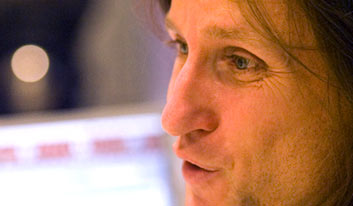
MONTGOMERY CANTSIN: According to Anselm Jappe, “technology levels a more telling critique of everyday life than does poetry, for it is able to challenge current everyday experience w/ realizable possibilities, not with mere reveries.” He also notes, though, that under existing conditions (of uneven development, etc.), technology “constitutes a new kind of alienation.” Your thoughts?
MCKENZIE WARK: First, we ought not necessarily think of the poetic and the technological as separate categories. They are always entangled with each other. The interesting moments in poetry–not always, but often–coincide with new technological affordances, new ways of communicating. I wouldn’t want to see those as either/or categories. (Poetry is a technology; technology is poetic.) It’s always worth looking for the breaks. When a technology is relatively new, no one usually knows what the fuck it’s for or what to do with it, and that’s kind of a moment to try to play with it and sort of elastically stretch out the boundaries of it and establish a beachhead for struggling around what it can be like and what you can do with it. At present though, we are entering more of a moment of consolidation with how technologies work. In the Eighties and Nineties there was this huge opening of spaces and possibility, and now an enclosure is returning.
MC: Facebook comes to mind here. Can a situationist perspective show us how to disentangle ourselves from that whole mess? Should we hope that there can be “situationist uses” of social media?
MW: Yeah Facebook wants to, in a sense, control historical time as people experience it. That’s what ‘timeline’ is. But there are always little affordances. Part of the legacy of thinking in the wake of the Situationists is that you have to understand what the tactical openings and gaps and spaces are that are available to you, and to in fact not see it as a sort of ‘expressive totality’ where everything is always and already saturated in advance with the totality of capital or spectacle. To some extent that is a correct diagnosis. But it’s also not the whole story. And that’s why, when one reads the Society of the Spectacle,[1] it is the second-to-last chapter that is the one that counts. The second-to-last chapter is about détournement, it’s about the way that you appropriate and use the whole of poetry and technology as always and already belonging to all of us. You act on that basis, self-consciously. That’s the struggle, that’s the strategy. And, to the extent that there’s a learned capacity to to struggle in and against things like Facebook, I say let’s credit the struggles of the Eighties and Nineties around free networked communicative cultures and practices. Those in fact originally started as an avant-garde (of thirty or so people); [such movements] seeded certain tendencies into the mainstream.
MC: If blanket surveillance of telecommunications is a given, if all our emails and texts are being monitored, I suppose one is forced to wonder, is there is any point in staying away from Facebook?
MW: As I’ve said elsewhere, it is the height of vanity to think that you are under surveillance. No one gives a rat’s ass about most of us. But yeah, we ought to just assume that data is being collected about all of our lives for possible future use. You can just kind of assume that. And so then [what’s called for] is a counter-tactic of a certain nuance and unreadability and opacity about everyday life–to not announce everything in advance, and to not be careless with language. To try pass silently in some things. You know, before the Situationist International was even constituted, the police arrived. And Guy Debord writes about this in a letter, I think to Gallizio. Reading his version of it, it looks like the way he avoided the police trying to proscribe them is, he pointed out “We haven’t even been constituted yet!.” So the S.I. as an organization was under surveillance before it even started! Even though the S.I. was a minor insignificant organization in its time–in the moment of its founding, it’s like half a dozen people–there was always a certain carefulness, an opaque quality. Not everything has to be said to just everyone. So, act on that basis.
MC: Can you say more about secrecy, or opacity? I wonder, what does Stewart Home (or Len Bracken) achieve by bringing up secret societies in the context of discussing the S.I.?
MW: Stewart Home is actually one of my favorite contemporary writers and his interest in the S.I. is in the context of an astonishingly broad knowledge of avant-garde art and literature, and the culture of his own city (London). As for the occult, I personally have no interest in the occult, but the idea of opaque social realms is something that Stewart has an interest in (and I do too). There’s a sense in which the S.I. at various stages is doing that. There’s a difference between the internal communication and the external one. And it’s useful to look at because it is so different from the spirit of our times where everybody is just tweeting to everybody every fuckin’ last thing they did. The idea that you can create this little circuit-breaker, this internal conversation that’s separate from the external one: it’s a kind of a useful valid space in which to operate. […] Not a secret society, but a discreet group. […] Interestingly, Stewart is extremely uninterested in the Debordian strands in the S.I., and to me he was a really important voice in moving away from seeing it as centered on Debord. And when I wrote Beach Beneath the Street,[2] his was one of the voices I was responding to. There I wanted to sort of synthesize the stuff about Debord with this anti-Debord strand of which Stewart’s a key representative–to put these two back together again. The second book, Spectacle of Disintegration, sort of does that as well. There’s like whole chapters on Sanguinetti and Vienet, and Vaneigem. And a lot of material on Debord’s films–with that I tried a lot more than I think Stewart ever would.
MC: Home claims that Debord’s films are sort of stuck in the avant-garde gesture–the whole “end of cinema” thing. But you show that Debord’s later work is actually not like that. It’s richer than that.
MW: It’s a valid point about his early films, though I think that they are defensible in other ways and there are resources you can get from looking at that stuff. I think it was really important for Stewart to say “No” though, because there was just so much repetition of this Debordian “specto-Situationist” stuff (as he calls it). He was right, it was boring. If you look at the people who were just imitating that: it was boring as all hell. (All they have to say to you, or to each other, is: “spectacle!” and “recuperator!” Its boring.) So, Stewart shuts that door and opens these other ones. And he’s doing a sort of détournement of that, into another space that’s much more Anglophone. Stewart draws this into a whole series of British and Anglophone traditions successfully.
MC: You note that that Simon Critchley views the Situationists through a sort of religious lens? To which of Critchley’s books are you referring here?
MW: Yes it’s in Infinitely Demanding.[3] One of Simon’s core propositions, and it’s an interesting one, is that “philosophy begins in disappointment.” There are two kinds: religious disappointment and political disappointment. He actually classifies Debord as almost a theologian of disappointment. (That’s my phrase, not his. But that’s how I’m reading what he does there.) So once you have a disappointment, then your consolation is philosophy as a high theory tradition. There’s also a low theory tradition though, and it begins in boredom with these discourses of disappointment. So, how does one–in an interstitial space outside of cultural and academic institutions–produce a critical language of the everyday itself, where what it’s going to do is write and think with extremely broad horizons? Well, the practice of the everyday will always fall short of that horizon. One is only disappointed though if one has a naive idea about thought’s ability to dominate life in the first place. The fact that you cannot practice what you can theorize: that is the very thing that makes both possible. So, it’s not a failure of praxis when your ideas and action don’t align. That is the praxis. The gap is the thing. You think that relation in its irreconcilability. Disappointment is just a moment in thought. And then one’s bored with that. You try it again, and in a sense you do not give up. As Asger Jorn says: “The avant garde never gives up!” That struggle of thought opens horizons which get foreclosed and then you open another one, so it’s kind of a tactic of reinvention.
MC: How can the S.I. assist us in addressing questions that are outside the realm of science, or maybe outside of the knowable?
MW: I think it was Andre Breton who said “Science is useful for the solution of many problems, all of them unfortunately of secondary interest.” (There’s a certain poetic hubris about that, perhaps even more evident in our time.) A scientific method isn’t going to deal with unclassifiable, undefinable problems–those are really more in the domain of a tactics. Where Debord is useful for that is in the way he thinks through Clausewitz. Clausewitz is one of his key figures. In Clausewitz there is a kind of continuum from pure unreflective action to rational strategic thought. And for him it’s kind of a hierarchical relationship where the state has a rational motive but the field commander is kind of responding in this kind of affective way, and troops are pure action. Strategy is in between, in a sense, mediating between reason and action. It also just happens to be fairly close to how Sartre thinks the situation as the space where consciousness and its other confront each other in a domain that’s not knowable in advance and that’s only discovered in the act. That’s why it was called the Situationist International, after Sartre. Debord borrows the word “situation” from Sartre, but more about the actual practice from Clausewitz. Clausewtiz doesn’t call it a situation, to him it is the friction and fog of war. I think Clausewitz is Debord’s main guy though. And I mean more Clausewitz’s descriptions of campaigns rather than On War. On War has this kind of pseudo-systematic quality, whereas when Clausewitz writes about Napoleon’s defeat at Waterloo or Napoleon’s Russian campaign you really get this sense of struggling with the parameters of the unknown. And there you need this other knowledge, this other practice. Debord thought the art of war was a good place to look for a ‘sober’ assessment of situatons, without the silly chatter of optimism associated with ‘politics’. Maybe in our time we could pay close attention to the applied sciences as well. In some ways the limit to the later, so-called ‘political’ phase of the S.I. is that it shut down dialog with different ways of knowing and acting–from architecture, urban planning, and so forth. It bought a certain theoretical rigor at the price of shutting down certain tactical elbow room.
MC: I’m waiting for someone to put Debord into conversation with Paul Feyerabend, given the latter’s discussion of an epistemological anarchism…
MW: Well, I don’t know what to say about Feyerabend, I haven’t read him in twenty-five years. But he is in fact back on my shelf here on the reading list as part of this opening back up to the sciences. I know he’s an important moment in getting us out of a sort of narrow idea that there is a (single) scientific method […] to pluralizing that and showing how it’s a class of experiment. Even dada is a metaphor we could use for it. A science is not like poetic dada. A science is bounded as a set of practices in a way that art isn’t. But yes he’s one of those really key voices in a kind of plural epistemology, that there are different kinds of knowledge. A problem of our time is knowledges don’t have hierarchies, they have relations. So, what’s the non-hierarchical relation between different knowledges that do different things? That seems to me to be a very contemporary kind of issue. The S.I. kind of fails at that and it’s kind of interesting to the extent that they do. (Some of the Clausewitzian hierarchy lingering, perhaps.) They’re sort of not able to weave together even art and writing–to transcend, to get out of them. It’s notable that Constant’s interest in a kind of speculative engineering approach to the world doesn’t fit with what would be Vanegeim’s more writerly version of unitary urbanism. In a way, they’re still stuck in this command discourse and it’s a certain theoretical one that I think’s not helpful, as if theory was in command. One needs to be able to put these things alongside each other and not try to reconcile them. Irreconcilable qualitatively distinct kinds of discourse can remain separate–they don’t have to be synthesized. They can have linkages and border conditions and things like that.
MC: It seems that the S.I. found itself incompatible with the early ‘cybernetic’ thinkers. Your whole body of work seems to suggest a certain potential for linkages.
MW: The situationist who got it first as far as what cybernetics implied was Constant. He was reading Norbert Wiener on the ‘Second Industrial Revolution.’ He pretty much “gets it” that something like the internet is going to happen and that it will totally spatially reorganize the planet. Constant arrives at that realization right in the early sixties, it’s astonishing. And look, every single great utopia or avant-garde always comes true. All of them are realized, but one element is always reversed. There’s always like the key that element doesn’t happen. With Constant, its a big one: it’s that we didn’t abolish private property. Communication spatially re-organizing the planet–that’s exactly what happened. But, it’s not re-organized in the way that he imagines. He was right about that–that the spatial reorganization would happen–but not which one. He was still thinking that we could abolish work, whereas what we did was find new pools of cheap labor. […] That’s gonna rattle on for another century, the exploiting of the last pools of cheap labor. Though it seems like Chinese workers are already bored with this whole thing, so capital (or whatever this is now) is trying to move to Indonesia and Vietnam and so forth.
MC: DARPA’s creating machines that mimic the most subtle movements of the human hand, but–
MW: –Right, but we’re not abolishing labor. It really is the case that these relations of production are a fetter on the achievement of another life. We have not made the qualitative break. But, the tools are there. There’s a strand in the S.I. that’s very interested in this: The fact that the means are there. It’s in early Debord, it’s in Constant. Jorn and the later Debord have a more anti-technological feel to the way they are writing. But still though: Debord’s using cinema–experimenting with that. Vaneigem does occasionally hint that cybernetics has the tools there to create the good life but it’s being used for the opposite purpose–being used for control. He doesn’t have a whole lot to say about it, but there’s this kind of intimation in Revolution of Everyday Life, there’s something there, which is kind of prescient. Its not quite as brilliant as Constant’s conceptual architecture though. Constant imagines a world of the control of things as the infrastructure for another cybernetics, the free play of the human.
MC: Anselm Jappe talks about two different strains in Marx: 1) Liberation from the economy and 2) Liberation by means of the economy. Can you talk about this, maybe in the context of your reply to Nick Land’s “Accelerationist Manifesto?”
MW: Well, you have to go through one to get to the other. It’s Marx’s version of Nietzsche’s “God is dead.” There’s no going back. What we take to be the sort of romantic pre-capitalist worlds that we would want to return to (and in the name of which we might resist) are illusions produced by capitalism itself. In a sense, the machine has to go to its end and break down in order to then use its resources to build something else. So if we restrict the meaning of Accelerationism to that, Marx is one of them. There isn’t a going back. There’s only going forward. There is no resisting, there’s only trying to push things in a certain direction as they sort of rocket towards the end. The thing I like about the Accelerationists, well the first thing, is Nick Land is just a joy to read. I read it as sort of a “fatal strategy.” Some people reacted badly to it, like “OMG he says that the machines have gone cellular and are evolving without us and we’ll just be redundant!” Well, it’s like pushing a certain rhetorical logic as far as it will go; it’s Baudrillardian. It’s really quite beautiful, and a delight. People have pushed back against that and tried to extract elements from it. And to re-animate the futurist element of the avant-garde strikes me as a really contemporary thing to do. The one thing that’s probably unassimilable to “contemporary art” is the futurists. (By definition–it’s outside the frame of there being a contemporary.) Is there a way to revive the futurist bit of the avant-garde legacy or to détourn it in a way that cracks open this now all-encompassing space of so-called “contemporary art?” That would be kind of promising and it looks like the Accelerationists have made gestures in that direction. So, it’s like, more power to ’em. Great.
MC: How are we to make sense of things like the recent London riots (or the Stockholm riots) maybe as compared to the Thailand revolts you bring up in Spectacle of Disintegration? You’ve characterized certain happenings (Tiananmen Square, OWS, the 1987 Stock Market crash) as “weird global media events”–
MW: –Yes, and each of those four terms is kind of key. Weird in the sense that these events are singular and there’s a strange space-time that’s specific to them. It exceeds the space of the city. There’s a global communicative space to which it’s connected. International relations, flows of money, flows of military force, and flows of information get drawn into the event. There are particular affordances of the media that are embedded in a particular space. You have to see media and the architecture as a continuum. Media’s not a separate element. Communication and architecture are the same thing, they’re cognate–just different dimensions–and you have to understand the particular arrangement of that. In the case of Tiananmen Square, we have to ask: How was the government able to insinuate troops into the city, and in which particular directions? What were people’s particular lines of retreat? How did the global feedback loop of international news media work? (People locally were relying on international circuits of news to figure out what was going on mere blocks away from them.) That sort of stuff. Then, as far as the last term in that phrase, it’s an event. (But not in Badiou’s sense, mind you.) Really what I think would be a better word would be situation–where some variables are known, some are not, and one has to act strategically and try to understand lines of force. “Weird global media events” are not a constant in the way that a riot is (there’s always a riot going on somewhere); these events break out of routine spectacular space and time. Debord is all about how the spectacle erases historical time. And yet I think he’s still holding on to the possibility that historical time erupts. We’ve seen that it does.
MC: So, not all events are necessarily immediately recuperated into the spectacle…
MW: One definition of ideology is: the story precedes the facts, and you fit facts into an accepted story. When you have apparent facts that fit no story, then all hell breaks loose! And you get these really interesting moments that are like breaks in transmission, wherein the spectacle has no idea what it is supposed to be narrating! And Tiananmen Square was one of them. It’s not that ‘the truth’ is there, it’s more like ideological confusion is there, where occasionally fragments of the actual event can be deciphered. Next time it happens, hit the RECORD button on everything and gather all that stuff! A classic example is 9/11. We’re now down to like three images of that event. If you watched it live on television you saw people jump out of fucking buildings. That image is completely censored now! It’s never to be experienced. But you saw it happen live on television. Astonishing stuff. There were people saying extraordinary things about what was going on around them but it’s all been sort of fitted back into this neat narrative about, you know, we have to keep insisting on the heroism of the first responders. The thing that can’t be uttered is the absolute confusion of the first responders! That the police and the fire brigade had no fucking idea what to do is part of the real story, but that is unutterable. So yeah, when the weird global media event happens, pay attention.
MC: Your new book looks at current terrorism as well as that of Italy in the 70s. The young Italian Situationist, Sanguinettii, was writing of ‘false flags’ some 25 years ago. That term ‘false flag’ is perhaps drained of its meaning at this point, largely associated with the loudmouthed paleoconservative buffoonery of Alex Jones (who you also mention briefly in the book). Do you think there are contemporary conspiracy researchers though who are worth reading? (Len Bracken’s book Shadow Government comes to mind as something that also considers 9/11 in relation to Italy and the “Strategy of Tension.”)
MW: It’s not something I pay attention to, and that stuff tends to be based on an image of states being able to create events rather than just react to them. I think the other line of thought is more interesting. It’s not that states have this omnipotent, omniscient ability. The opposite case (that states have this enormous power but have no idea what they’re doing anymore) is kind of a more interesting line of thought. The problem with Sanguinetti is that it does depend on there having been a conspiracy in a sense, that the Italian state directly produces the Red Brigades through manipulation of these activist cells, through agents provocateurs and so forth. There’s evidence that that might have been the case; Italy in the seventies is crazy. But what I think is a more useful line of thought is: it doesn’t matter if people are secret agents of the state. If they create terrorist cells, they’re acting as the state even if they don’t know that they are! They’re the dupe of the state. And not even of the state, but a ‘secret’ state. That strikes me as a more interesting way of processing that kind of Italian moment. Tracing down the actual who-planted-who-where part is much less interesting than the actual fact of these armed cells kidnapping people and murdering them. It’s a part of the state itself even if it is unintentionally so. It’s like a rogue cancer cell of statism being produced somewhere. That strikes me as having more purchase on the quality of those kinds of events.
MC: In Spectacle of Disintegration you make a distinction between Hegelian and non-Hegelian Marxism. What thinkers exemplify the latter category, Althusser…?
MW: Althusser would be one example. I think Asger Jorn would be another, because he gets his Marx mostly actually from Engels. Asger Jorn is underestimated as a theorist, he’s actually really interesting. There are other non-Hegelian schools. There were the Italians, like Della Volpa. There’s actually kind of several. And in English there’s a neglected Anglophone (mostly British) reading of Marx that goes through Ricardo and is much more attuned to the political-economic background and less interested in the philosophy. I’d also say that Marx himself is a master of détournement. I’d make the claim that that’s what he does with Hegel! It”s not that Marx is a “Hegelian.” It’s that Hegel is a useful thing to steal in order to describe the logic of the commodity. Literally Hegel’s Logic becomes the tool that is détourned to explain the commodity. But there are other parts of Das Kapital that aren’t Hegelian–that draw on other sources. Marx is oriented around a task–so he borrows heterogeneously from different sources and uses them. This is as opposed to being a philosopher who continues a tradition. So, of course all these different schools read different bits of Marx and re-assimilate him to the academic method. But that’s not what Marx himself is about. He’s not a philosopher; he’s not an academic. As Althusser says: Marx did not read ‘library Hegel’–he read the Hegel of the young Hegelian movement.
MC: Is Debord being a romantic when he makes reference to a “life lived directly?”
MW: Elements of the young Marx show up all over Debord, and that’s what Simon Critchley is drawing attention to also: this version of the young Marx that reads alienation as alienation from a species-being that pre-exists capital. I think later Marx lets go of this sort of skyhook idea of our species-being as an essence. He’s much more interested in our collective self-production of ourselves as a species. More in a Darwinian sense, as a population–where it is by and through capitalism that we are producing ourselves, and there is no pre-existing ideal form of the species-being that could act as a reference. Debord I think mobilizes the young Marx tactically. I don’t think those gestures in Society of the Spectacle are the essence to which I’d wanna reduce Debord. I don’t want to assimilate him to the Hegelian Marxist reading. I think he détourns the young Marx, where it seems useful to do so, and when it isn’t–someone else. The key to Debord’s texts and films is détournement as the method of composition, not picking particular fragments out of the construction.
MC: Anselm Jappe takes Lukacs to be a key influence on the Situs; Jappe’s book on Debord makes reference to this “minority tendency within Marxism that assigns crucial importance to the problem of alienation, considered not as epiphenomenal but as crucial to capitalist development.” You say however that Lukacs is in fact repurposed by Debord (rather than being cited in a traditional sense). Does Jappe miss this?
MW: First, it’s gotta be said that a lot of the secondary literature on the Situationists is actually really good. I think there’s enormous merit in all the stuff Ken Knabb did, and in Stewart’s provocation The Assault on Culture.[4] Sadie Plant’s book.[5] And Greil Marcus’s book, which of course really put this stuff back on the map. Despite what everybody says, this stuff is all great. And the Anselm Jappe book, well, he knows the Lukacs dimensions of this much better than anyone else does. It’s just that for me there’s a crucial difference between a citing of Lukacs and a détournement of Lukacs. To me, the key to Debord is détournement. It’s all about Lautreamont, not Marx. Debord absorbs all these Marxist elements into this avant-garde practice of détournement. And in fact Jappe is one of the great places to find out exactly what bits of Society of the Spectacle are détournements of what! He even has a little list: “Well, that chunk is straight out of Hegel, and there’s a bit of Marx, here’s a bit of Freud, right there.” He doesn’t make enough of that. To me it’s like “Oh, so what you’re reading is a kind of patchwork of chunks?” I think it’s that performative dimension of the book that is what really makes it. I give Society of the Spectacle it to students sometimes and they say “well it’s not really coherent.” Well, it’s method is absolutely rigorously coherent! You’re looking at the wrong level [if] you’re looking at the product and not the process. So, you have to look at the constant use of détournement as process. It’s the one thing Jappe is not quite attuned to in what I otherwise gotta say a really excellent book (from which I learned a lot). […] I think, even though there’s all this great stuff on the S.I. already out, the job’s barely begun of making sense of it in a way that can be used by people to produce new work. As far as the literature that’s there: there’s not enough keys to how to détourn the S.I. and produce something different in a qualitatively different environment.
MC: Is it possible that Debord’s melancholy and/or paranoia sometimes got the best of him, I wonder? Today he’d be called depressed. What would a therapist today even do with Debord?!
MW: Well a therapist would just say he’s a hard case, he’s a career alcoholic, you know. And it’s not to be gainsaid, one of his most beautiful pieces of writing is about drinking. “I’ve written much less than most people who write but I have drunk more than most people drink.” He writes so beautifully about it (although that’s probably détourned from somebody). Elsewhere he writes “There are those who got drunk only once but it lasted a lifetime.” I’m not recommending this by any means! I’m not a drinker. But it’s a certain kind of life. What is of value in the biographical dimension and why I don’t want to just write about theories but to write about the life-dimension to it, is, what are the ways that you can learn to create zones of autonomy in your own life? And they’re always gonna be partial. And perhaps should only be partial. (We ought to have obligations, perhaps.) But how can you have some autonomy in what your life is for and about? Debord’s just one of the great lessons in how to do that. It’s not that he owed nothing to anyone–he had patrons. There’s a way in which that may be a very 21st century idea (now that it’s just the “1%” and the rest of us). The rich really are different from you and I, and it’s not just that they have money. It’s that they live in a separate universe. But their lives become so boring; they wanna be patrons of things. In a sense we can no longer work in publishing or the university or journalism, all these zones are foreclosing. So, how to have a patron is something you could probably learn from Debord.
——————-
McKenzie Wark will give a talk at the Furtherfield Gallery about his latest book The Spectacle of Disintegration – Situationist Passages Out of the 20th Century.
Writer and academic Dr Richard Barbrook will give a short introduction to Wark’s work and to Situationism and its relevance to contemporary culture.
Saturday 25 May 4-5.30pm
More information:
http://www.furtherfield.org/programmes/event/mckenzie-wark-presents-his-latest-book-spectacle-disintegration
The Spectacle of Disintegration, Verso Books, 2013
Telesthesia: Communication, Culture & Class, Polity Press, 2012
The Beach Beneath the Street: The Everyday Like and Glorious Times of the Situationist International, Verso Books, 2011
Gamer Theory, Harvard University Press, 2007
A Hacker Manifesto, Harvard University Press, 2004
Dispositions, Salt Publications, Cambridge, 2002
Speed Factory, (co-author) Fremantle Art Centre Press, Fremantle, 2000
Celebrities, Culture and Cyberspace, Pluto Press, Sydney, 1998
The Virtual Republic, Allen & Unwin, Sydney, 1997
Virtual Geography, Indiana University Press, 1994
Glitch as an aesthetic signifier of technological presence dates back at least to the 1980s. Look at The Vaught-Kampf machine in Blade Runner (1982) or the titular character in Max Headroom (1985). The use of Glitch as an artistic aesthetic in itself has accelerated with the democratization of newer technologies that make older glitch-prone technology obsolete. When a technology becomes redundant, its previous technical inefficiencies become available for aesthetic recuperation and appreciation.
The hiss and crackle of vinyl records, to be ignored or reduced as far as possible by the mid-20th century audiophile, became signifiers of historical authenticity in 1990s Trip Hop. The lens flare, light seepage and colour shift of cheap mass-produced chemical film-based cameras have been turned from annoyances to fetishes with Lomography (experimental analogue film photography) and Instagram. And the glitches of poor video connections or corrupted floppy disks have followed a similar path in Glitch art.
This is a process of ironisation. Irony changes or inverts content without altering form. Meaning is introduced into systems by ironising non-signifying forms. It is modified and modulated by further ironising those forms. The glitches that once frustrated media professionals and home users of electronic media are ironised into aesthetic form in Glitch Art.
Glitch Art sits in the historical tradition of process art and chance art. Automatism and chance acts in Dada, Surrealism, Situationism and the Oulipo, and Scatter art. Generative and algorithmic art. Action painting provides the useful concept of “all-over composition” as a way of avoiding a requirement of specific, localisable intent in aesthetically, evaluating an image.
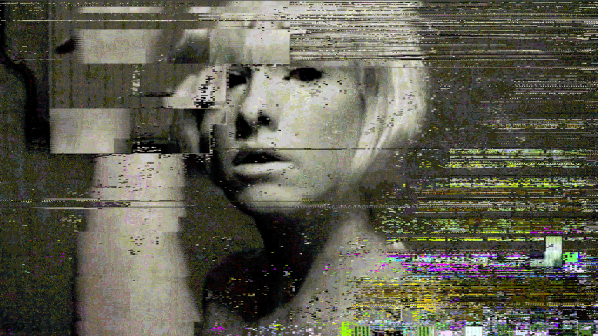
Glitch art also sits in the historical traditions of remix art, detournement and décollage. The knowledge that the image has been altered is key to its aesthetic reception. It’s tempting to talk about the creative destruction of capitalism and to damn Glitch as neoliberal apologia, but that’s too easy and would leave the speaker too comfortable. It is also very tempting to try and place Glitch Art within the traditions of anti-aesthetics or of nominalistic/found art, or to compare the use of image corruption to artistic outsourcing or crowdsourcing in terms of artistic abrogation of authorship. But Glitch is at least curated by the artist, and its generation requires an engagement with the specificities of digital media that they are not supposed to have. The Glitch artist is artisan, not manager, and Glitch Art is sublime, not ordeal.
Panofsky’s extension of the idea of symbolic form to perspective can be applied to Glitch as form. Glitch is effect (a body of effects) that generates *critical* form. The patterns of noise or confounding signals that result from analog or digital image corruption and the effects on displaced sections of the corrupted image are form, presented for positive aesthetic evaluation rather than removed to avoid negative technical evaluation. This complicates Shannon’s diagram of information transmission. Noise is ironised into signal.

The smooth running of inhuman systems is disquieting. Glitch reasserts their materiality. To the extent that it did so to generalise specific failings to a general system in order to make them appear fallible and human this would be kitsch. To the extent that it did so to remind us of older technology, it would be Cory Arcangel-style leveraged nostalgia. And to the extent that it generationally positioned itself against the previous generation’s perception of value in its own culture would be adolescent, social positioning.
Glitch art avoids these failings by producing tension and contradiction rather than jouissance and confirmation. It is disquieting in a way that disturbs the new without allowing a return to an idealized earlier social and aesthetic order, and it is aesthetically creative in a way that does not hide the destruction involved.
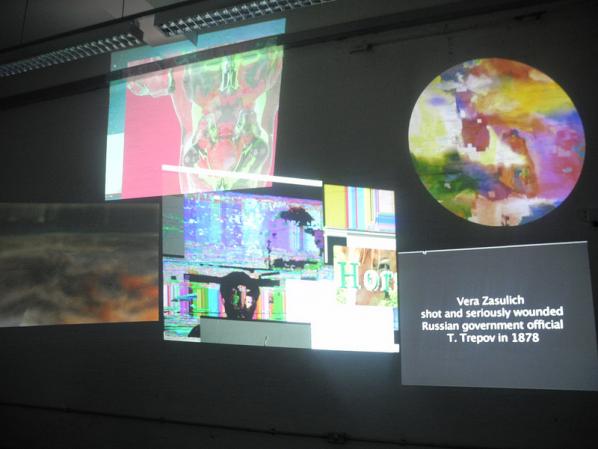
The 8 and 16-bit console software beloved by some Glitch artists is comprehensible to them and to their audiences in a way that 64-bit cloud-based network software is not. The former is therefore a useful artistic proxy for the latter. Defamiliarising the one familiarises the other, and provides a way in to critique its unseen operation through visible means.
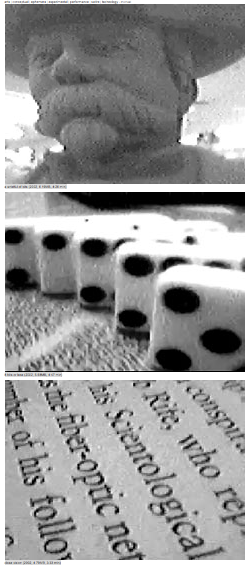
Art makes invisible order tractable by making it visible. Glitch aesthetics are all-over irruptions of the hidden technological order that reveal its operation through its failure. They assert not a reactionary nostalgia but a potential challenge to closure. Engaging with Glitch aesthetics allows us to exercise and develop our regard in a way that increases our fit to the smooth operation and to the catastrophes and contradictions of our post-digital environment.
The text of this review is licenced under the Creative Commons BY-SA 3.0 Licence.
Don’t forget the Glitch Moment/ums exhibition at Furtherfield
Curated by Rosa Menkman & Furtherfield.
Opening Event: Saturday 8 June 2013, 2-5pm
with Glitch Performance by Antonio Roberts at 3pm
http://www.furtherfield.org/programmes/exhibition/glitch-momentums
Opening Event: Seeds Underground Party – Sat 31 August, 2-5pm
Contact: info@furtherfield.org
Visiting Information
ABOUT THE EXHIBITION
ABOUT THE ARTWORKS
ABOUT THE ARTISTS
EVENT: SEEDS UNDERGROUND PARTY
TALK: SHU LEA CHEANG – ART, QUEER TECHNOLOGIES AND SOCIAL INTERFERENCE
LOCATION
SEE IMAGES FROM THE PRIVATE VIEW
WATCH VIDEO OF THE OPENING
This exhibition by Mark Amerika (US) and Shu Lea Cheang (US/FR) at Furtherfield Gallery marks a significant moment for contemporary art. Amerika and Cheang are both ‘net native’ artists. They share many of the obsessions of the growing multitude of artists who have grown up with the net since the early 1990s.
They are also big “names” – internationally established artists who regularly show their work, to critical acclaim, at contemporary art galleries around the world. They have crossed over into the mainstream art world whilst maintaining a critical edge.
Amerika is a media artist, novelist, and theorist of Internet and remix culture, named a “Time Magazine 100 Innovator” in their continuing series of features on the most influential artists, scientists, entertainers and philosophers into the 21st Century.
Cheang is a multimedia artist who works with net-based installation, social interface and film production. She has been a member of the Paper Tiger Television collective since 1981 and BRANDON, a project exploring issues of gender fusion and techno-body, was an early web-based artwork commissioned by the Guggenheim Museum (NY) in 1998.
Both artists continue to shape and be shaped by contemporary networked media art cultures of remix, glitch, social and environmental encounters.
Shu Lea Cheang and Mark Amerika at Furtherfield Gallery provides a physical interface in a local setting in the heart of a North London park to the thriving, international, networked art scene.
The exhibition features Cheang’s UKI viral love installation and Composting the Net. These are shown alongside pieces from The Museum of Glitch Aesthetics (MOGA), Amerika’s latest work in his collaborative series of transmedia narratives.
The exhibition features large stills from two performance installations. UKI viral love is the sequel to Cheang’s acclaimed cyberpunk movie I.K.U. (premiered at Sundance Film Festival, 2000) conceived in two parts – a viral performance and a viral game. The story is about coders dispatched by the Internet porn enterprise, GENOM Corp, to collect human orgasm data for mobile phone plug-ins and consumption. In a post-net crash era they become data deprived and these coders are suddenly dumped into an e-trashscape environment where coders, twitters, networkers are forced to scavenge from techno-waste.
![UKI – Trash Mistress [Radíe Manssour] (2009) by Shu Lea Cheang – Photo by Rocio Campana](http://www.furtherfield.org/wp-content/uploads/2013/05/radie.jpg)
In 2009, Cheang moved into the art studio at Barcelona’s Hangar medialab with 4 tons of E-trash, collected in Barcelona’s city recycling plant in one day. Amidst the rubble of wires, cables, boards, keyboards and computers, along with the coders and the hackers, UKI the defunct replicants are part of the e-trashscape seeking parts and codes to resurrect themselves.
UKI viral love is developed with collaborations and residencies at HangarBCN [artistas residentes] (Barcelona, Spain), Medialab Prado [Playlab] & [Desvisulizar] (Madrid, Spain) and, LABoral Centro de Arte y Creación Industrial [Plataforma Cero] (Gijón, Spain). The work presented at Furtherfield Gallery is the first physical installation of UKI in a gallery setting.
Composting the Net sources Internet net cultures’ accumulated data. It appropriates open (un)moderated mailing list communities, used for collaboration, sharing information and dialogue, and reprocesses the information into a virtual compost. For this exhibition Cheang composts the Spectre mailing list, a channel for practical information and exchange for media art and culture in “Deep Europe”, initiated in August 2001. The abundant info-data is reused and given extra life – an artistic legacy beyond its original purpose. It is also a celebration of the independent spirit of net culture that exists outside of corporate dominated Web 2.0 platforms such as Facebook.
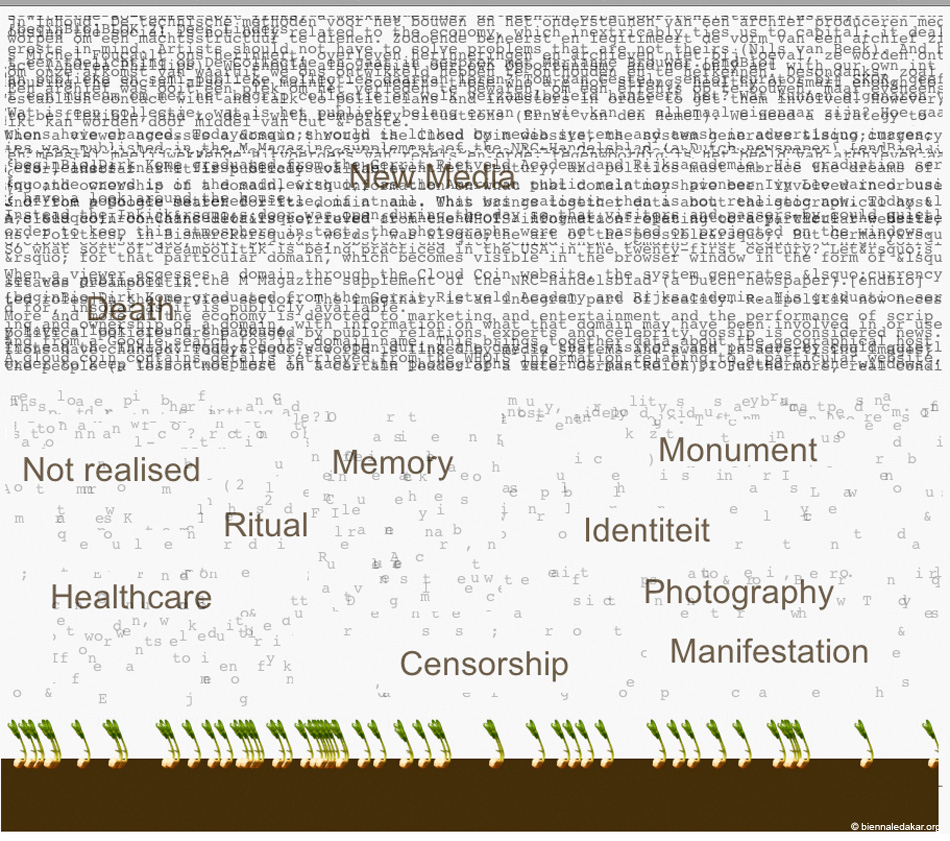
Amerika’s The Museum of Glitch Aesthetics (MOGA) features the work of The Artist 2.0, an online persona whose personal mythology and body of digital artworks are rapidly being canonized into the annals of art history. The narrative traces the life of the artist and his ongoing commitment to a practice of ‘glitch aesthetics’. MOGA features a wide array of artworks intentionally corrupted by technological processes, including net art, digital video art, digitally manipulated still images, game design, stand-up comedy, sound art, and electronic literature.
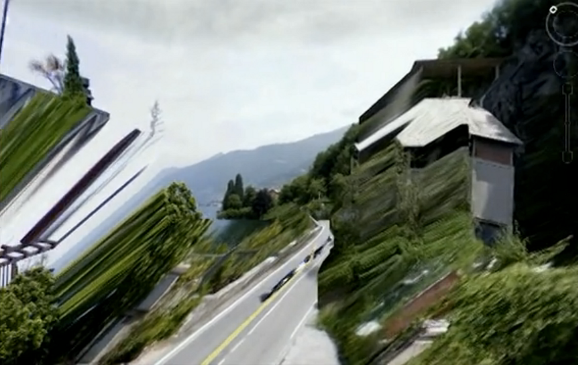
Featured in the Furtherfield Gallery exhibition are three works from the MOGA series: Lake Como Remix, The Comedy of Errors and 8-Bit Heaven.
Museum of Glitch Aesthetics was commissioned by Abandon Normal Devices for the 2012 AND Festival.

In conjunction with Shu Lea Cheang and Mark Amerika exhibition opening, Furtherfield is pleased to host Shu Lea Cheang’s Seeds Underground Party on Saturday 31 August, 2-5pm. Join us for a seed exchange party where packets of seeds change hands and go underground in the fields around Finsbury Park.
+ More information about the Seeds Underground Party.
To coincide with the exhibition, on Monday 02 September The White Building hosts a special talk by Shu Lea Cheang who will be in conversation with curator and writer Omar Kholeif.
+ More information about the Event.
Mark Amerika
Mark Amerika’s work has been exhibited internationally at venues such as the Whitney Biennial of American Art, the Denver Art Museum, the Institute of Contemporary Arts in London, and the Walker Art Center. In 2009-2010, The National Museum of Contemporary Art in Athens, Greece, hosted Amerika’s comprehensive retrospective exhibition entitled UNREALTIME. He is the author of many books including remixthebook (University of Minnesota Press, 2011) and his collection of artist writings entitled META/DATA: A Digital Poetics (The MIT Press, 2007). Amerika is a Professor of Art and Art History at the University of Colorado at Boulder and Principal Research Fellow in the Faculty of Humanities and Social Science at La Trobe University.
Shu Lea Cheang
As an artist, conceptualist, filmmaker, networker, Shu Lea Cheang (USA/France) constructs networked installation and multi-player performance in participatory impromptu mode. She drafts sci-fi narratives in her film scenario and artwork imagination. She builds social interface and open network that permits public participation. Engaged in media activism with transgressive plots for two decades (the 80s and 90s) in New York City, Cheang concluded her NYC period with the first Guggenheim Museum web art commission/collection BRANDON (1998-1999). Cheang has expanded her cross-genre-gender borderhack performative works since relocating in Eurozone in 2000. Currently situated in post-net BioNet zone, Cheang is composting the city, the net while mutating virus and hosting seeds underground parties.
Furtherfield Gallery
McKenzie Pavilion, Finsbury Park
London N4 2NQ
T: +44 (0)20 8802 2827
E: info@furtherfield.org
Furtherfield Gallery is supported by Haringey Council and Arts Council England.
This exhibition is sponsored by Rowans Tenpin Bowl, Carroll/Fletcher and Arts Catalyst.
Featured image: Reason #732 to Learn How to Speak French: The Guy Debord Cineaste streams
McKenzie Wark, author of The Beach Beneath the Street, will give a talk at Furtherfield Gallery about his latest book The Spectacle of Disintegration – Situationist Passages Out of the 20th Century.
Writer and academic Dr Richard Barbrook will give a short introduction to Wark’s work and to Situationism and its relevance to contemporary culture.
BOOK A PLACE
This event has limited availability, to book a place please contact: ale AT furtherfield DOT org
Over fifty years after the Situationist International (SI) first appeared, the group’s restlessly creative experiments in the practice of life – of living, playing and working together – continues to influence activists, artists and writers. From hacker culture and Anonymous, to versions of pyschogeography in the popular writings of Iain Sinclair and Will Self, traces of the whole spectrum of Situationist ideas and practices can be found throughout culture today.
Following his acclaimed history of the SI, The Beach Beneath the Street, McKenzie Wark continues the story after the failures of May 1968. Charting its post-sixties legacy and putting the late work of the Situationists in a broader, deeper context, Wark locates their contemporary relevance, as digital culture opens up new possibilities of experience and new terrains of struggle.
The Spectacle of Disintegration takes the reader through Guy Debord’s late films and his surprising work as a game designer, the political aesthetics of former Situationist T.J. Clark, the Fourierist utopia of Raoul Vaneigem, René Viénet’s earthy situationist cinema, Gianfranco Sanguinetti’s pranking of the Italian ruling class, and Alice Becker-Ho’s account of the anonymous language of the Romany.
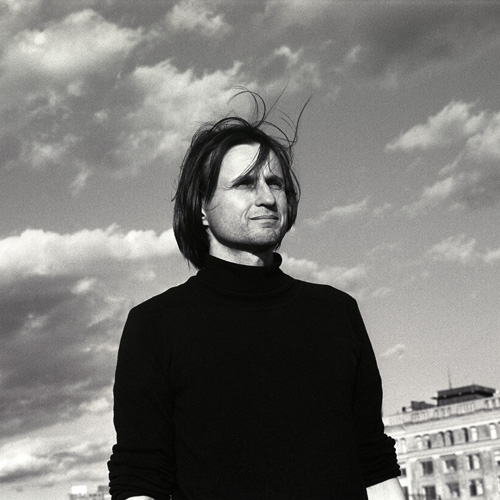
Wark builds on their work to map the historical stages of the society of the spectacle, from the diffuse, to the integrated, to what he calls the “disintegrating spectacle.” At once an extraordinary counter history of radical praxis and a call to action in the age of financial crisis and the resurgence of the streets, The Spectacle of Disintegration recalls the hidden journeys taken in the attempt to leave the twentieth century and plots an exit to the twenty-first.
The Beach Beneath the Street re-presented the Situationist project in response to the demands of our time, to discover the lost entry-points to the routes of play, adventure and resistance in contemporary experiences of communication, architecture, and everyday life. Writing against the boredom induced by the ossified remains of the twentieth-century encounter with art and politics, Wark declares that whilst the Situationists failed to escape the world of spectacle, there might still be hope for us…
More info on Wark’s publication at Verso Books
http://www.versobooks.com/books/1162-the-spectacle-of-disintegration
McKenzie Wark is the author of A Hacker Manifesto, Gamer Theory, 50 Years of Recuperation of the Situationist International and The Beach Beneath the Street, among other books. He teaches at the New School for Social Research and Eugene Lang College in New York City.
Dr Richard Barbrook is the author of Imaginary Futures: From Thinking Machines to the Global Village. In 2008 it won the Marshall McLuhan Award for Outstanding Book of the Year in the Field of Media Ecology [1]. He is a founding member of Class Wargames and co-wrote the script to the group’s film: Ilze Black (director), Class Wargames Presents Guy Debord’s The Game of War [2].
Featured image: A random Geocities homepage, last updated sometime around 1997
Daniel Rourke visits the Photographers’ Gallery in central London and reviews their latest exhibit One Terabyte of Kilobyte Age by artists Olia Lialina and Dragan Espenschied, on THE WALL. Over an eight week period (18 April – 17 June 2013) they feature a non-stop stream of video captures of what they term as the lost city and its archival ruins. A documentation of a past visual culture of the web and the creativity of its users with new pages changing every 5 minutes. The project provides a glimpse into web publishing when users were in charge of design and narration in contrast to the automated templates of Facebook, YouTube and Flickr.
Sifting through a dormant internet message board, or stumbling, awestruck, on a kippleised [1] html homepage, its GIF constellations still twinkling many years after the owner has abandoned them, is an encounter with the living, breathing World Wide Web. At such moments we are led, so argues Marisa Olson, ‘to consider the relationship between taxonomy à la the stuffed-pet metaphor and taxonomy à la the digital archive.’ [2] How such descript images, contrived jumbles of memory and experience, could once have felt so essential to the person who collated them, yet now seem so indecipherable, stagnant, even – dare we admit it – insane to anyone but the most hardened retro-web enthusiast.
On show at London’s Photographers gallery until June 17th is an extensive archival exhibit designed to manage, reveal and keep these experiences alive. One Terabyte Of Kilobyte Age (1tb) is the fifth work to be commissioned for the Photographer Gallery’s ‘The Wall’, curated by two artists long associated with the era of the web the exhibition reveres: Olia Lialina and Dragan Espenschied. Perhaps best known for their book Digital Folklore (2009) the artists and retro-web evangelists have, with the 1tb project, strengthened their status as archivists, an impulse Hal Foster famously argued ‘concerned less with absolute origins than with obscure traces’ [3]. In the same year that Dragan and Olia launched their guide to the folk web, Yahoo! announced they were to close one of its greatest sources of inspiration: Geocities. A vast expanse of personal webpages, many of which had long since slid into html decrepitude, represented for Yahoo! little but financial embarrassment. So ancient and outmoded was Geocities that many contemporary browsers were incapable of capturing its essence, fragmenting images and link rolls randomly across modern laptop screens in an attempt to render their 800×600 pixel aura. Scraping and downloading the terabyte or so of data that made up the Geocities universe was thought important enough by some that a taskforce was put together, made up of technical wizards and wizardesses driven by the profound notion that all existent culture is worth saving. From Olia and Dragan’s webpage:
In between the announcement and the official date of death a group of people calling themselves Archive Team — managed to rescue almost a terabyte of Geocities pages. On the 26th of October 2010, the first anniversary of this Digital Holocaust, the Archive Team started to seed geocities.archiveteam.torrent.
Olia and Dragan’s gesture, to feed the wealth of culture contained in that torrent back to the masses in a palatable form, is a project whose fruition at the Photographer’s Gallery is but a minor part. After downloading, storing and sorting the 16,000 archived Geocities sites the task of exactly how to display them is a problem. Since most browsers would mangle the look and feel of the Geocities pages Olia and Dragan have turned to two main methods of re-representation. The first, let loose on an automated Tumblr blog that updates over 70 times a day, is an ever growing series of front-page screen captures. In this form 1tb bends to the will of a contemporary web user who concerns themselves with likes, reposts and uplinks.
Reflecting on the Tumblr-archive of the torrent-archive of the Geocities-archive, Olia and Dragan’s site contemporary-home-computing highlights particular screen captures that have garnered the most reposts and likes from their Tumblr followers. The results say much for the humour that still drives online culture, but perhaps little about the original contexts from whence those screen captures came. For instance, the screen captures that garner most attention are usually the ones that have failed a part of the retrieval/display/capture process. These ‘obscure traces’ may be GIF heavy sites, half loaded to interesting aesthetic affect, or, perhaps the most telling, captures that show nothing but the empty shell of a Netscape Navigator browser, caught forever like a millennium bug in digital amber.
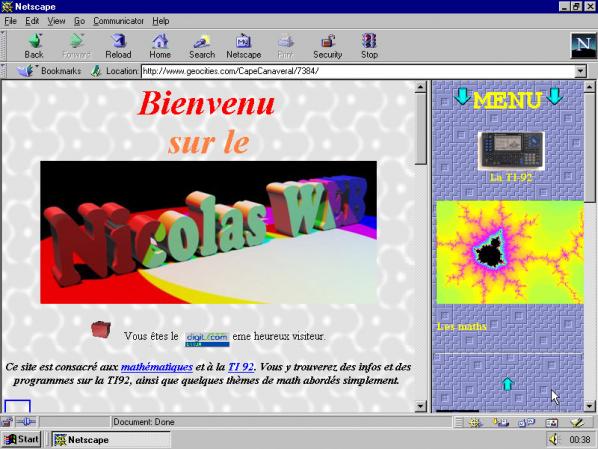
The second mode of capture and re-display takes place at the Photographer’s Gallery itself. Depicted on nine large intersecting HD video screens set into ‘The Wall’ of the entrance-cum-café, one’s first experience of the exhibit is ponderous. The display cycles through the vast array of Geocities homepages at five minute intervals, giving viewers a more than generous dose of 800×600 px nostalgia. Whether the websites that fade into view are a barrage of animated GIFs,insightful commentary on life in the late 1990s, or a series of barren ‘Under Construction’ assemblages, is up to chance.
As a reviewer, sent to derive something from the gallery experience, the wall leered at me with gestures that sent my inner taxonomist into a frenzy. Confronted with such tiny slithers of the archive, in such massive doses, it quickly becomes obvious that the real potential of the project has not been quite realised. Rather than static screen captures The Wall shows cleverly rendered quicktime videos, allowing the GIF whiskers of a Hello Kitty mascot to quiver once more. If you are lucky, or have the patience to watch a long series of the sites fade into view, you’ll be greeted by flickering ‘Welcome’ banners, by cartoon workmen tirelessly drilling, by unicorns cantering and sitemeter bars flashing. But The Wall also feels wholly at odds with its content, caught up in a whirl of web nostalgia that minimises the lives, experiences and aesthetic choices of a defining generation to static flashes that you can’t click on, no matter how much you want to. Archives are living, breathing entities wont to be probed for new meanings and interpretations. Whether depicted as static or faux animated, One Terabyte Of Kilobyte Age is a project with an endless surface, with little way for its viewers to delve deeper.
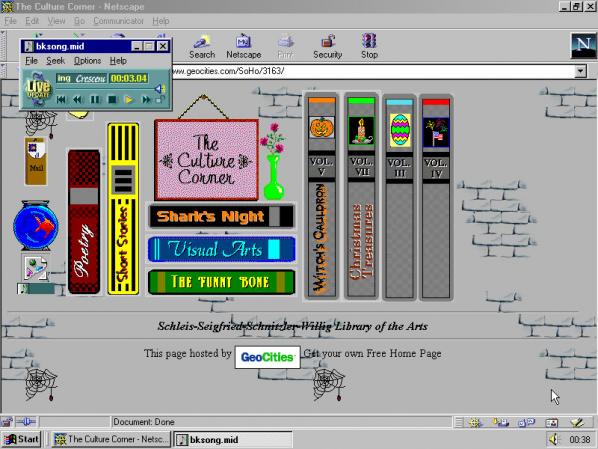
Trawling through the 1tb Tumblr is a much more visceral experience than the one that greets you at the Photographer’s Gallery, but the sense of a journey waiting to be embarked on is lost somewhat in the move to the Tumblr kingdom. Every five minutes offers a new chance to spot similarities on The Wall, to ponder on the origins of a site or, more profoundly, wonder where the people that toiled to make them are now. Before the days of user driven content, of Facebook timelines, and even before RSS feed aggregators, the whole web felt something like this. Today’s web is unarguably more dynamic, with a clean aesthetic that barely shifts behind the waves of content that wash over its surface. But the user has been relegated to shuffler of material.
The Geocities homepage was designed, and kept updated by an army of amateur enthusiasts, organising bandwidth light GIFs in ever more meaningful arrays, in the unlikely event that another living soul would stumble upon them. There is much to love about One Terabyte Of Kilobyte Age, and much to be learned from it given the time. But part of me wishes that the Photographer’s Gallery had given over their trendy café to a row of beige Intel 486 computer stacks, their unwieldy tube monitors better capturing the spirit of the web alá 1996. The clash between the 90s amateur enthusiast and the avid content shuffler of the 2010s is inherent in the modes of display Olia and Dragan chose for their project. Beginning from a desire to save and reflect on our shared heritage, 1tb now represents itself as pure content. An impulse to probe the archive replaced by an impulse to scroll endlessly through Tumblr streams, clicking like buttons on screen captures we hope will distract/impress/outrage our friends until the next cat video refreshes into view.
Go, go to the Photographer’s Gallery tomorrow, grab yourself a coffee and let the Geocities archive wash over you. If you can do it without Instagramming a snap to your friends, without updating your Facebook page with tales of your nostalgic reverie, if you can let the flickering screen captures do their own talking , only then can you claim you truly re-entered the kilobyte age.
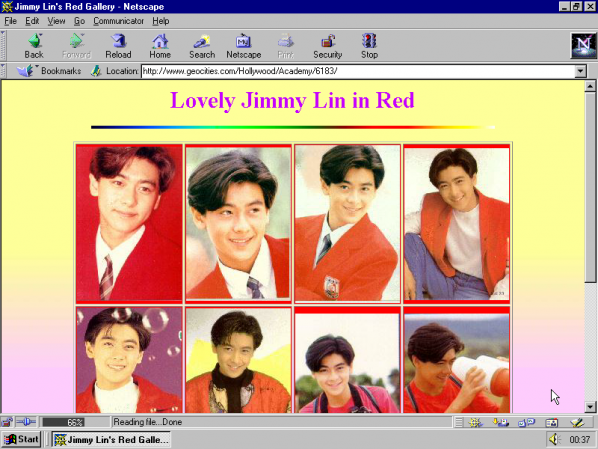
Roger Malina is a physicist and astronomer, Executive Editor of Leonardo Publications (The M.I.T. Press), and Distinguished Chair of Arts and Technology at the University of Texas at Dallas. Dr. Malina helped found IMéRA (Institut méditerranéen de recherches avancées), a Marseille-based institution nurturing collaboration between the arts and sciences.
Mariateresa Sartori and Bryan Connell are two artists recently based at IMéRA. Their work connects with human movement through the city, and addresses the intersection between technology and perception. Recent work by Venice-based Mariateresa Sartori has encompassed drawing and video. Bryan Connell, Exhibit/Project Developer at San Francisco’s Exploratorium, works especially with landscape observation devices and mapping.
Lawrence Bird interviewed Roger Malina, Mariateresa Sartori, and Bryan Connell about the intersection of their work with the city. Images above courtesy: Roger Malina, Rita Gambardella, Bryan Connell.
Lawrence Bird: Roger Malina, in your recent writing you make the case that science is no longer just a field of positive knowledge. Scientists are increasingly open to engagement with the arts — for example artists’ residencies at CERN. You’ve even argued that we’re in a crisis of representation as profound as that of the Renaissance or the 19th century, and this is “driving a new theatricalisation of science.”
Urban life has often been understood as performative – display, performance of social roles, presentation of oneself before others are all part of the public life in cities. How would you say that crisis of representation plays out with regards to this performative dimension of urban life? How is science implicated alongside art in the city, in these conditions?
Roger Malina: One of my arguments for the ‘crisis of representation’ really looks at Renaissance systems of representation — first driven by what the eye could see, and then the eye extended by microscopes and telescopes. These systems of representation were developed that led to a deep contextualising of the viewer in the world.

Today we are in a new situation because so much of our perception of the world comes not through extended senses but, in a real way, through new senses. This has been happening over a number of decades; the first wave of this was at the end of the 19th century when there was a cultural shock with the introduction of x-ray images, infra-red and later radio — which didn’t extend existing senses but augmented them.The most recent series of triggers maybe comes from the nano-sciences and synthetic biology — we now perceive phenomena of which we have no daily experience of (eg quantum phenomena). Field emission microsopy or MRI or some of the other new forms of imaging really don’t build on our existing experience — there are discontinuities and dislocations. Another element is of course the hand held device that leads to techniques for ‘augmented reality’ — I have a phone app that I can point at an aeroplane overhead and it tells me what the plane is, where it came from, and where it is going.
Coming to your question about the city — there is clearly a shift in map construction and reading — from the Cartesian map that we have been acculturated to. The ability to toggle between the bird’s eye view and the “street view”, and the ability to view maps that have multiple layers simultaneously are driving artists and others to develop new forms of representation.

Someone whose work is interesting in this regard is Bryan Connell in San Francisco, he just finished an art science residency at IMéRA in Marseille. He was working on a large urban trail project called GR13 — 300 miles through industrial, urban, sub urban, and wild landscapes (the city had a hell of a time getting right of way through these areas). Bryan is currently working on a web site for the Marseille European City of Culture events, where he’s working on some of these questions of representation. The project involves a collective of ‘artist-walkers’ that I think fits right into this question of performativity.

LB: There’s currently a great deal of interest in the connections between representation, digital technology, and politics, for example the current Hybrid City II conference in Athens. As you’ve pointed out, these often underline the connections between what digital media mean for artists and what they can contribute to citizens — what’s emancipatory about them. What can art offer civil life in this context? Are there any conflicts or contradictions in that relationship?
RM: One pertinent example is the work of Bruno Giorgini, a physicist, and Mariateresa Sartori (visual artist) who work on the “physics of the city.” They were recently in residence in the IMéRA Mediterranean Institute of Advanced Study which hosts artists and scientists in residence who want to work with each other. We now have access to incredible amounts of data on human mobility (pedestrian and various forms of transportation) so it is now possible to study human behaviour quantitatively. Sartori discovered that she could tell many things about a person just through the morphology or topology of their movements through the city. Girogini discovered that people’s movements could be predicted at the 80% level, but 20% of the time he had to introduce what he called ‘social temperature’; in discussions he also referred to this as a ‘free will’ parameter. Barabasi has found similar results analysing cell phone GPS data of individuals. So its interesting to think of the development of cities as 80% predictable and 20% serendipitous. This of course then highlights the role of the arts and culture in making cities part of the cultural imaginary that drives people to make choices. Recently Max Schich here at the University of Texas has analysed very large data bases looking at where prominent people are born and where they die over the last 500 years. Immediately you can see how suddenly certain cities become cultural ‘attractors,’ say the way Berlin or Hong Kong are now. And of course cities are now trying to ‘design’ this into the development of cities. Here in Dallas there has been a huge investment in the ‘arts district’ and in institutions of higher learning in the belief that healthy cities require such investments. See for instance the US National Endowment for the Arts Program; there are many similar programs in Europe.
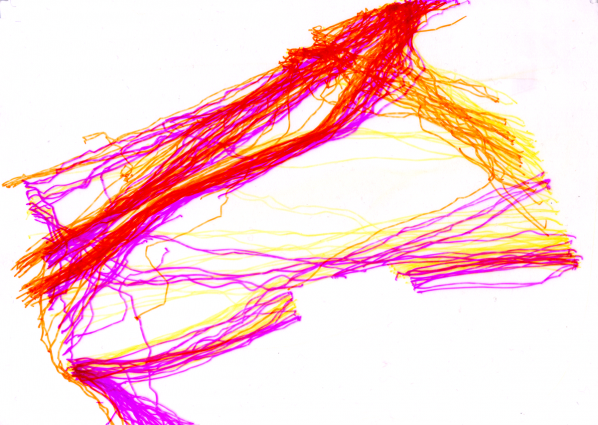
This doesn’t yet address your ’emancipation’ question. One of the things that is happening is that we are becoming a data taking culture (see the recent literature on ‘big data”). The cell phone has transformed every citizen (that has one) into a data taker. Of course much of this data is used by companies for marketing objectives. But many citizen groups are now able to take data for their social objectives. Some of this is captured by the ‘citizen science’ movement ( one example is here). There have been good examples of citizen’s taking data (on pollution, on illegal activities etc.) and then being in a position to challenge ‘authorities’ of various kinds whether scientific, political or economic (see for instance the way citizen groups have mobilised to collect data after man-made disasters such as oil spills, or illegal logging in forests).
A few years ago I wrote an open data manifesto which argued that I would like to advance a new human right and a human obligation:
1. Each of us has the right to the data that has been collected about ourselves and our own environment.
2. Each of must contribute to the knowledge construction by collecting and interpreting data about our own world.
Most scientific data collection is funded by public tax payer funding. The public has a fundamental right to all data collected and funded by public tax money.
LB: How do you imagine an artist’s training will change as these conditions evolve? And a scientist’s — could we foresee any kind of convergence?
RM: One interesting development is a cohort of hybrids, who have one degree in science or engineering and one in art and design ( for example J.F. Lapointe, a researcher at the National Research Council of Canada with degrees in molecular biology and dance) or degrees in Science or engineering and employment in art or design (like myself or Paul Fishwick, a key figure in the field of aesthetic computing). There’s been an emergence of art/science Ph. D. programs that take students from art or design or science or engineering. I suspect this cohort will grow over the coming years.
LB: Mariateresa Sartori, your IMéRA research project with Bruno Giorgini focused on mobility in the city. Can you tell us a little bit about how your work and Dr. Giorgini’s work complemented each other? What kind of evidence did you bring to the table as an artist?
MS: The project I worked on with Bruno Giorgini developed an exploration that began with earlier work in Venice. There I created a series of drawings using a rudimentary, even crude procedure: I traced out the movements of each pedestrian in the Piazza San Marco, drawing their paths with a felt-tipped pen on a transparent sheet placed over the computer monitor. I then faithfully transferred the results onto ordinary large sheets of white paper. The lines thus drawn in different directions created a space, drawing a St. Mark’s Square that is actually not there. As well as the actual physical space, it is also a drawing of our individual and collective manner of relating to space. Each single path determines the route of others, in a continuous and reciprocal game of influences that makes our collective progress.
At IMERA we developed this method for a new environment, a city more ethnically and culturally plural than Venice. Together we set up procedures and tools for collecting data about mobility networks there: nodes, links, chronotopi. These drew on the work of Bruno Giogini’s Laboratorio di Fisica della Città of the University of Bologna. We shot videos focusing on specific behavioural patterns where strategies of shifting, approaching and distancing play a decisive role; and we were also attracted by the places and situations of pedestrian congestion. Using the same technique as in Venice, I translated these into drawings of movement. These again created a space that marks out squares and places which are actually not there, each synthesizing space, time and humanity in a single image.

LB: Is there an emancipatory or governance-related dimension to this work? Degrees of mobility have human rights implications. How does your work as an artist connect with these rights, especially the notion of the right to the city?
MS: The first goal when I work as an artist observing reality is observation, i.e. a way of observing that implies a new attention. The result is always instructive because I do not have particular expectations. After lines have been traced following my process, something always emerges and what emerges can be a useful and indicative element for the emancipatory dimension of the urban condition. I would say that Bruno Giorgini is more involved in that dimension than me, especially in the notion of the right to the city.
LB: There’s a current preoccupation among researchers in a number of fields with the relationship between representation, often engaged with/through technology, and urban life. How has your latest work connected with this relationship?
MS: My way of working with technological instruments such as computers is very particular and limited. I use the computer as a technical tool strongly mediated by the senses, i.e. by human perception. I am very interested in modalities of perception: they are so imperfect, yet sufficiently perfect to make our existence possible.
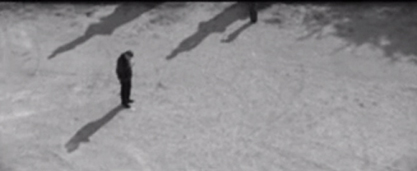
LB: You described the way you work with technological instruments as “particular and limited.” Another way to look at this is that you make the technological system slow down by inserting yourself into the process… and the result is your drawings, which still movement. Might this be one role for art — to insert the human into the machine? Much net art focuses on flows of information, virtual movement, and representing that. While not quite glitch art, do your representations of movement in some sense intentionally put a brake on the machinery?
MS: I find your words enlightening, you describe my way of working better than me….. Actually I insert myself into the technological process…..but this is not a statement of a position against technology.
I can say that what interests me the most (and art’s relation to science is just one instance of this) is the thread of connection between specific cases and general theory, between subjective and objective. Between, on the one hand, the singularity of events and, on the other, general theory. The individual’s experience is singular, unique; but there is always a thread, even if fine, that leads each individual case to a wider generalisation. What interests me is this incessant – indispensable as much as concealed – mental activity that every day leads us to search for generalisations and regulating principles. What interests me is the human tendency to comprehend phenomena, even the most complex, via schematic representation, via a generalisation that leads to the identification of organising principles. I mean “Comprehension” in very wide sense, where emotions and feelings participate too in embracing reality, including reality. Maybe in this sense I put the human in the machine…
There is a discrepancy between how we perceive reality, mediated by our senses, and the truth decreed by science. On a rational level we recognize the truth, but we cannot internalize in a deep way this knowledge; this is beyond our human capabilities. I think that in my artistic research I find myself in this deep discrepancy.
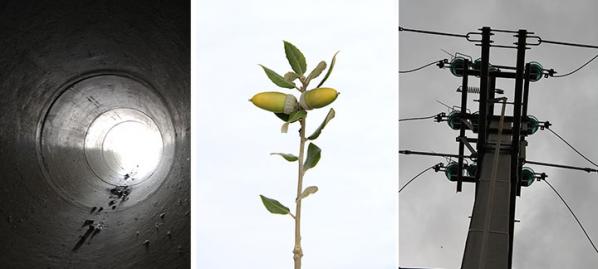
LB: Bryan Connell, your work in Marseille addresses, among other concerns, technology and its relationship to nature. Do you see the urban environment as playing any particular role in that relationship — of having a particular status in our negotiation of it?
Bryan Connell: One of the things that intrigued me about the metropolitan hiking trail in Marseille is the way it plays with our sense of meaning and value in the exploration of contemporary landscapes. Most long distance hiking trails are designed to lead out of urban environments, not into them. We don’t usually think of carrying a field guide that illustrates the taxonomy of fire hydrants, electrical pylons, or urban weeds on an extended city or suburban walk. That kind of engaged, systematic attention is usually reserved for wild natural terrains. From a traditional environmental perspective, the less altered a place is by human technology, the more scientifically interesting, ecologically exemplary, and aesthetically rich it’s going to be. Without undermining the validity of ever-present environmental concerns, the trail functions as an invitation into a more challenging and complex relationship to the emerging para-wilds and novel ecosystems that are arising at the intersection of the natural world and the technological infrastructure of the built environment.
Similarly, the Marseille trail doesn’t really focus on the kinds of urban sites that are traditionally thought of as having significant historic, architectural, or cultural interest. Instead, the trail route incites visitors into an exploration of the everyday environments and working landscapes of the contemporary urban transect – a world of parking lots, freeway overpasses, suburban developments, abandoned railways, and semi-rural wildlands.

Landscape ecologist Earl Ellis argues that to better navigate our way through the current geohistorical epoch, the Anthropocence, we must expand the traditional ecological concept of regional biomes into the parallel notion of “anthromes” – biomes that are complex interconnected melds of human technology and natural systems. In a sense, the GR 2013 Marseille trail is a sketch or system of exploratory paths into what a publically accessible, anthrome based urban ecology observatory might look like.
LB: A similar question is in relation to the image, especially sequential images. What does it mean for our negotiation of the relationship between nature and technology? Between science and art?
BC: We increasingly live in a networked digital metropolis with an image and information density that both mirrors and exceeds the high population densities of the physical metropolis. One topic of particular interest to me is the role these images play in transfiguring the quality of our desire. To what extent do scientific or aesthetic images that increase our ability to find meaning and satisfaction in observing and understanding urban landscape phenomena mitigate our need to physically alter the landscape to conform to an idealized image of what it should or shouldn’t be?
For example, the Marseille metropolitan trail didn’t require much physical alteration of the terrain – it’s a conceptually designated network of pre-existing roads, paths, streets and highways. The trail’s function is not to alter place, but alter the cognitive landscape of trail users so they have a richer sense of place. If you are fascinated by the diversity of ways a para-wild plant population has adapted to a technologically modified environment, do you need to engage in an energy and material intensive re-landscaping of that environment with a palette of conventional horticultural plantings to make it more “beautiful”? In this sense, constructing interpretive images of landscape is more than a way of augmenting a recreational hiking experience, it’s a way of shifting and re-configuring what we think we have to consume and alter to find meaning and vitality in contemporary landscapes.
http://uranus.media.uoa.gr/hc2/
Hybrid City is an international biennial event dedicated to exploring the emergent character of the city and the potential transformative shift of the urban condition, as a result of ongoing developments in information and communication technologies (ICTs) and of their integration in the urban physical context. After the successful homonymous symposium in 2011, the second edition of Hybrid City has grown into a peer reviewed conference, aiming to promote dialogue and knowledge exchange among experts drawn from academia, as well as artists, designers, researchers, advocates, stakeholders and decision makers, actively involved in addressing questions on the nature of the technologically mediated urban activity and experience.
The Hybrid City 2013 events also include an online exhibition and workshops, relevant to the theme
Hybrid City Conference 2013: Subtle rEvolutions will take place on 23-25 of May 2013.
The Hybrid City II events will take place at the central building of the National and Kapodistrian University of Athens.
This document was edited with the instant web content composer. Use the online HTML editor tools to convert the documents for your website.